

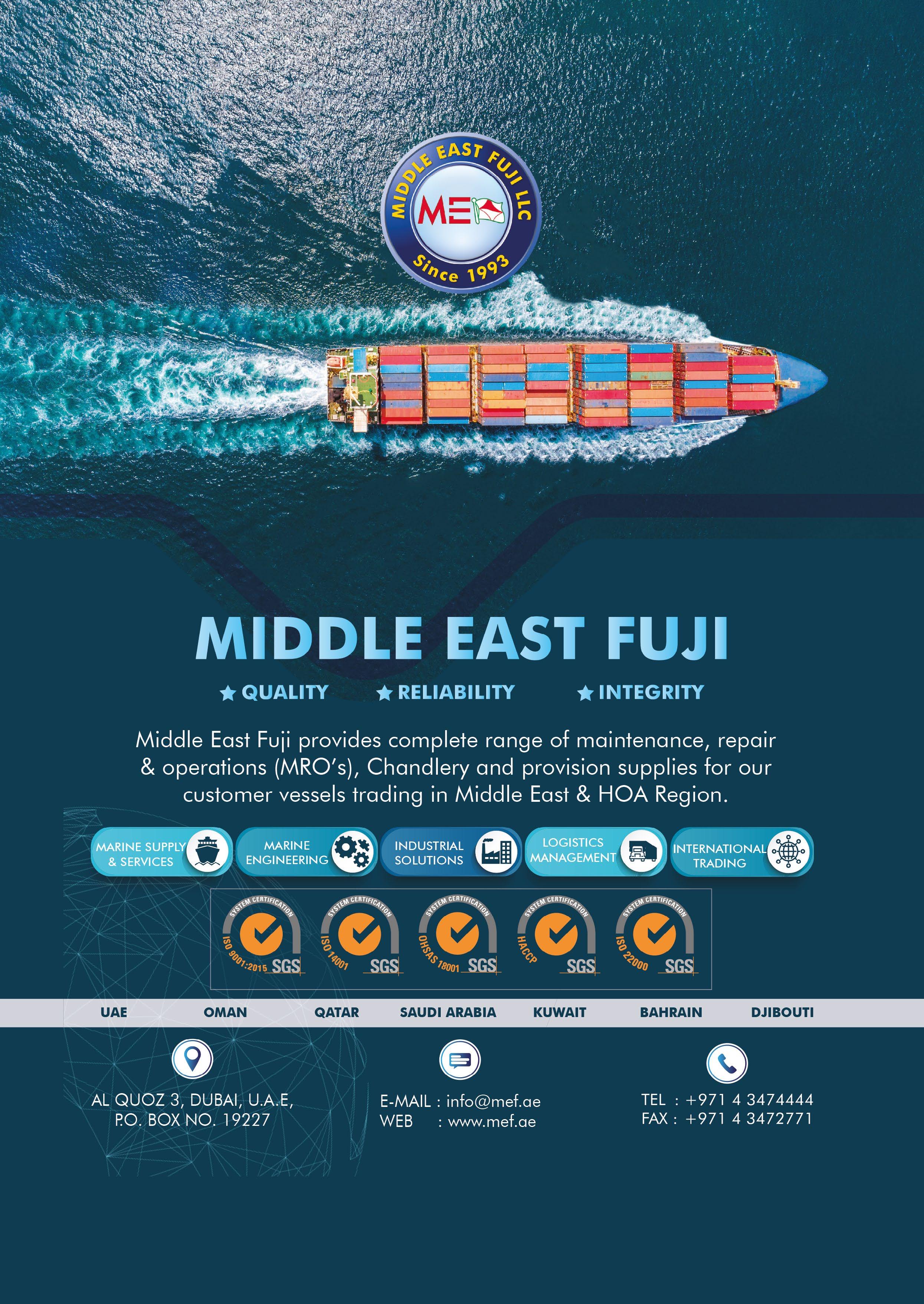

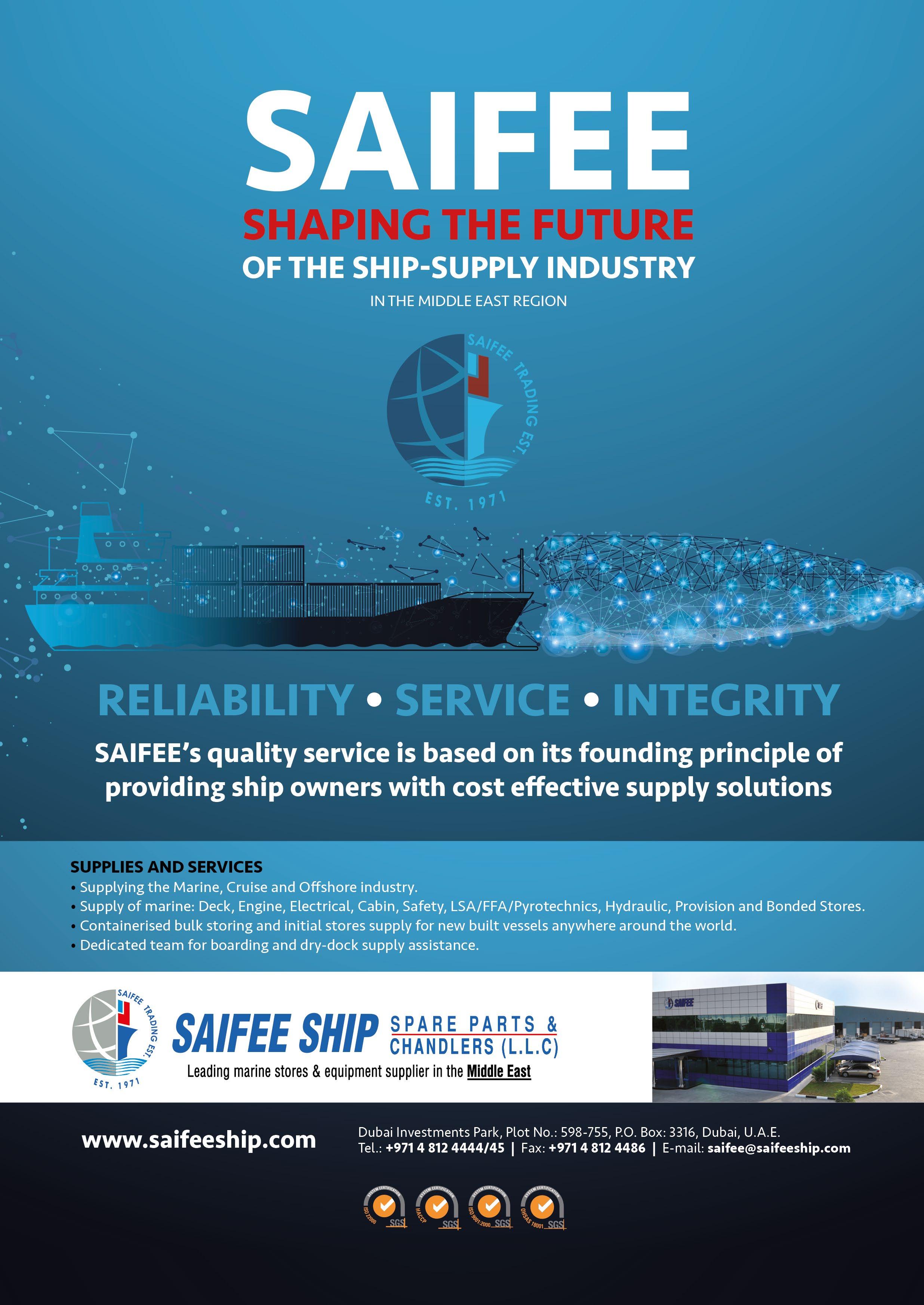

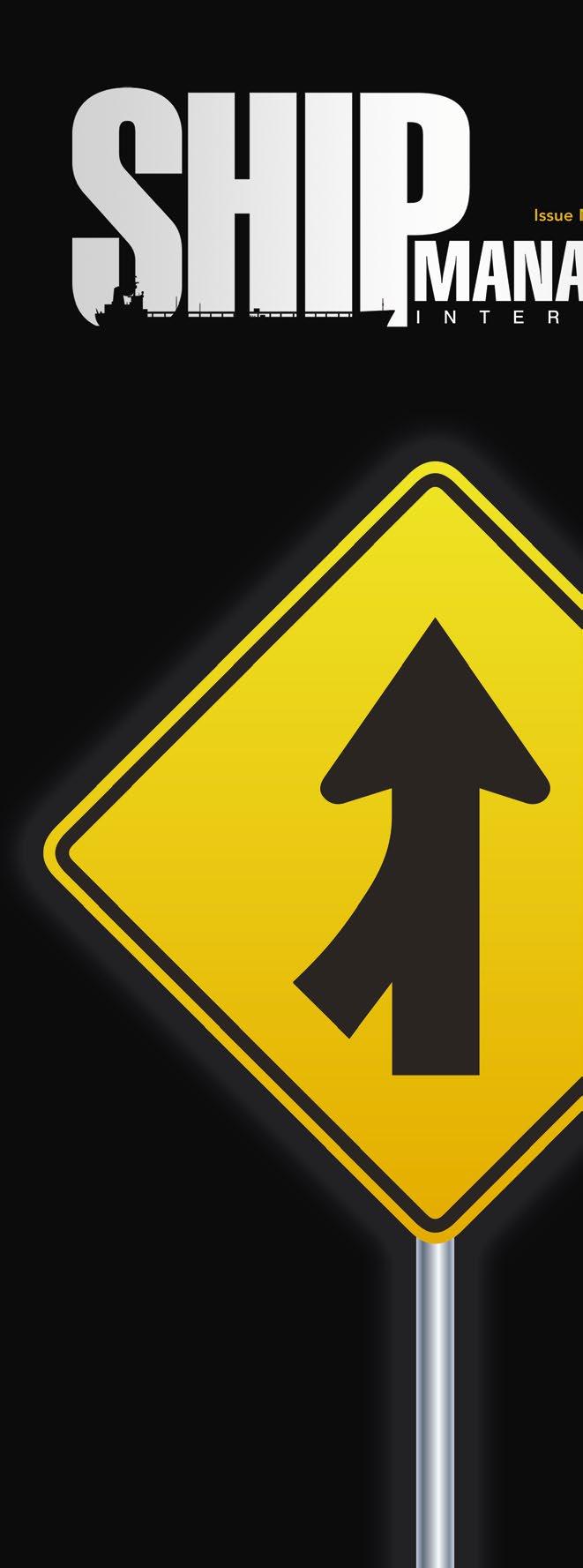

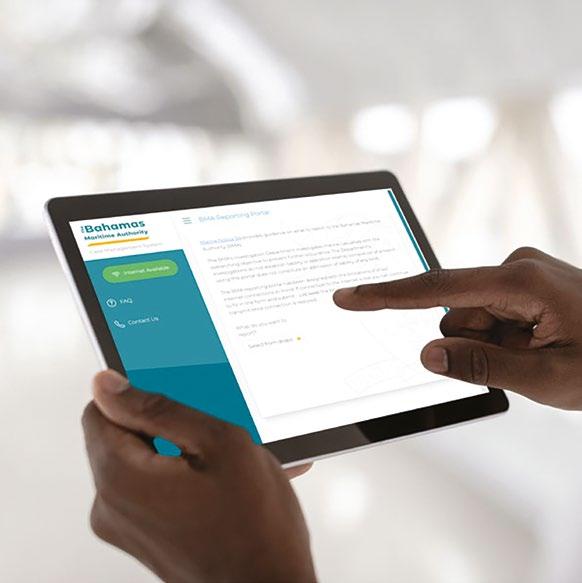

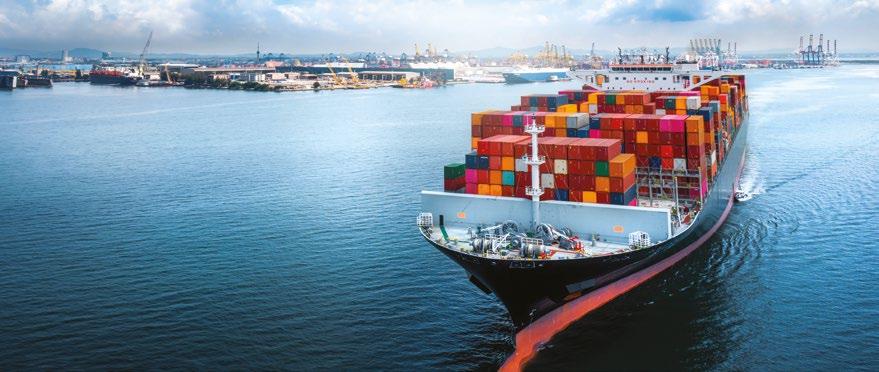
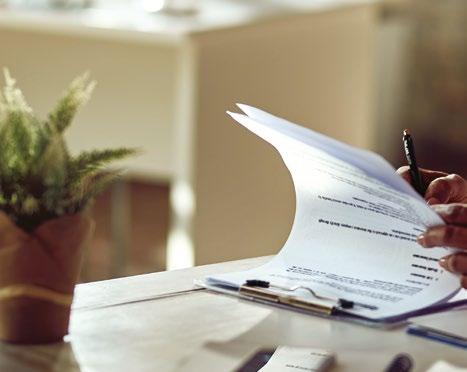

ISSUE 101 JANUARY/FEBRUARY 2023 THE MAGAZINE FOR THE WORLD’S SHIP OWNERS & SHIP MANAGERS STRAIGHT TALK DISPATCHES FIRST PERSON NOTEBOOK Cover Story The urge to merge 8 – The urge to merge ...or go separate ways 19 – Adaptability and forward thinking are core shipmanagement skills 22 – The urge to merge 26 – Thomas Nordberg Managing Director, The Swedish Club 10 – LISW23 set to break all records at 10-year anniversary edition 12 – Maritime Single Window: the countdown begins 14 – Wilhelmsen Ship Management teams with Affinity to offer EU ETS services 16 – The BMA launches comprehensive online incident reporting tool 20 – ITIC: It’s a blame culture – so be careful what you say! Get our magazine digitally. Scan QR code and fill in your details to receive. 22 INTERMANAGER OUTLOOK 5 Issue 101 January/February 2023 Ship Management International
P&I and Law
VIEWPOINT
29 – Beware befriending stowaways!
30 – Legal issues facing nuclearpowered commercial ships

– RINA develops LNG and hydrogen pioneering propulsion concept
FUELS
35 – Biofuels – no need to wait on infrastructure to decarbonise
SHIP REGISTRIES
44 – Ship registers and classworking together more closely than ever
– Palau rises up the rankings

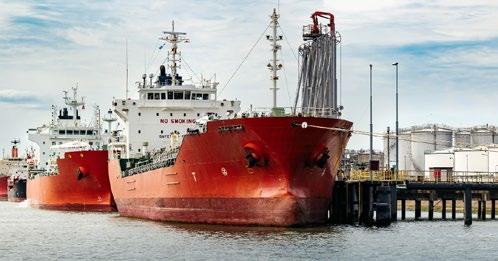
SMI INDUSTRY WEBINAR
– Covid impact switches the focus to quality managers 73 – MTM Ship Management - an owner’s perspective 74 – ABS Singapore makes simulation a reality for system modelling 55 – Ports need to Digitise if they are to cut costs and cut emissions ALTERNATIVE
CREW WELFARE
38 – Lingua franca of the sea opens door to opportunities
42 – Leveraging data to drive progress on Diversity, Equity and Inclusion (DEI)
REGIONAL FOCUS

89 – Getting a grip on the ‘green energy gap’ : Dr Martin Stopford
ANALYSIS
90 – Car carrier market at full throttle
TECHNICAL
94 – ‘Greener’ designs for bulkers, the commodity carriers
MARITIME SAFETY
96 – Prevention at Sea: using Virtual Reality to help minimise accidents
98 – Our pick of the most coveted creations Singapore 64 – Preparing for a next-gen future
OBJECTS OF DESIRE
– Bringing you the best in arts & culture
– Our regular diary section
LIFESTYLE
– Open our selves that we may see, feel, hear and taste wonderful things
Next
companies react? For advertising enquiries, please contact Sales by emailing sales@elabor8.co.uk You can also keep abreast of news and subscribe to our daily newsletter at shipmanagementinternational.com

SHIP MANAGEMENT INTERNATIONAL – ISSUE 101 JANUARY/FEBRUARY 2023 THE MAGAZINE FOR THE WORLD’S SHIP OWNERS & SHIP MANAGERS
102
AD HOC REVIEW
80 – Isle of Man Round Table Debate
78
100
72
52
BUSINESS
Classification 32
ALTERNATIVE VIEWPOINT
6 Ship Management International Issue 101 January/February 2023
issue The March/April 2023 issue of SMI is to receive bonus distribution at Nor Shipping and during both UAE Maritime Week and Gibraltar Maritime Week and will examine some of the key technical and geopolitical challenges facing shipping. Regional reports will include a focus on Scandinavia, a world leader when it comes to maritime green tech, as well as on Gibraltar, traditional gateway to the Med and meeting point for Europe with North Africa
vital
movement
seafarers
travel
worst
pandemic
crew change
may
normal’
shipping
The issue will also feature SMI’s ever popular Crew Travel Round Table, where publisher Sean Moloney will discuss
issues affecting the
of
with
management experts. The
of the
and
crisis
be over, but has the travel market reverted to its ‘old
and if not how should
January/February 2023
STRAIGHT TALK
The urge to merge ...or go separate ways
The past three months in the shipping world have been dominated by news of wouldbe mergers and separations.
On the combining front, the cover story for this issue is the planned tie-up between OSM Maritime Group and Thome to form a new heavyweight ship manager, OSM Thome. Speaking exclusively to SMI, the two CEOs give their rationale for this proposed union, and for mergers in general.
In similar fashion, we interviewed the main protagonists behind the coming together of P&I clubs North and Standard last year (see SMI 96), that marriage now set to take effect from Q2 onwards.
And as this issue went to press, news breaks of the ‘merger between equals’ of leading bunker suppliers BMS United, Bunkernet and SBI that they say will form “a larger and financially more
reliable company” able to offer “more comprehensive” services, especially at a time of unprecedent change in the market – which serves as a fair enough summary of a root cause behind this latest crop of mergers.
In this context it is worth remembering that something similar happened in the aftermath of the 2008/9 financial crisis, when the phrase was coined of ‘huddling to stay warm’.
But merger plans don’t always work out, as shown by the acrimonious end to the proposed merger between tanker giants Frontline and Euronav that has played out over recent months. Likewise, liner behemoths Maersk and MSC have called time early on their 2M vessel sharing agreement due to run another two years, both now preferring to go their separate ways, Maersk also deciding to fold its
Hamburg Süd and Sealand brands into the uniform corporate identity for good measure.
The latter developments suggest that critical mass is a good enough antidote to the ‘urge to merge’. Aided and abetted, of course, by market fortunes, which on the one hand have seen container giant benefit from massive windfall profits over the past two years that allow then to finesse their own individual corporate strategies, while at the same time the tanker market has completely turned around in owners’ favour since the Euronav/Frontline merger was first mooted a year ago and looks set to stay that way awhile.
To paraphrase that cod political saying (referencing ‘the economy’) coined back in the early 1990s: ‘It’s the shipping markets, stupid’. l
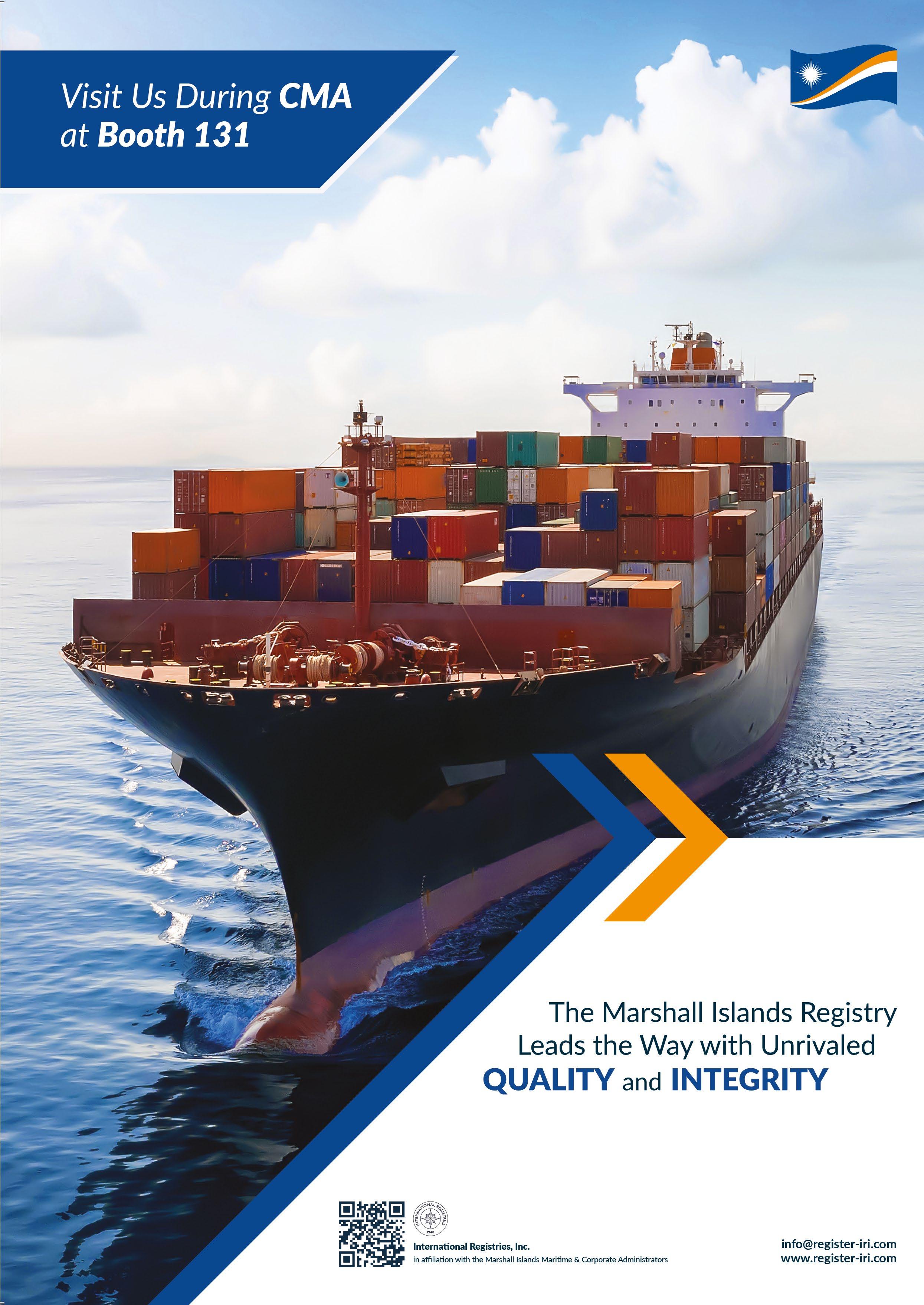
Issue 101 The shipping business magazine for today’s global ship owners and ship managers Join the debate @ShipManInter Visit our website www.shipmanagementinternational.com Download our App Ship Management International Wingbury Courtyard Business Village, Upper Wingbury Farm, Wingrave, Bucks, HP22 4LW, United Kingdom Printed in the UK by Warners Midlands plc. Although every effort has been made to ensure that the information contained in this publication is correct, Elaborate Communications accepts no responsibility or liability for any inaccuracies that may occur or their consequences. The opinions expressed in this publication are not necessarily those of the publishers. All rights reserved. No part of this publication may be reproduced whole, or in part, stored in a retrieval system or transmitted in any form or by any means without prior permission from Elaborate Communications. Sales Enquiries Julian Berry Phone: +44 (0) 1296 682 051 Email:jberry@elabor8.co.uk Editorial Bob Jaques Phone: +44 (0) 1296 682 089 Email: editorial@elabor8.co.uk
bjaques@elabor8.co.uk Finance Lorraine Kimble Phone: +44 (0) 1296 682 051 Email: accounts@elabor8.co.uk Publisher: Sean Moloney Editor: Bob Jaques Sales Manager: Julian Berry Finance: Lorraine Kimble Design and Layout: Diptesh Chohan Regular Contributors: Michael Grey Felicity Landon Margie Collins Ema Murphy Motoring Journalist: Rob Auchterlonie Technical Editor: David Tinsley Editorial contributors: The best and most informed writers serving the global shipmanagement and shipowning industry. Published by 8 Ship Management International Issue 101 January/February 2023
|
Email:
Notebook
LISW23 set to break all records at 10-year anniversary edition

London International Shipping Week 2023 (LISW23) was delighted to welcome the new Maritime Minister Baroness Charlotte Vere to its launch event held at the London offices of Norton Rose Fulbright in late January, attended by some 220 guests from across all UK and international maritime sectors.
In one of her first public speeches in her new role, the Minister pledged to put maritime “front and centre” in Government, highlighting her three key priorities for UK maritime as being: economic prosperity, decarbonisation and seafarer protection.
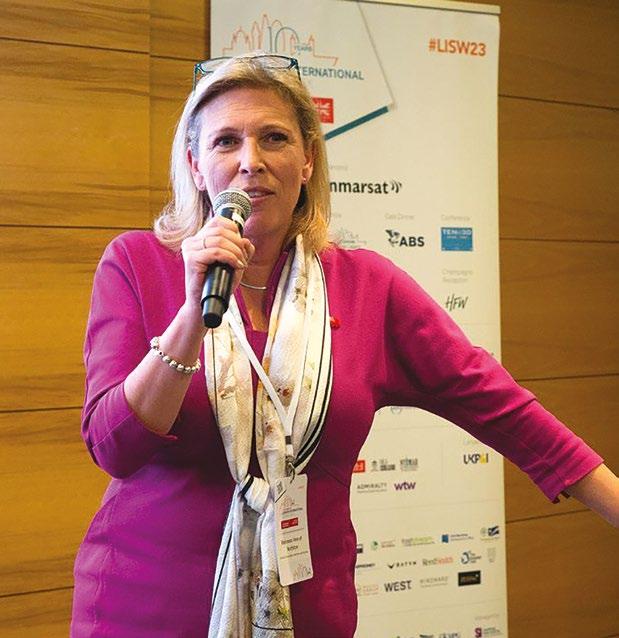
Baroness Vere said: “British leadership in maritime matters, and London International Shipping Week is a unique opportunity to put our talents in the spotlight and show the world just how much the UK has to offer.
“I look forward to 2023’s 10-year anniversary event which marks a renewed and reinvigorated effort to champion our world class maritime sector to the world, along with a commitment to promote the boundless opportunities for UK wide growth and investment that come with it.”
With an anticipated 400+ individual events run by over 100 Sponsors and more than 100 Supporting Organisations – as well as charities and Government departments – LISW23 is already well on course to be by far the biggest and most popular in its decadelong history.
Denis Petropoulos, Chair of the LISW23 Board of Advisors, described LISW as “where the United Kingdom, together with its traditional maritime institutions, with their rich history and long experience in maritime and
offshore services, will showcase many of their world-leading maritime offerings.”
Outlining the themes for this year’s events he said: “LISW23 will focus on ‘Reframing Risk in a Complex Market’, covering the topical issues of compliance, decarbonisation, security, human resources, business and technology – to name but a few. And with this comes the commercial realities of managing and operating daily global seaborne trade of essential commodities which cannot simply be reset to suit social and political demands. Actually it cannot stop at any time as shipping services billions of customers on our planet every day.”
Welcoming guess on behalf of host Norton Rose Fulbright, Simon Hartley, global co-head of NRF’s shipping group, noted how important LISW has become in the international maritime calendar. “LISW has discouraged complacency in UK maritime and enabled it to meet the challenges from other spheres,” he said. “We are extremely grateful for the LISW
initiative. It keeps the UK maritime sector on the front foot.”
Joining via satellite link from Greece, shipowner Dr Nikolas Tsakos, CEO of Tsakos Energy Navigation (TEN), described how he has been an “enthusiastic supporter of London International Shipping Week, since its start in 2013. He stressed it was important for London to “maintain its dominance as a major shipping hub”.
Separately, The UK Government announced in early February that £77 million funding would be made available for maritime green tech projects under a ‘Zero emission vessel and infrastructure’ (ZEVI) competition.
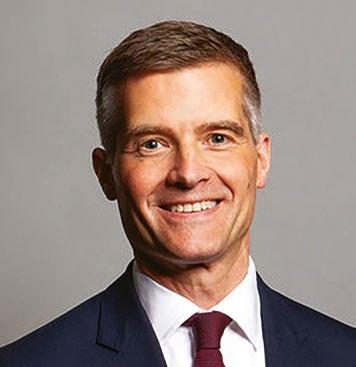
Transport Secretary Mark Harper (pictured) commented: “When it comes to tackling climate change, we are taking action on all transport modes, which is why we’re making sure our worldleading maritime sector has a greener future. This multi-million-pound investment will help the latest tech ideas become reality and ensure UK waters will play host to green cargo ships, ferries and cruises in the next few years.”
London International Shipping Week 2023 will take place from September 11 to 15 throughout various locations in London and the UK. The LISW23 Headline Conference will be held at the London headquarters of the International Maritime Organization on Wednesday 13 Sept, while the glittering gala dinner on Thursday 14 Sept is hosted for the first time beside the River Thames at ‘Evolution London’ in Battersea Park and is scheduled to go on late into the night. l
For further information about LISW23, including event details, sponsorship opportunities and delegate guidance please see the dedicated website: www.londoninternationalshippingweek.com
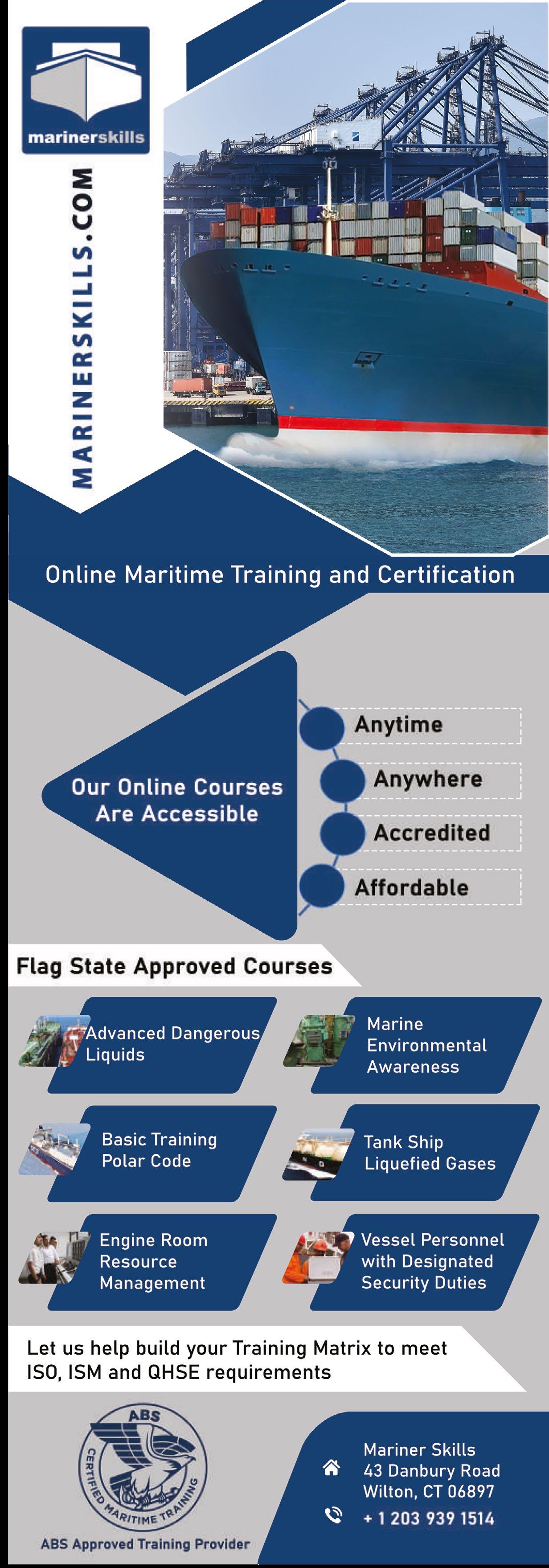
10 Ship Management International Issue 101 January/February 2023
Baroness Charlotte Vere UK Maritime Minister
Maritime Single Window: the countdown begins
From 1 January 2024 it will be compulsory for ports around the world to operate Maritime Single Windows (MSWs) for the electronic exchange of information required on ships’ arrival at a port, their stay and their departure.
This mandatory change follows the adoption by the relevant International Maritime Organization (IMO) committee of amendments to the FAL (Facilitation of International Maritime Traffic) Convention last May. With only one year to go until the implementation date, IMO hosted a two-day Symposium on the subject, jointly organized by IMO, IAPH and BIMCO, with the support of the International Port Community Systems Association (IPCSA), this January.
A host of experts from across the shipping and ports sectors explored how MSWs fit with national digitalisation strategies, the best approach to designing and implementing MSWs to suit Member States’ maritime trade facilitation objectives and objectives to achieve the greening of shipping. Also discussed were the concept of interoperability and understanding how to apply industry standards to harmonize electronic data exchanges, as well as port call data requirements, and the development of strategic partnerships.
Opening the Symposium, IMO Secretary General Mr Kitack Lim called mandatory MSWs “a significant step towards accelerating digitalisation in the maritime trade” as well as “an opportunity for all stakeholders in shipping, and a necessary step forward.” l
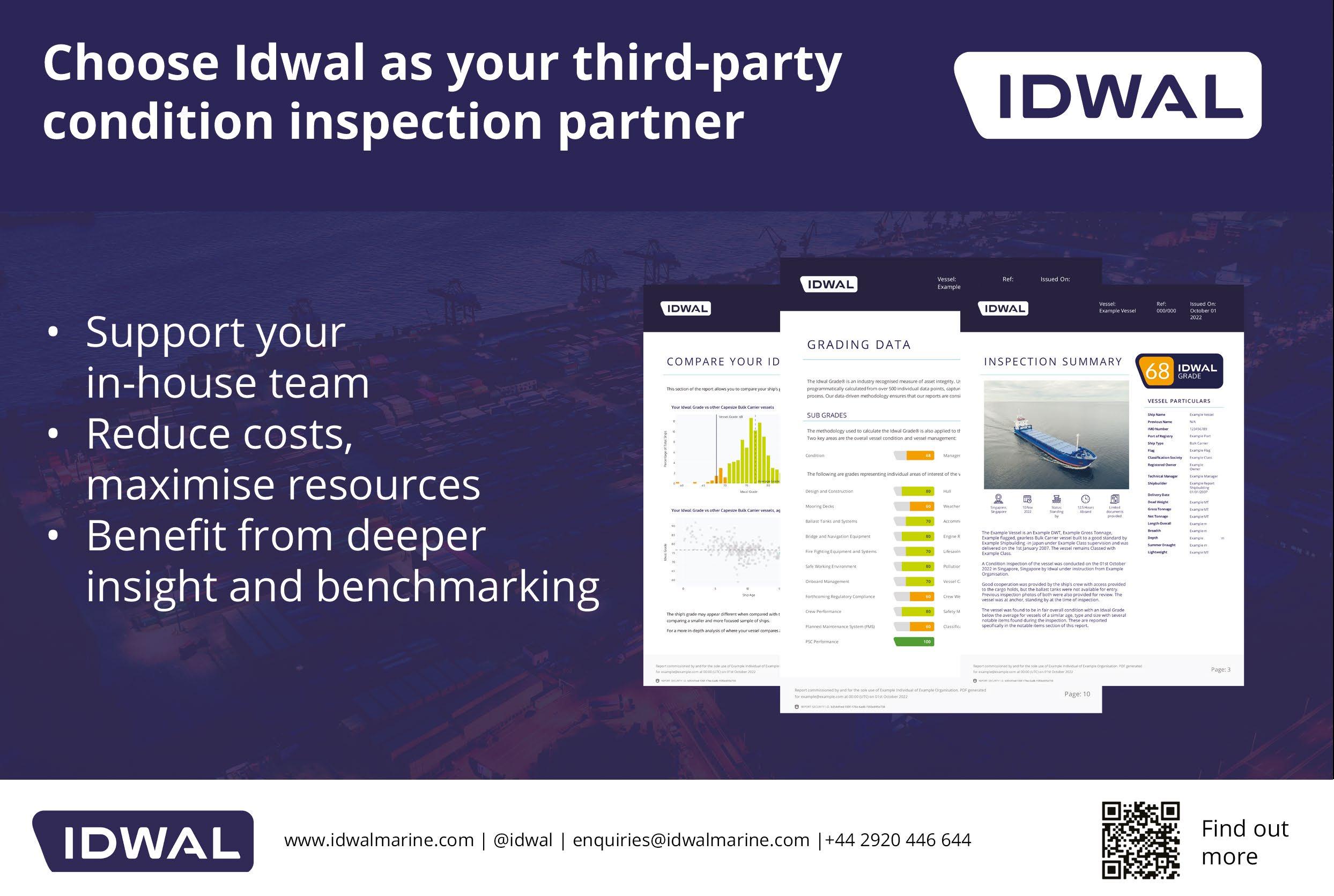
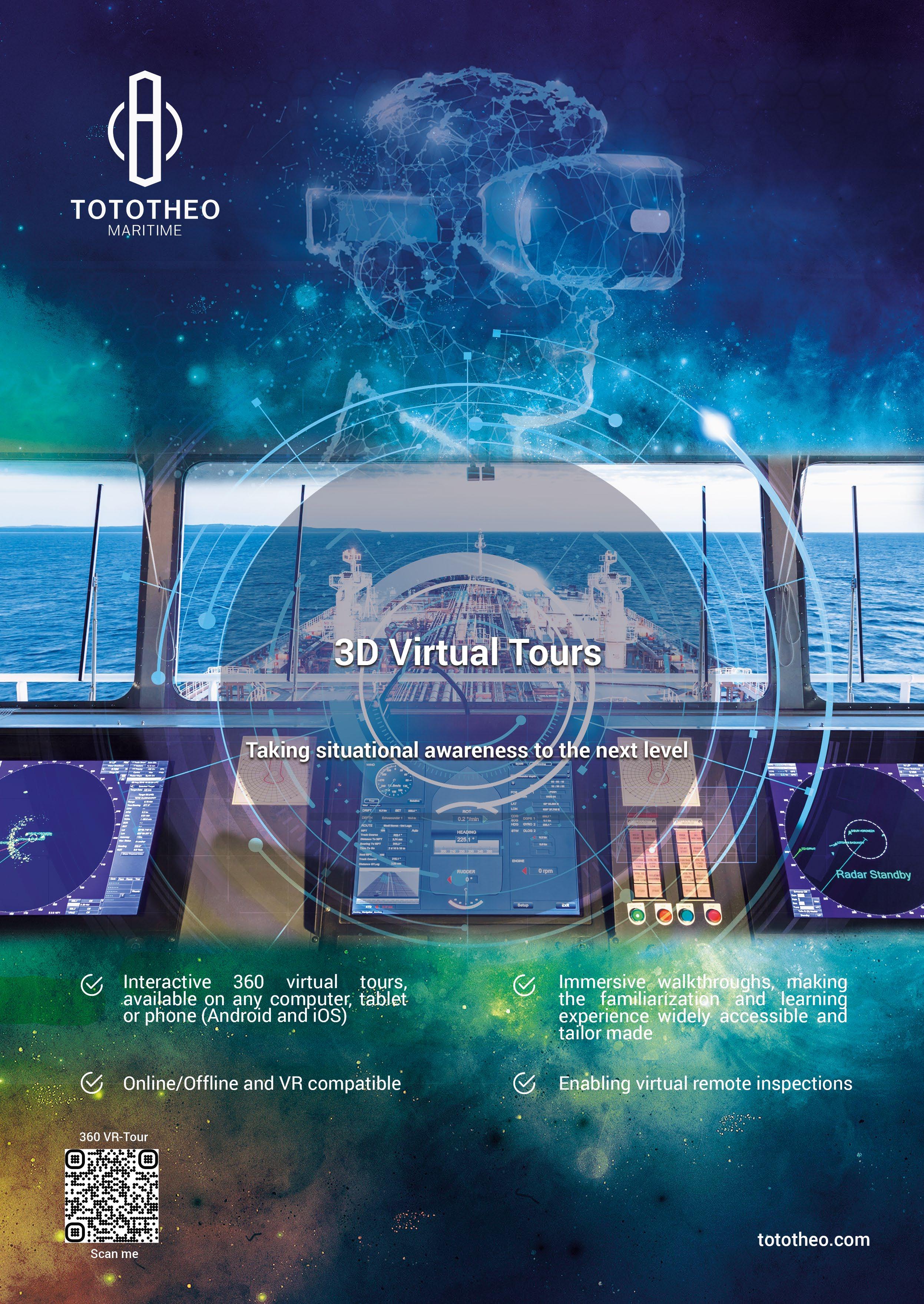
Notebook
Wilhelmsen Ship Management teams with Affinity to offer EU ETS services
Wilhelmsen Ship Management (WSM) and Affinity Shipping have signed a Memorandum of Understanding (MOU) to jointly establish an independent company that will provide comprehensive compliance services related to the EU ETS (European Union Emission Trading System).
The company’s offering will be the first of its kind, offering a complete outsourcing service for shipping ETS management. The service integrates technical ship management and carbon allowance procurement to support shipowners, managers, and operators in the new era of emissions compliance.
Following the agreement in December among EU negotiators to include maritime shipping in the EU ETS, ship owners and operators will need to acquire emission permits for 40% of their applicable emissions in 2024, increasing to 70% in 2025, and 100% in 2026 and every year thereafter. WSM brings technical management expertise to the table, including verification of emissions reports and compliance with the existing EU Monitoring, Reporting and Verification (MRV) framework, while Affinity brings experience in the sale and purchase of carbon
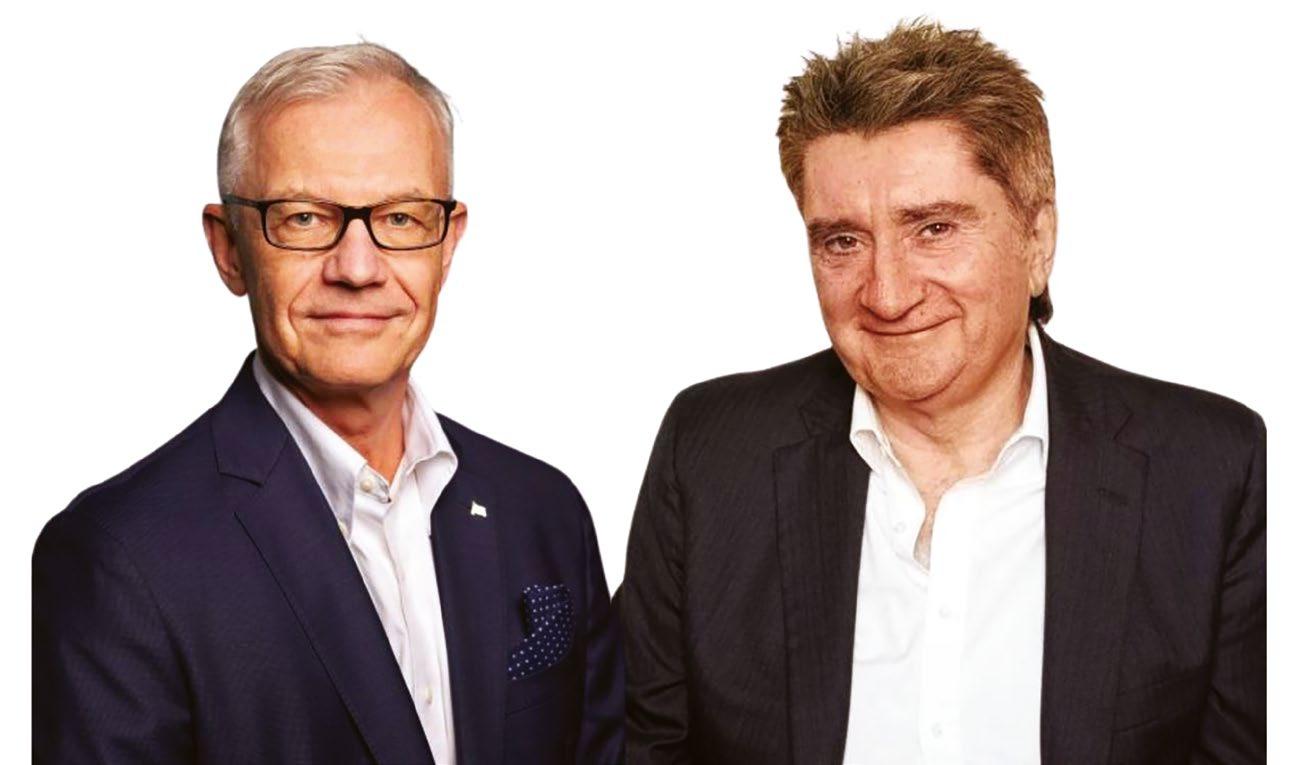
products, EU Allowances (EUA) registry management, analysis of ETS exposure, and regulated advice on emissions markets.
“We are delighted to be collaborating with Affinity on this important initiative, which will bring added value to customers and ensure full transparency in the whole value chain,” said Carl Schou (pictured, left), CEO and President of WSM. “The partnership aims to provide a seamless transition into EU ETS compliance, as well as prioritizing our clients’ interest by managing emission allowance in the most efficient way possible.”
Richard Fulford-Smith (right), Managing Partner at Affinity Shipping, added: “We look forward to working with WSM to launch
the company that will provide a turnkey solution for ship owners’ and operators’ needs in the way of emissions reporting and trading support. It’s a powerful pooling of expertise that furthers our aim to assist clients in managing their financial exposure to the approaching energy transition.”
WSM is the ship management arm of the Wilhelmsen group and one of the industry’s largest third-party ship managers with an extensive global maritime network.
Affinity Shipping has had a carbon desk since 2018 and provides client-specific regulated advice and agency broker services for carbon emissions management. The new joint venture company will be based in Oslo, Norway. l
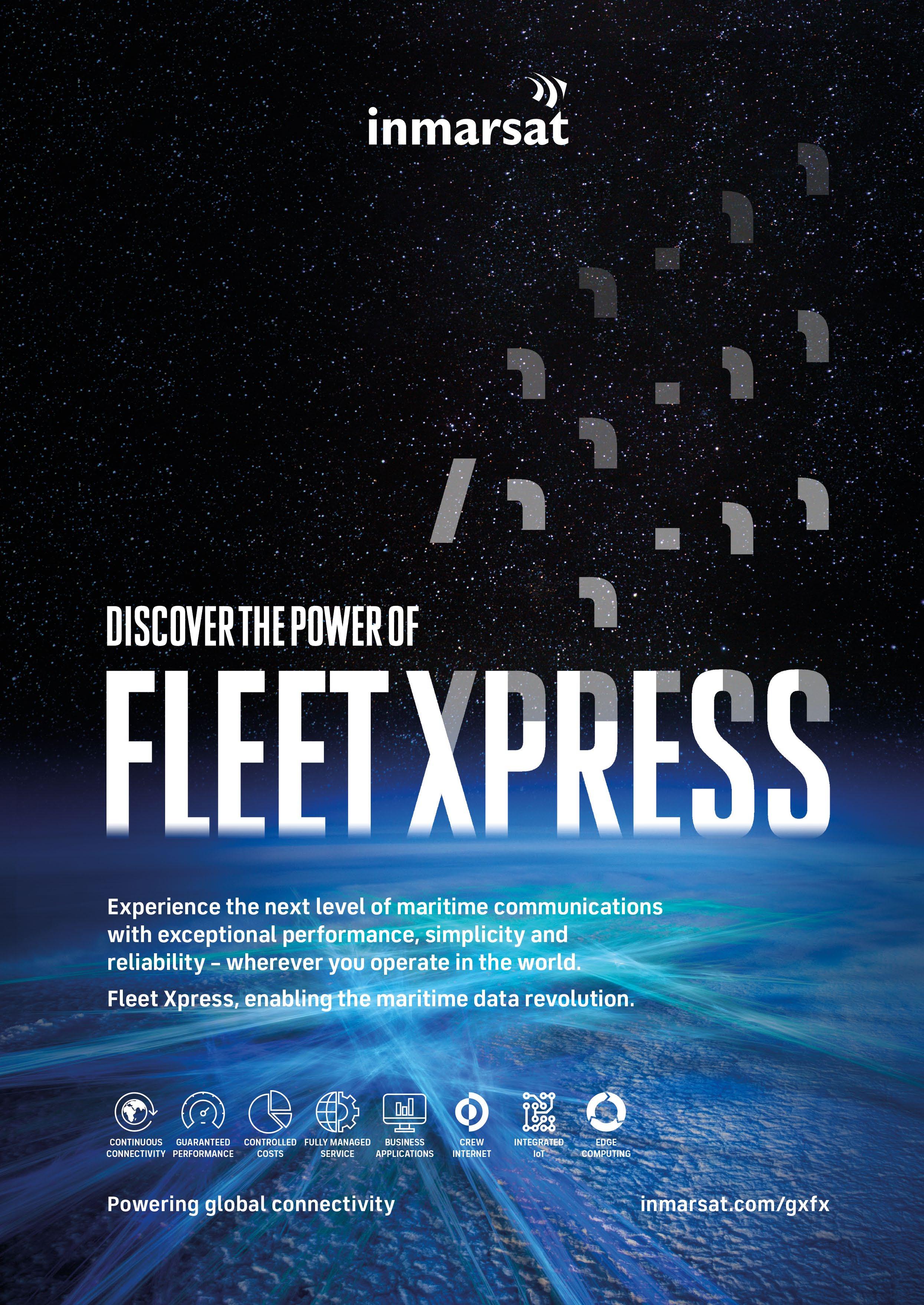
14 Ship Management International Issue 101 January/February 2023 Notebook
The BMA launches comprehensive online incident reporting tool
In line with its commitment to consistently high standards and exceptional service, The Bahamas Maritime Authority’s (BMA) is pleased to announce that it has developed a comprehensive online incident reporting portal for use by managers and owners which has now been launched.
The BMA’s online reporting portal is said to the first of its type to be employed in the maritime sector and has been developed to simplify the process for its clients, acting as a one-stop shop. Replacing the nine forms that might currently be used to report anything from a serious marine casualty to a birth at sea, the portal meets all the reporting requirements of the Merchant Shipping Act and other national and international requirements.
The main benefit of the new system is efficiency with all relevant information being captured at the same time, reducing duplication of effort completing multiple forms. Equally important will be that the collected data can be more effectively analysed for trends within The Bahamas fleet.
Nick Dowden, Assistant Director and Marine Investigator in The BMA’s Investigations Department explained how clients will benefit from the new system: “Currently it can be quite a laborious exercise to report an incident, perhaps requiring the completion of three or four different forms. By digitalising the process, the system itself will handle any duplications of information needed
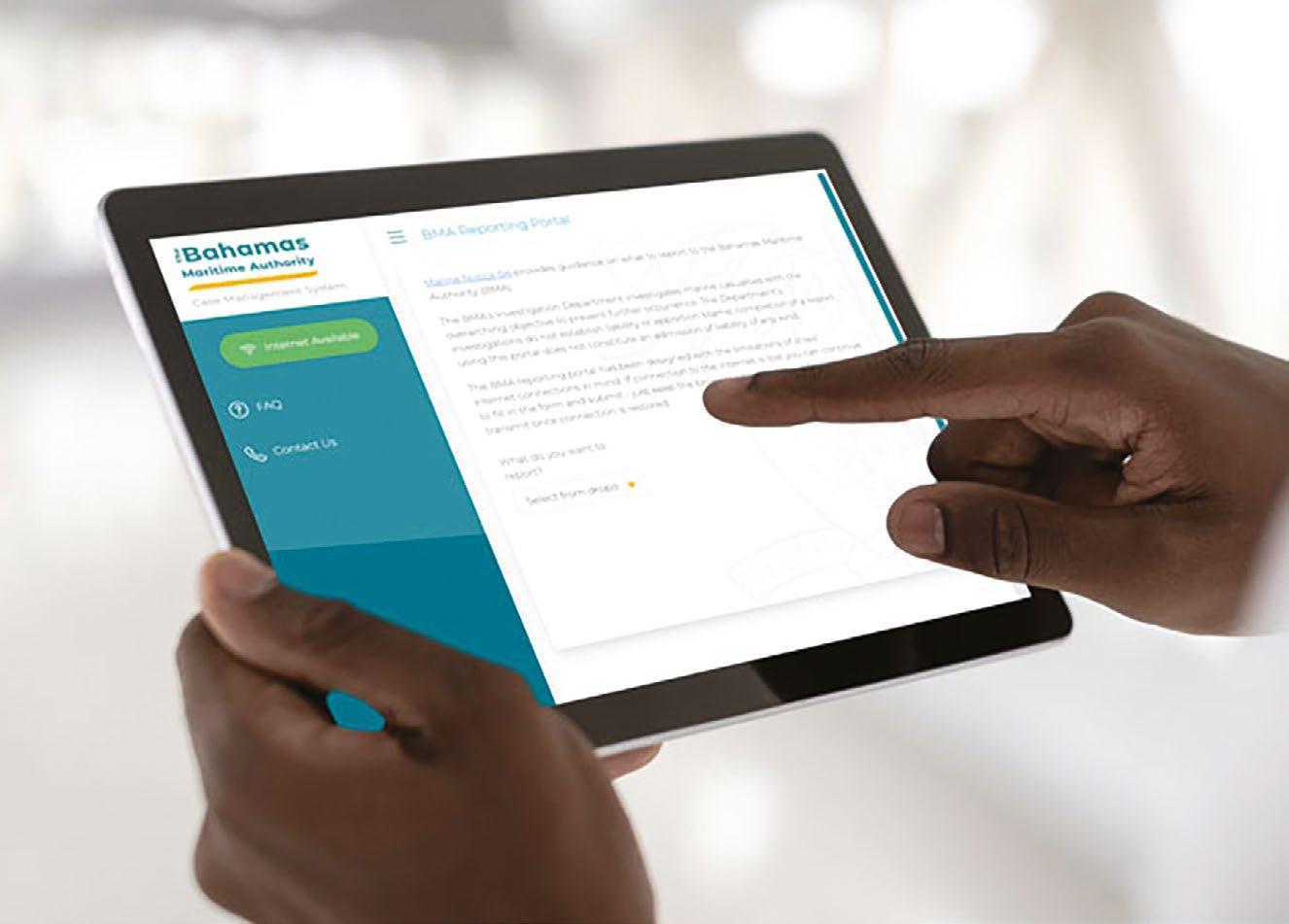
and will also lead the user through the stages of reporting – asking only for relevant details and flagging any supporting material that is needed.
“In terms of data collection and analysis, it will make it much easier for us to identify trends across our fleet so that clients can benefit from each other’s experiences. This will be particularly helpful to managers and owners who have only one or two vessels operating and so wouldn’t have the benefit of seeing the wider trends in the industry.”
The new portal, which initially will run concurrently with the paper system, has been specifically designed to work even in the event of the ship’s connectivity being lost. Any report that is submitted whilst offline – even if that loss occurs midway through the reporting process – will be stored in the client’s computer cache and will synchronise with The BMA server once the connection to the internet is restored.
The new reporting tool is just one of a number of initiatives that The Bahamas Maritime Authority has been introducing recently to enhance its online services and digital offering to its customers. The BMA is ‘leveraging technology’ to strengthen its online service, says MD and CEO Capt. Dwain Hutchinson.
“The aim is greater efficiency and cost-effectiveness for our customers, aligned with the mutual environmental benefits through the reduction of the use of paper.”
The BMA is a regulatory body but also a customer service provider that recognises the ESG principles encompassing people and the environment, Capt. Hutchinson adds.
“We are also working with strategic partners on measures to address the health and wellbeing of seafarers, recognising the importance of the crew to the long-term sustainability of the industry and, by extension, the global community.” l
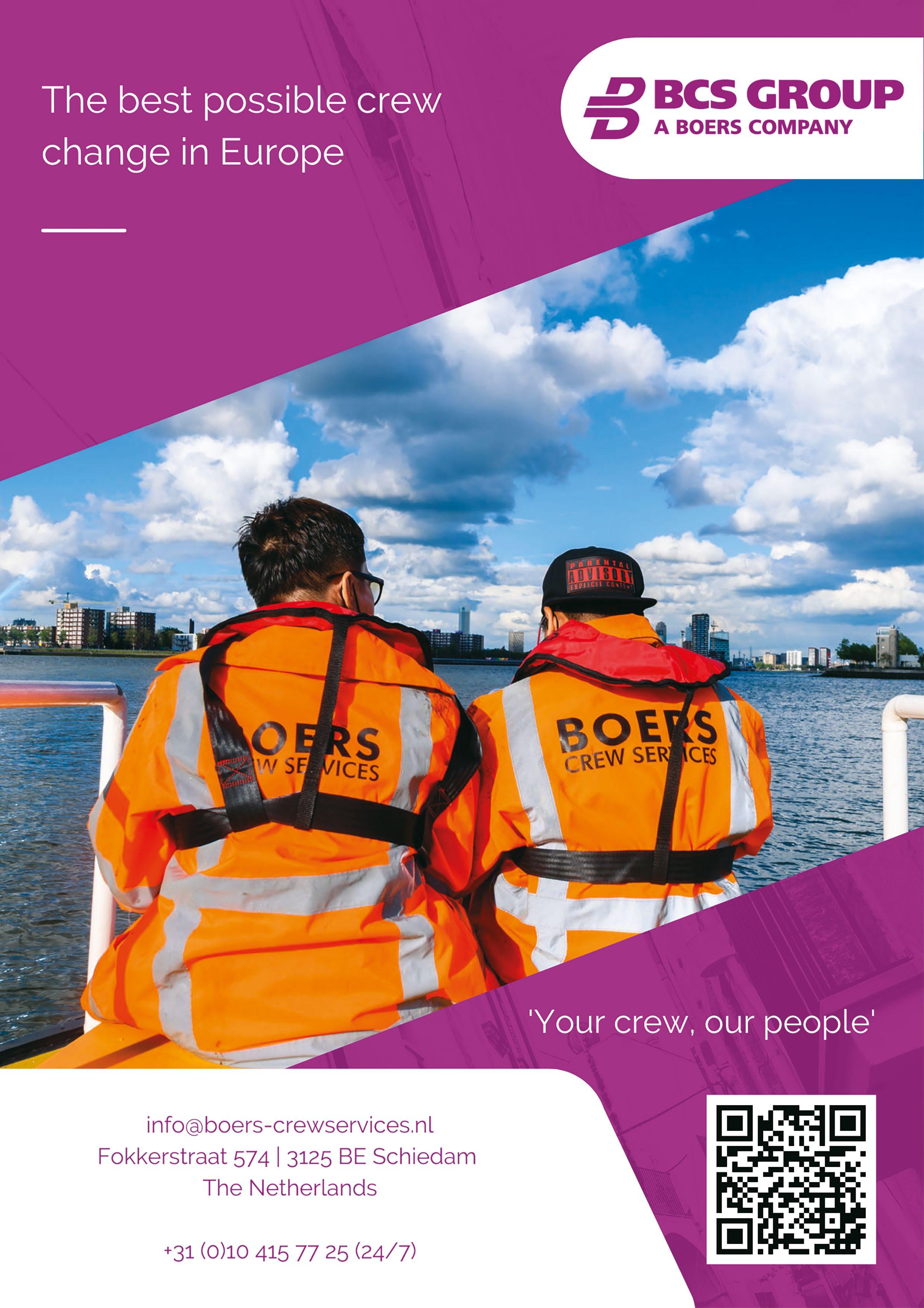
16 Ship Management International Issue 101 January/February 2023 Notebook
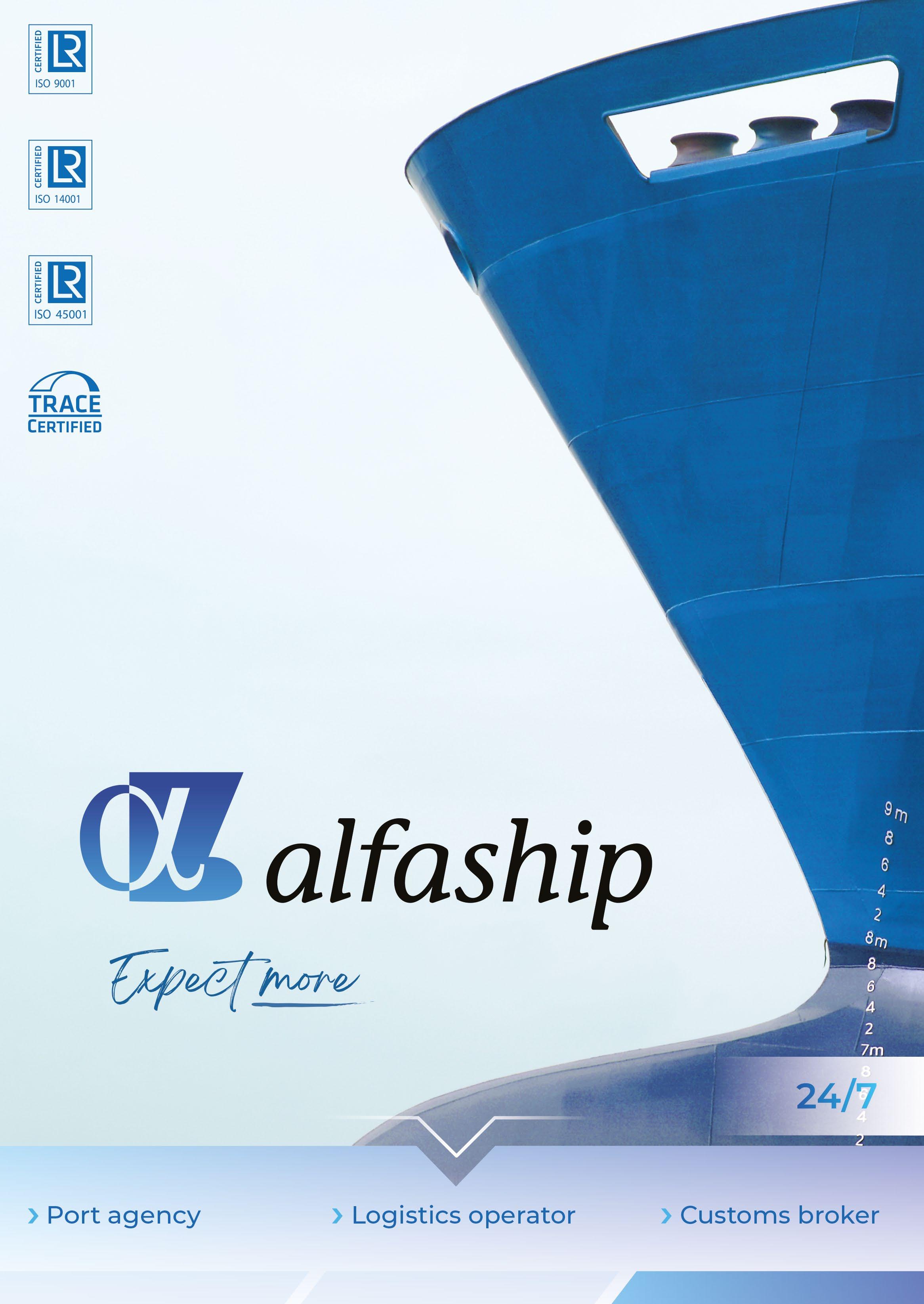
Adaptability and forward thinking are core shipmanagement skills InterManager Outlook
InterManager Secretary General, Capt. Kuba Szymanski, anticipates key areas of focus for shipmanagement in 2023.


As we sail into a new year ship managers are, as always, looking to the horizon.
One of the great talents of good ship managers is their ability to anticipate the future and adapt accordingly. This agility is the reason ship and crew managers were able to continue to supply crew to ships throughout the Covid-19 pandemic and to work together to ensure crew changes took place despite very testing logistical situations. February marks the anniversary of the war in Ukraine which again saw ship and crew managers working together to support seafarers while ensuring ships were sufficiently crewed.
Shipping faces a number of challenges over the coming years, particularly in relation to decarbonisation and other environmental measures. Alongside this is the increasing digitalisation of ships and shipping processes which will require us all to learn and adopt new ways of working.
Ship managers are already upskilling and positioning themselves to provide services and support to ship owners and operators. With regulatory compliance in sharp focus across a number of aspects of ship operations, many ship managers are adapting to facilitate data collection, analysis and submission, while also working with industry partners to develop new training regimes which address technological advances. One area where ship managers will be central to compliance is the European Union’s impending Emissions Trading Scheme (EU-ETS). The legislation is being finalised and InterManager has been fully involved in discussions at high level to ensure the role of the ship manager is fully understood when allocating responsibilities. The most advanced ship managers are viewing the introduction of the EU-ETS as a potential new revenue opportunity while working hand-in-hand with owners to assist
them in securing good freight rates. I wonder whether this ability to handle complex data and regulatory regimes will become one of the biggest commercial advantages in years to come?
InterManager assists members to keep up to date with industry developments through its IMO updates, 60 minute meetings for members focussing on key issues, and regular briefings etc. And we’re proud of how well our members work together to resolve issues and share best practice, particularly involving the welfare of seafarers.
There is much that can – and should – be done in relation to seafarers in order to safeguard a sustainable crew pipeline. Shipping is competing with many other industries for talent. Young people, Generation Z, millennials, they don’t have to work in the shipping industry. Seafarers don’t end up in shipping by coincidence and the pool of people dreaming about the sea is getting shallower. I believe shipping needs to do more to raise its public profile in a positive way and to highlight the many exciting career possibilities available within maritime. We also need to ensure that we treat our seafarers, of all ranks, nationalities and genders, well and provide them with the sorts of workplaces that younger generations expect, such as free access to the internet, supportive welfare provision, and ethical corporate policies.
Those of you who know me know that I am PASSIONATE about shipping. The sea called to me at an early age and I still sail, and maintain my ‘ticket’ to sail tankers. I love explaining to young people how amazing a career at sea can be as well as supporting and mentoring cadets as they make their way through our industry. I urge you, my maritime colleagues, to do the same. We are our industry’s best advocate. Let’s do our best to encourage and welcome others to join our magnificent club! l
19 Issue 101 January/February 2023 Ship Management International
It’s a blame culture –so be careful what you say!
Managers are often required to produce a report post-incident, whether for Flag State, Owners or in accordance with the Vessel’s SMS, for example. While it is helpful to have a report outlining the facts of the incident, what went wrong, and what could be improved, managers must take care when drafting a review of this kind that any findings are not used against them or their principal. The ISM code promotes a noblame culture. However, when something goes wrong, it can be the very opposite.
Any incident may lead to a dispute and costly litigation. Parties involved will inevitably ask for any reports into the incident and scrutinise them for anything that can be used to assign blame and liability.
ITIC regularly see reports and correspondence issued by managers keen to state they were negligent and apologise to owners for the sake of appeasement and provide a “good service”. However, in some instances, this encourages owners to bring a claim against managers (or a third party to sue owners) for the incident or other issues, especially when relationships deteriorate at a later stage or when owners want to find an excuse for non-payment of management fees. It should be remembered that an apology can be taken as an admission of liability. This could put the manager in breach of their insurance policy which usually states that liability must not be admitted.
Managers should therefore ensure when reporting on the incident that they do not comment on anything outside their knowledge and, is not strictly necessary to the understanding of the incident. As far as possible, any report should contain factual statements only, not opinions or apportionment of blame or liability. The former is for experts to comment on, and the latter, for lawyers, based on the relevant laws and contractual provisions.
How an issue is described and blame is assigned can make significant differences in liability or how allegations or arguments regarding liability are shaped. For example, under the SHIPMAN agreement, broadly speaking managers are not liable where the crew has caused this issue, even if they have been negligent. However, they could potentially be in breach of the contract where the crew’s incompetence was caused by the manager’s failure to
 By Geraldine Koon, Legal Advisor, ITIC
By Geraldine Koon, Legal Advisor, ITIC


provide proper training, where they have a duty to do so.
Further, where the crew is incompetent, the vessel may be considered to be unseaworthy and leave owners unable to defend against certain claims from third parties.
Managers should also remember that any incident can be the result of one or multiple causes, and often, until the issues are fully investigated, it will not be possible to say which factors were causative. They should, therefore, be careful when setting out the reasons for the incident. Liability under the Shipman is restricted to where the loss has been caused “solely” by the manager.
Where not necessary, the report should not refer to other documents as this immediately brings attention to material that may ultimately not be relevant. For example, it will likely not be essential to include the performance review history of a crew member.
Finally, in case of any doubt, managers should refer the matter to their insurers and/or lawyers so that the draft report can be reviewed first before being finalised and sent.
If managers feel that they may face some claim, they should also avoid discussing the issue internally in writing and should be careful what they say in correspondence to owners. Should the matter be litigated subsequently, under English law (and many other jurisdictions), such correspondence would be disclosable to the other side, so managers should take care not to prejudice their position. Again, managers are advised to inform their insurers and lawyers as soon as possible. This would also make it more likely that litigation or legal advice privilege may be asserted over subsequent correspondence on the matter, so these documents would not need to be disclosed in litigation. l
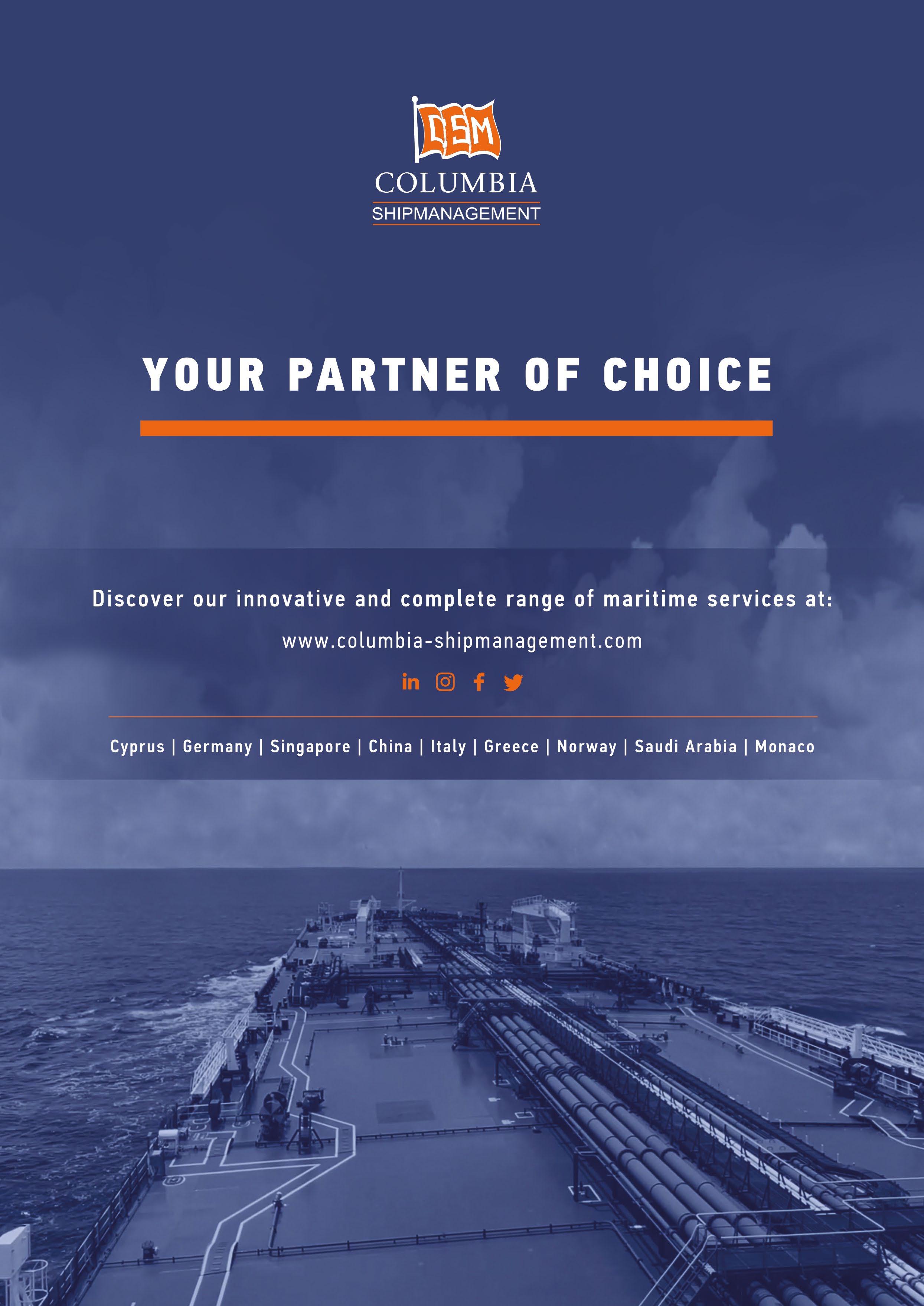
Notebook
20 Ship Management International Issue 101 January/February 2023
Dispatches The urge to merge
At the beginning of this year OSM Maritime and Thome Group announced plans to merge, creating a new giant of the shipmanagement sector, to be called OSM Thome. Under the plan OSM founder Bjørn Tore Larsen will be Chairman of the Board of Directors of the new company, and Claes Eek Thorstensen, son of Thome Group founder Olav Eek Thorstensen, Vice Chairman.
Here SMI interviews OSM Maritime Group CEO Finn Amund Norbye, designated CEO of the new company, and Thome Group CEO Olav Nortun, designated COO, about the rationale behind the proposed merger.
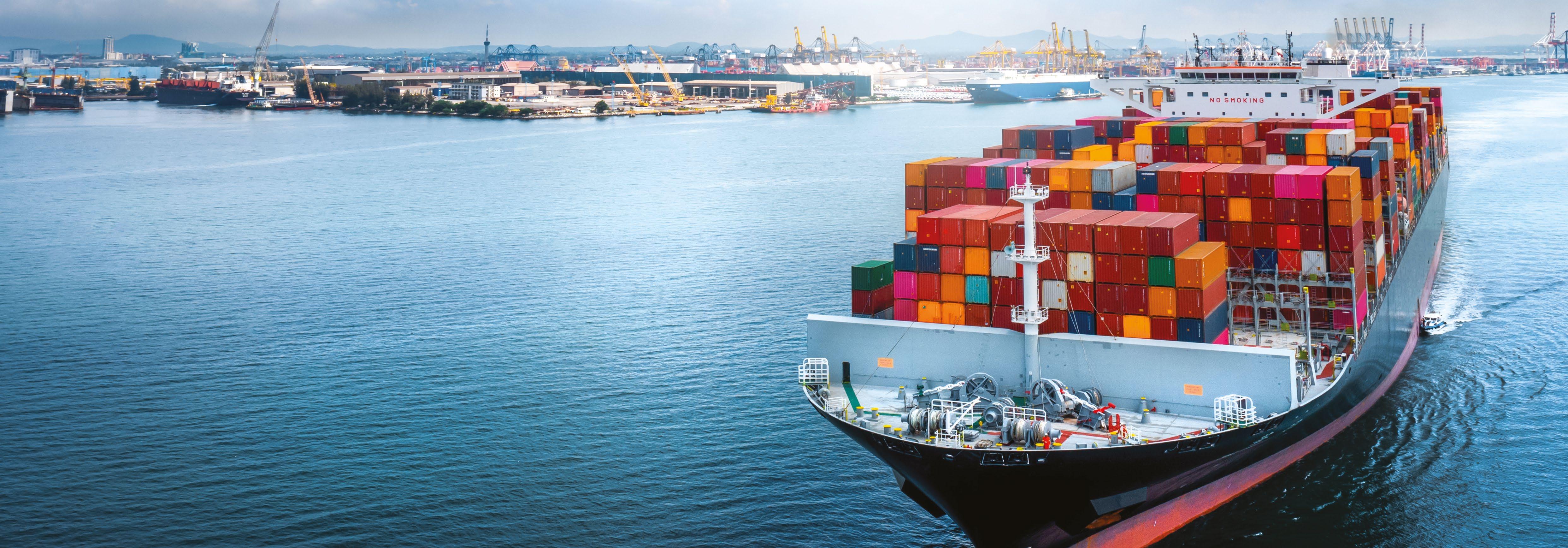
SMI: What factors prompted the plan by your two companies to merge?
Finn Amund Norbye: Without going into too much detail, what made this [merger idea] tick this time was timing, which was perceived to be good from both companies. You can have ideas about what makes a ‘perfect fit’ but it’s all a matter of timing. Both parties and owners thought the timing was good.
We’re a pretty good match in the shipmanagement industry where there’s a mix of nationalities and cultures but we’re similar in both, having Norwegian origins.
Olav Nortun: In any merger you have to find someone you think you can work with. As Finn said, it’s a good match and the timing is right. An idea like this doesn’t happen overnight, it’s something that matures with time until you think the size, culture and footprint all fit.
Finn Amund Norbye: Yes, this transaction started six to eight months ago, and there have been talks also in the past. In terms of size the combined entity, OSM Thome, will manage approximately 1,000 vessels, of which 450 will be under full technical management and in addition we’ll do crewing for about 550 vessels. Operations will be managed by an onshore
team of 2,000 employees and we’ll have a pool of around 30,000 seafarers handled from 22 offices, with our head office in Arendal, Norway.
SMI: How important a role will Singapore, traditionally a favoured overseas base for Norwegian companies, play in the new combined operation?
Olav Nortun: Thome was established in Singapore in 1963, two years before the Republic of Singapore became an independent country. The location was seen then as a gateway to Asia, and since it has continued to grow as a good hub in a more challenging part of the world. It’s a future-facing place to be and being based in Singapore has been a great journey. It’s a true maritime hub and Singapore will be an extremely important part of OSM Thome going forward, obviously.
A ship manager’s footprint consists of two main elements. You have to be in the right place for the management of vessels but also have an expanded network of manning offices. The combination gives us a good footprint in both. It gives us the right flavour and presence that we need.
Finn Amund Norbye: In Europe we will handle close to 200 vessels under full management while in Singapore there will be
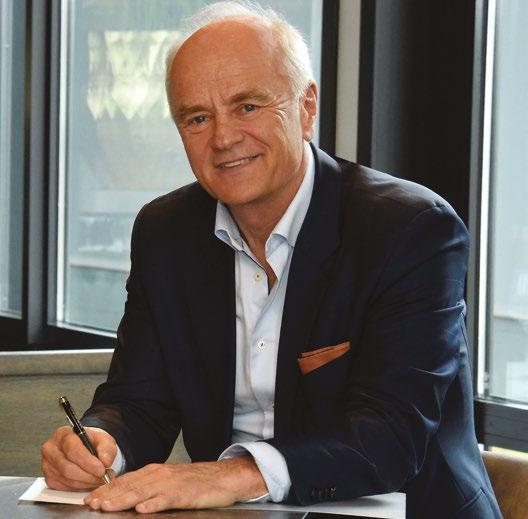
Shipmanagement as a business is all a matter of scale these days… becoming increasingly expensive and complex
Finn Amund Norbye, OSM Maritime Group CEO
a very large office handling approx. 250 vessels. Together we will be one of the three largest shipmanagement groups, along with Anglo-Eastern and V.Group.
SMI: How important do you see scale in the shipmanagement sector today, and was that a prime reason for the planned merger?
Finn Amund Norbye: The way we see it size is important. Shipmanagement as a business these days is a matter of scale, which is why a number of shipping companies have outsourced their technical management to us in recent years - including Bergshav Management, Kristian Gerhard Jebsen Skipsrederi Management and GC Rieber. OSM also acquired Vestland Management (in 2019) and SeaTeam Management, Singapore (in 2020). Shipmanagement is becoming increasingly expensive and complex. The nature of today’s business, including things like environmental regulations, sanctions compliance, cybersecurity, digitalisation and so on, is such that it increasingly needs scale. We need to make a lot of investments and that calls for size and strong balance sheets.
Olav Nortun: And it’s not only about being the biggest but about being able to grow with customers and help them in the
areas just discussed. Which is why, for example, Thome agreed a joint venture with Carsten Rehder whereby we would take on the management of their owned and managed fleet of mainly dry bulk, container and multi-purpose vessels.
Also crewing and crew recruitment are an increasingly important part of the business, especially after Covid and the RussianUkraine conflict have added difficulties here, so that footprint is important from the point of view of scale as well.
Finn Amund Norbye: The new company will have more than 20 manning offices and that number will probably increase going forward. We need to be dynamic in the way we recruit and train seafarers.
SMI: You mentioned Covid and the Russia-Ukraine crisis, and we could add global supply chain disruption and looming recession as other problems today. Is the rationale behind the current crop of planned mergers a case of ‘huddling to stay warm’ as someone described similar consolidation after the 2008/9 financial crisis?
Olav Nortun: I think it’s different this time. During Covid we
23 Issue 101 January/February 2023 Ship Management International 22 Ship Management International Issue 101 January/February 2023
Dispatches

A merger idea is something that matures with time, until you think the size, culture and footprint all fit
Olav Nortun, Thome Group CEO
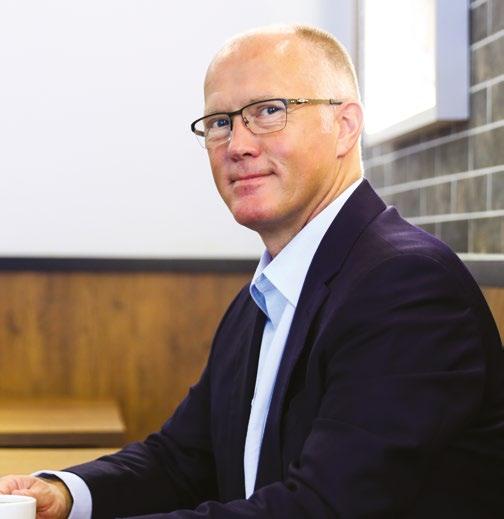
were restrained from doing a lot of things, and people had time to look at the business and think what we should do when we get out of it. We see things developing and don’t want to be left behind. So I’m not surprised that mergers are occurring.
Finn Amund Norbye: What we have seen is shipping changing a lot in the last 10 years. Companies have been growing into big corporates, also the arrival of private equity investors. Hence, the need for our services is increasing.
Olav Nortun: That has also provided time to reflect. When Teams and Zoom came along, it made people think differently and you come up with different ways to organise yourself. So effectively it’s a learning curve. A lot of processes today will become less manual and more digitised. I would be uncomfortable NOT doing anything and risk being nibbled by ‘unlikely competitors’.
SMI: Are there any final points you would like to make to our readers?
Olav Nortun: Another reason for the planned merger is that shipping has to attract talents. It’s easier for a large company to attract people who have the right talents and a clear development path.
Finn Amund Norbye: It’s important to point out that we shall be continuing to operate as separate companies until the merger is cleared by the relevant competition authorities, which we hope will happen by the end of Q1. And, that we are very excited and looking forward to working together.
SMI: Thank you both, gentlemen, for your time answering our questions. l
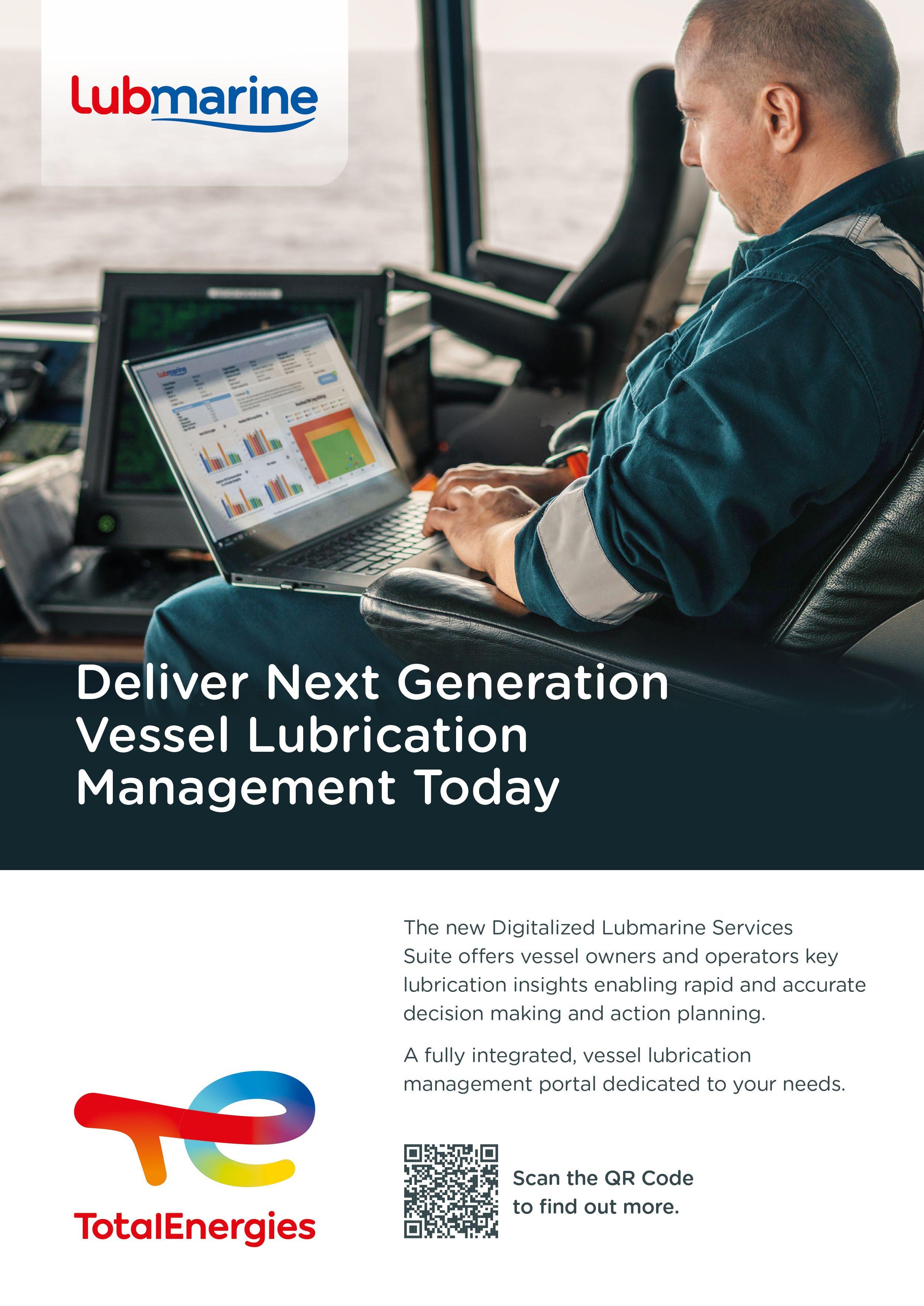
24 Ship Management International Issue 101 January/February 2023 Dispatches
First Person
Thomas Nordberg Managing Director, The Swedish Club
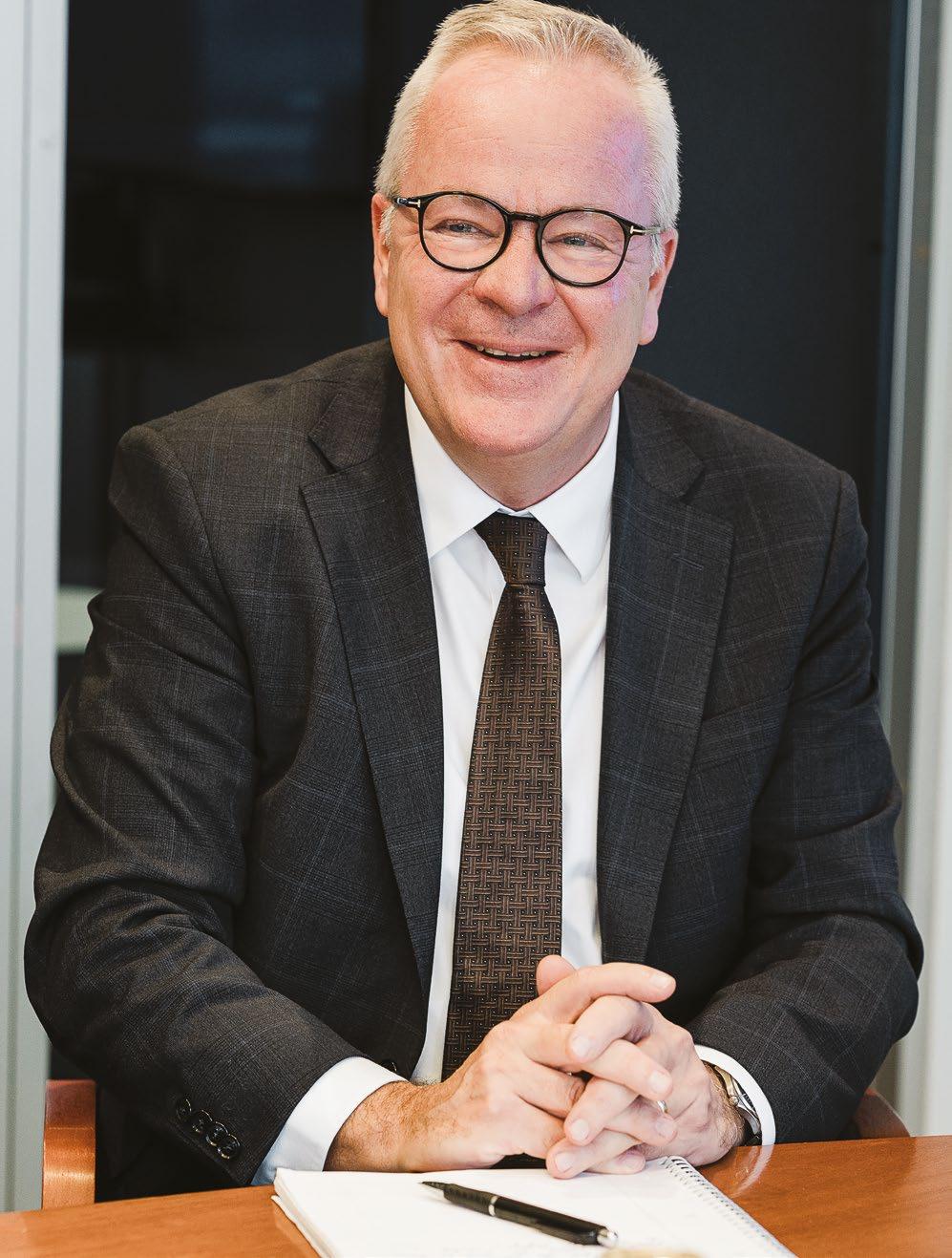
After only two months in his job as Managing Director of The Swedish Club, Thomas Nordberg has already started implementing elements of his growth strategy for the Club, and they involve strengthening its presence in the important Far Eastern and London markets.
As part of a set of key management changes, Lars Malm will become Managing Director and Area Manager in the Club’s Hong Kong office, contributing with his broad range of claims, loss prevention and business development skills to further expand and serve this important shipping hub, while Tord Nilsson has been appointed Area Manager, Team UK. He will drive the Club’s reinsurance activities and lead continued expansion within this vital maritime centre with the aim of further establishing the London office as a full-service operation delivering exceptional underwriting and claims services to owners and brokers.
According to Mr Nordberg, the changes were important in gearing up the organisation to be ready for
future challenges and opportunities. “These important management moves are a part of these ambitions. We are an international marine insurance company serving our members and developing our business in key areas. Enabling our regional teams to deliver the highest levels of business experience and expertise to their markets means that we can be sure of offering our members and business partners the best marine insurance solutions.
“To take care of current members, create new partnerships and maximise the potential for future business growth, we need to be close to our shipowners and brokers. Over time and as we grow as a company, the quality of the support network that we deliver - seamlessly interfacing the work of our regional teams with our head office in Gothenburg - will be key to enhancing our collective offerings to our members,” he said.
Following Thomas Nordberg’s appointment as Managing Director of The Swedish Club on 1 January 2023, succeeding the excellent Lars Rhodin, it will be the second time in his career that he has worked for The Swedish Club. And the irony of it all is that when he accepted a summer trainee position at the Club in 1992, he worked alongside none other than his immediate predecessor Lars Rhodin. Indeed, they both talk fondly about the lunch they once had together as young lawyers.
So, after many years away, what were Thomas Nordberg’s impressions of the Club when he formally joined in September as part of the management handover? “It confirmed very much what I knew about The Swedish Club, that it’s a very solid company with strong corporate values,” he said. “We have a highly competent staff and I see lots of positive energy in the company. These people really want the best for the company and are ambitious to make sure we move on in a positive direction while still maintaining the company’s core values.”
He added: “The feelings I get when joining the company very much confirm my expectations. Lars and his teams have done a great job building up the company to what it is today and what I’ve seen reflects upon Lars as a leader and a person. I’ve worked closely with him for several months, and he’s been very supportive and knows his stuff. He’s knowledgeable – and of course, he has a good sense of humour.”
Without doubt, the Club places members at the heart of its organisation and has a very good relationship with its members, but shipping is also going through a lot of change. So, what is
likely to be on his agenda moving forward, when he takes over on 1 January?
“It will primarily be my job to maintain our attention to provide best possible services and support to our members and clients. That is why we are here. In order for us to deliver on this, and to be positioned for further growth with high-quality tonnage, it will be critical to make sure we have an organisation designed to do all the work we decide to do,” he said. “Reviewing the Club’s organisation, teams structure and how our global net of service providers operate together, for the ultimate benefit of our clients and business partners, will therefore serve as a prioritized key task for me and the leadership.
“My professional background, to a large extent, comes from working in regional offices in different corners of the world, which is why I also feel a strong link to the Club’s regional offices as a vital part of our organisation and collective service offerings.
“Looking at the business in general, new partnerships and the potential for future business growth will primarily come from Asia and other certain geographical regions, where we need to be near the shipowners and the brokers. Therefore, we need to ensure an efficient distribution network throughout our regional offices, obviously together with maintaining a well-functioning “mother” and head office back home in Sweden. Over time and, as we are growing as a company, extended coordination and well-structured interactions between all organisational units will be key to enhance our collective offerings to our clients and members,” he stressed.
Nordberg recognises that the Club’s heritage is in Gothenburg: “Although small, the Swedish market is still very important, and we should take good care of the remaining shipping companies we have here and make sure we have a good relationship with the domestic market and cluster.”
And what are the market priorities facing the Club itself moving forward?
“As before, there will be a continued focus on maintaining the existing quality tonnage in our portfolio. However, we also need to grow and defend our future market positions. In this context, an increasingly scientific approach on risk selection will be key to ensure expansion with the right kinds of tonnage and risks. We need to become even more clever and analytical in our risk selection processes and ensure that we have all the tools in the box to deliver on this. So, comprehensive intelligence, statistics and data should solidly underpin our risk selection assessments and decisions,” he stressed.
“As we all know, investment activities are an integral and long-term important part of running insurance operations and they contribute a lot to the business when investment market times are good. However, investment market developments are commonly driven by factors outside the scope of our control. Over time the Club has a good track record of managing our members’ funds and investments in a way that has provided financial stability and support to grow our mutual insurance business. Clearly, the
investment management serves as a valuable complement to our daily work on the insurance side, i.e. the underwriting, the claims, the loss prevention and associated risk management services, to ensure a healthy and well-balanced portfolio.
The impact the current turmoil in the equity and bond markets is having on the financial strength of protection and indemnity clubs in general was recently illustrated when S&P Global Ratings downgraded its financial strength ratings of The Swedish Club from A- to BBB+ mainly due to negative investment returns, something Thomas Nordberg stresses is not a reflection of the Club’s underwriting performance during 2022.
“I think we, and many of our peers and other stakeholders, are feeling frustration around this as it may be misinterpreted as reflecting poor performance. Nevertheless, we will stick to what we can control and where we can improve our operations and results. I think it’s very much about doing what you know is right and just carrying on doing that. And we continue to deliver worldclass insurance protection to our members.
Looking to the importance of the members of The Swedish Club, Nordberg said many of them would have their firm thoughts about what they expect from a quality insurer like The Swedish Club, such as the top-level claims and legal services and associated products. “This will be core, and that is what the members primarily expect from us. The business climate is getting more complex for our members. Therefore, it will be essential for us to ensure we know what is going on in the market. That’s something we must quickly pick up and then make sure we are prepared to provide services to cover whatever needs are out there.
“Then obviously, our underwriting performance and insurance costs will be another key aspect, and they will want to know that we are financially solid to facilitate long-term competitive premiums and predictability in this context. That’s another key task for us,” explained Thomas Nordberg.
And what about home life? Thomas agrees that his new role won’t leave him with a great deal of time with his wife and two children, but the odd moment of relaxation could see him on the golf course or out taking the odd long walk. “I was just talking with my wife, and we agreed that it’s been incredibly hectic since I started at The Swedish Club. I have been travelling so much that I’ve hardly been spending any time at home. On the other hand, they are used to me working a lot, and a job like this is very much a lifestyle that involves the entire family. I could not have done this job without their support throughout the years and the years to come.
“We live very close to the sea, 90 kilometres south of Gothenburg, and our house is just 250 metres from the beach, so a great place to enjoy together as a family when time permits,” he said. l
27 Issue 101 January/February 2023 Ship Management International 26 Ship Management International Issue 101 January/February 2023
First Person
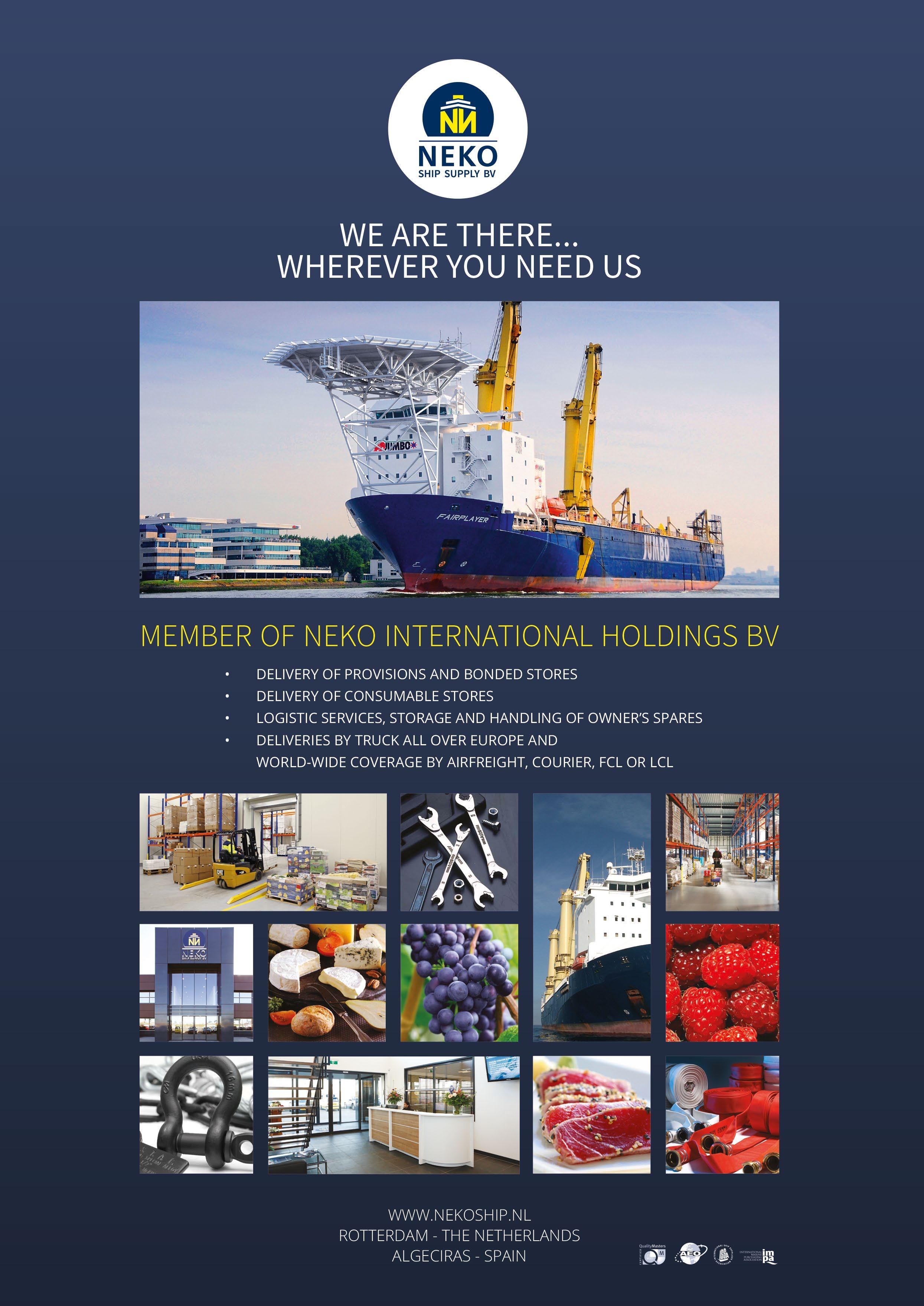
P&I and Law Beware befriending stowaways!

Crew should be warned not to socialise with uninvited passengers for risk of prosecution, advises Simon Hodgkinson, Head of Loss Prevention at West P&I.
Stowaways can create safety issues or legal problems for crews, especially if crewmembers befriend the person or people illegally on board. The major concern is that seafarers who discover and subsequently spend time with the uninvited guests become sympathetic to their plight.
While friendly conversation with stowaways – who typically board a vessel in port – may seem normal and harmless, mariners can easily fall into the trap of making bad judgement calls that leave the ship and crew open to prosecution. That can happen when a stowaway explains how they boarded the ship to escape the harrowing conditions of their home country for a new life in a more developed nation.
The story may be true, but the stowaway usually shares it to gain sympathy and to emotionally manipulate the crew into helping them disembark at an upcoming port without alerting the authorities. However, such action can have severe consequences for mariners.
A case study involving seven male stowaways found aboard a bulk carrier after it had left Kenya should serve as a warning to all shipping companies and their crewmembers. The stowaways were treated in accordance with IMO guidelines, but the situation became problematic once they struck up friendships with the seafarers. The mariners agreed to help them disembark the vessel at another port, while the Master failed to report to the shipowner that he had stowaways on board.
On learning that their final destination was in South America, the stowaways planned to leave the ship in Durban and board another vessel heading elsewhere. In Durban, the crew gave the stowaways clothes and money, before rigging a rope on the seaward side of the vessel to enable the illegal passengers to enter the water without being spotted from ashore.
The seven stowaways planned to swim to the opposite side of the shore, but two tragically drowned as they were not strong swimmers. The remaining men reached safety and handed themselves into the authorities. They then accused the crew of forcing them off the vessel and into the harbour, leading to the arrests of the ship’s Master and three crewmembers who were all charged with murder.
Those charges were later reduced to manslaughter after it became clear the stowaways had embellished their story.
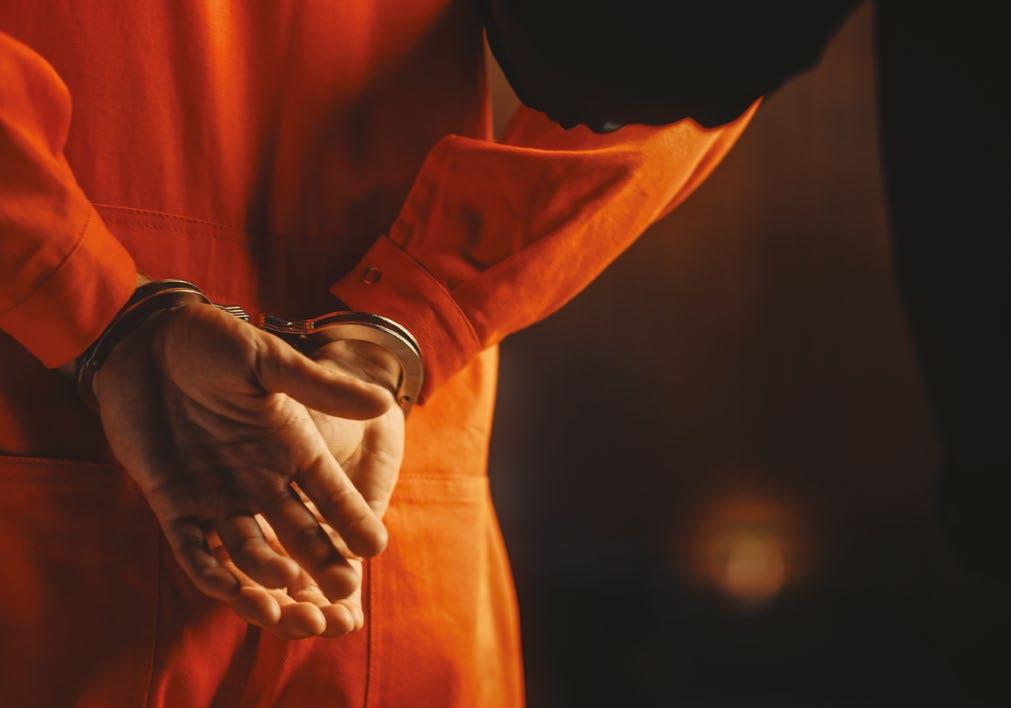
However, the Master and three seafarers had clearly breached immigration law. They were eventually found guilty of assisting the stowaways and smuggling them ashore, which saw them receive suspended prison sentences and fines.
This example highlights the perils of befriending stowaways. Preventing them from getting on board in the first place is one of the most effective ways of avoiding this, but that is not always possible. If safeguards such as monitoring the vessel’s access points prove futile, the stowaways could be on board for some time. This is because West may not be able to repatriate them immediately – especially if they lack identification documents.
Advice for dealing with stowaways is available from the IMO’s Resolution A.871(20) Guidelines on the Allocation of Responsibilities to Seek the Successful Resolution of Stowaway Cases. Additional guidance on how to treat stowaways can be found in Section 4C of the Facilitation of International Maritime Traffic Convention. However, neither cover the risks of befriending stowaways – the consequences of which can be severe as the aforementioned case study demonstrates.
Our advice to members is to follow the IMO guidelines and instruct crewmembers to refrain from socialising with stowaways or granting them special favours. Additionally, the Master should notify the office immediately and provide as many details as possible if a stowaway is discovered onboard. Those details should then be forwarded to your insurer at the first opportunity to expedite the repatriation process. l
29 Issue 101 January/February 2023 Ship Management International
Legal issues facing nuclearpowered commercial ships
By Andreas Dracoulis, Partner, Haynes and Boone LLP, and Jack Spence, Trainee Solicitor
The prospect of nuclear-powered commercial vessels has arguably been on the horizon for some time. A basic framework is contained in SOLAS 1974 with more detailed requirements set out in IMO’s 1981 Code of Safety for Nuclear Merchant Ships. However, aside from some limited examples of commercial nuclear vessels, there was little progress.
That would appear to be about to change, given the ongoing drive to reduce shipping emissions combined with recent global events (in particular Russia’s invasion of Ukraine). Marine nuclear power is therefore back in focus, particularly so because it is not yet clear which of the other low emission options (e.g. hydrogen and ammonia) are likely to dominate.
The technology under consideration is based on modular unpressurised reactors, as opposed to pressurised water reactors (PWR). PWR are used in a naval setting and that is also the technology on which the Code is based. The Code also applies a very prescriptive approach not in line with the more outcome orientated practice used generally in the nuclear sector – see for example the Safety Standards of the International Atomic Energy Agency.
One of the biggest challenges is therefore establishing a modern multi-lateral regulatory framework. This will however take time and it might be well in to the 2030s before the IMO has an updated Code, by which time it is intended that nuclear powered ships will be in operation.
Based on the views of the stakeholders in this sector, initial progress is likely to take place at a bi-lateral level with likeminded states implementing a regulatory framework that will allow the technology to be used successfully. One can see that cooperation between states such as the US, the UK, France and


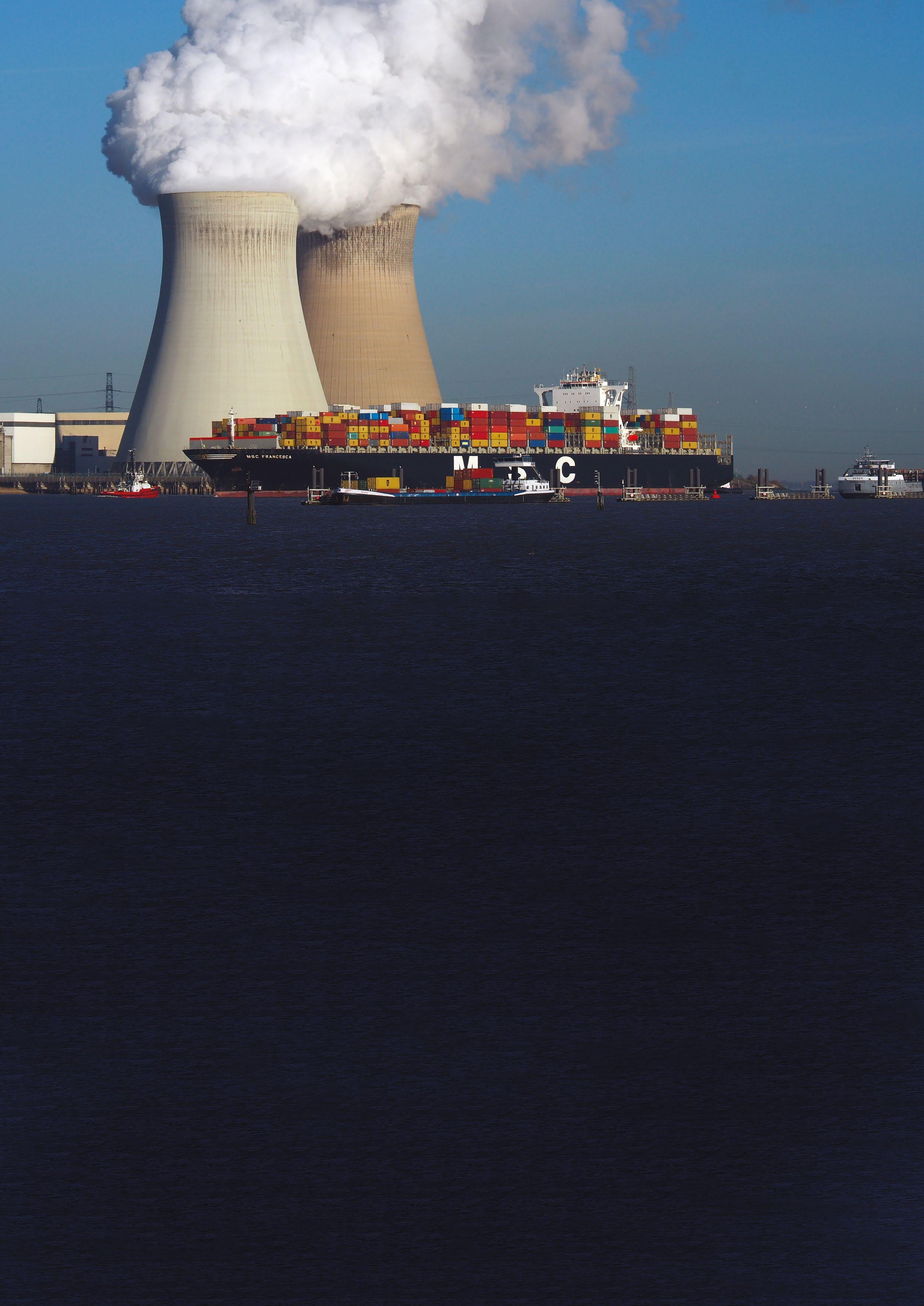
Japan (who have significant collective nuclear experience) may pave the way for a multi-lateral approach by the IMO in due course. The UK is already looking ahead to such an approach as it is now enacting legislation to implement the Code. It is also helpful that the classification societies are moving forward in this area – for example, LR intends to publish high level requirements in 2023 and ABS has a contract from the US government to research the barriers to progress.
Perhaps one of the key regulatory issues for stakeholders is the emergency planning zone (EPZ) – an area within which detailed plans are required in case of emergency. For land based nuclear reactors, EPZs cover a considerable area. However, that would present a significant problem in the context of a nuclear-powered ship moving between ports. The suggested solution is that the EPZ should be much smaller and limited to, potentially, within the confines of the ship. This is on the basis that the technology utilises unpressurised reactors, which do not pose the same risk as PWR.
On the basis that these and other important issues (in particular costs and decommissioning) can be resolved, important contractual questions will arise. At a shipbuilding level, the terms of any shipbuilding contract will need to be clear on the issue of how (and where) the nuclear reactor is to be installed and commissioned.
Careful thought will also need to be given to the interaction of post-delivery shipyard warranty obligations and ongoing maintenance arrangements for the reactor. Post-delivery, thought will need to be given to ownership of the reactor and stakeholders will also need to grapple with discrete issues such as whether it should be permissible to arrest a ship powered by a nuclear reactor. l
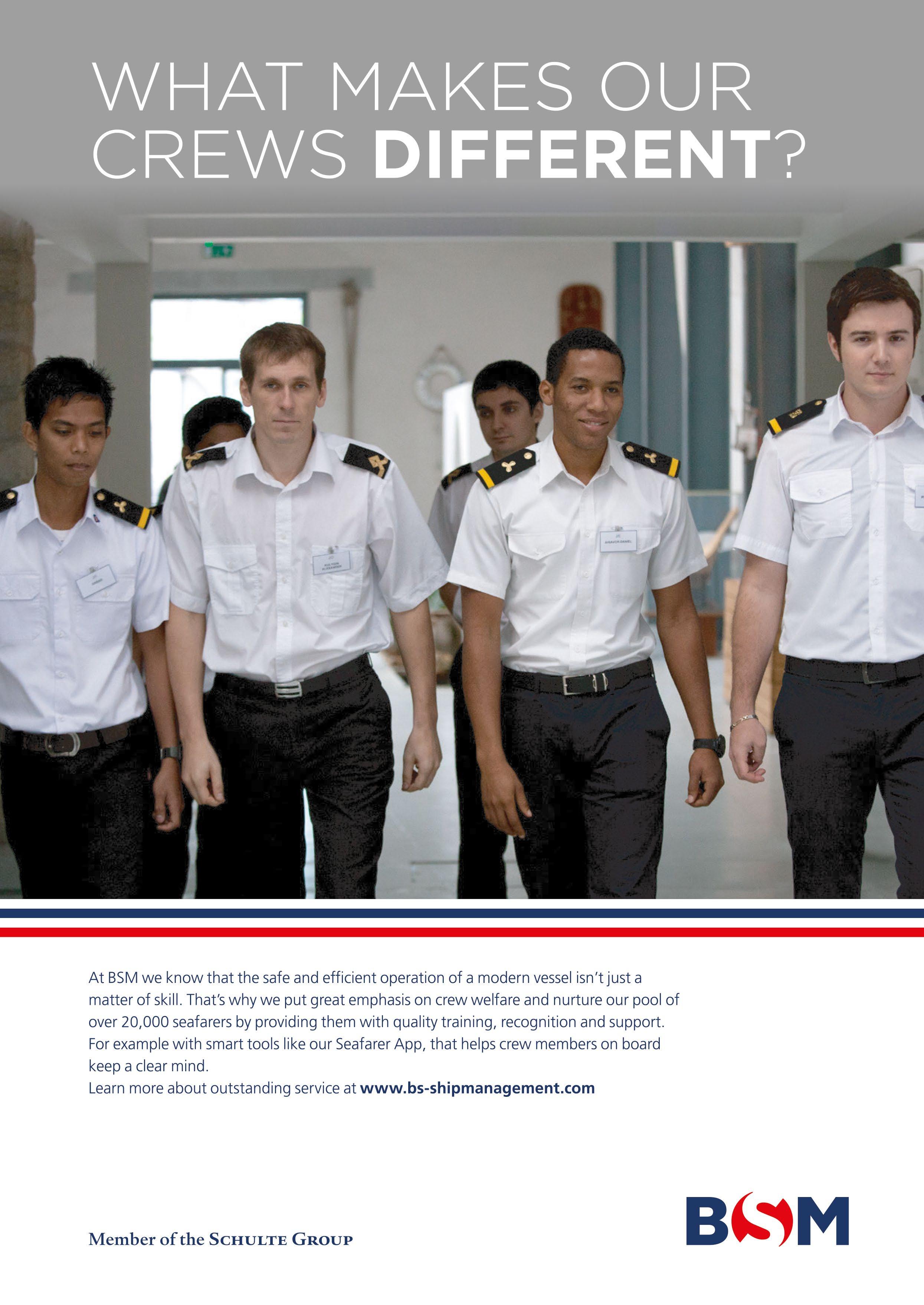
P&I and Law
Ship Management International Issue 101 January/February 2023
Classification RINA develops LNG and hydrogen pioneering propulsion concept
At end-2022, RINA announced the signing of a Joint Development Project with Maran Dry Management Inc. - part of the Angelicouusis Group, Greece’s largest ship owner - and Chinese designer SDARI (Shanghai Merchant Ship Design & Research Institute) for a pioneering LNG and hydrogen powered 210,000DWT bulk carrier.
The project will be based on a propulsion arrangement which reduces the running machinery at sea and combines the ship’s fuel (LNG) with steam to produce hydrogen and CO2. The project sees the design, which was launched earlier last year for an MR tanker, in its first application for a bulk carrier.
Approval in Principle (AiP) for the hydrogen powered MR design, conceived by RINA and designed by Sweden’s FKAB Marine, was granted in February 2022. Antonios Trakakis, Greece Marine Technical Director at RINA, commented: “To meet CO2 reduction targets, shipping is faced with the challenge of having solutions which either rely on fossil fuels, but which still require technology to mature, or on new, zero carbon fuels, the availability of which is still far from being guaranteed.
“This new design enables the use of hydrogen as a fuel today without the need for bunkering and storage on board and exceeds IMO 2050 targets for 70% reduction of carbon intensity.”
Since then RINA has gone on to issue the first AiP for a Very Large Crude Carrier using the same innovative propulsion solution of combining the ship’s fuel (LNG) with hydrogen produced onboard.
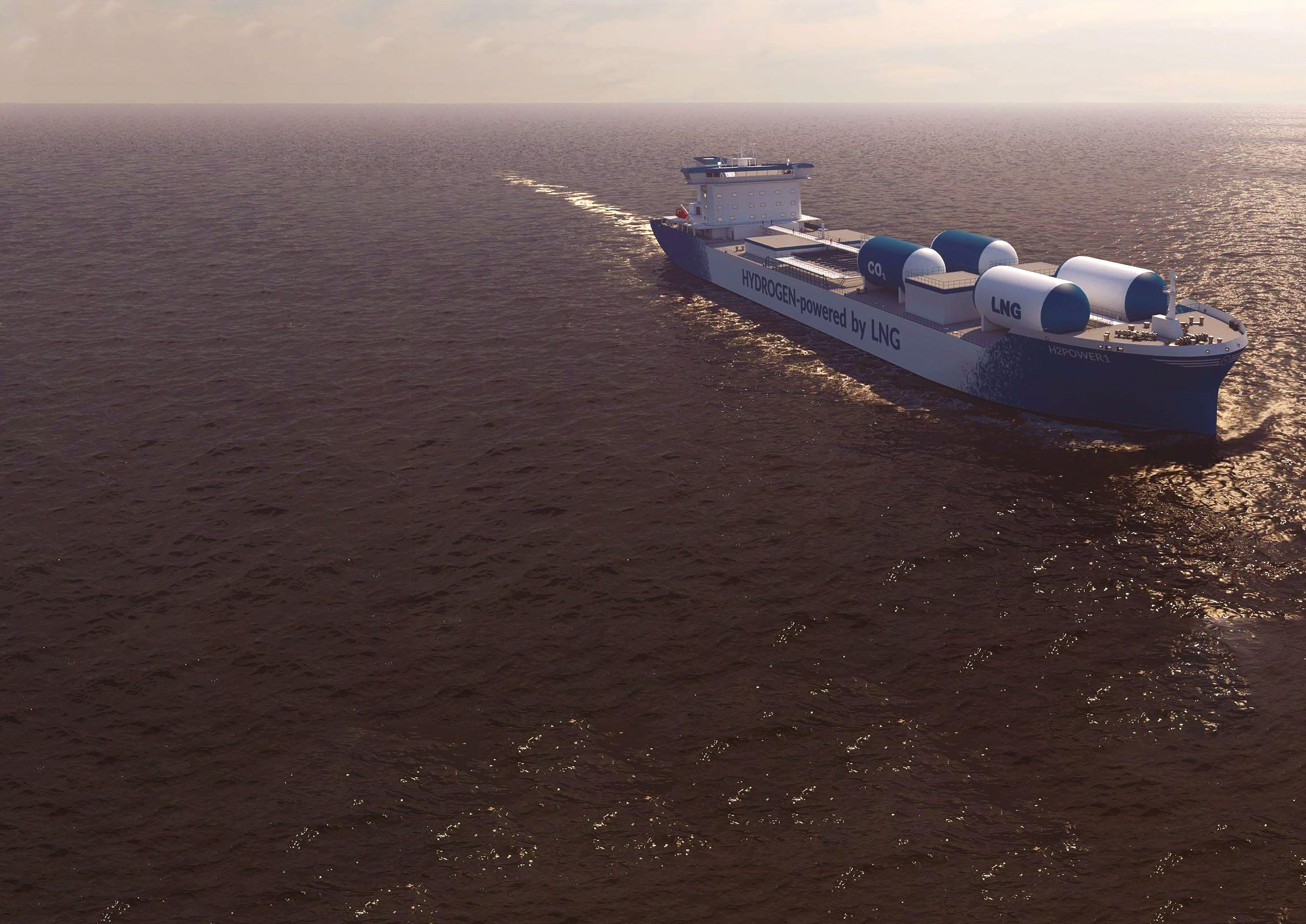
The VLCC’s LNG/hydrogen-fuelled vessel general arrangement was developed by Shanghai Waigaoqiao Shipbuilding (SWS), based on the result of a joint project with Marin, the Liberia Administration, Wärtsilä, ABB and Helbio (a subsidiary of Metacon AB) and RINA.
RINA explains that the propulsion concept is based on combining LNG with steam in a Helbio gas reformer to split LNG molecules into hydrogen and CO2. Hydrogen is then directly used to fuel the internal combustion engines and fuel cells. The capture of carbon atom directly from the LNG molecules, serves as a pre-combustion technique, and the cryogenic separation of CO2 from a stream of reformed gases rather than from exhaust emissions results in much smaller installation on bard which eliminates the use of chemicals and the penalty in energy consumption.
“One of the challenges for shipowners in meeting IMO carbon emission targets is knowing what the future holds,” commented Giosuè Vezzuto, RINA Executive Vice President. “The industry is considering many options using different technologies and new fuels, aiming to minimise the energy consumption and the resulting CO2 emissions on board. Shipowners need to be confident that onshore bunkering facilities and other supporting infrastructure will be available before investing in new vessels.
“This LNG/hydrogen fuelled design for VLCCs is modular and scalable and provides a practical solution that can adapt over time to meet increasingly stringent emission reduction targets and ensure their investment
is optimized throughout the natural lifespan of the vessel. The design only requires LNG bunkering, which is widely available today.”
Returning to the latest approval of the propulsion technology for a Newcastlemax bulk carrier design, Paolo Moretti, CEO at RINA Services, commented: “The concept was conceived to be used on a wide range of vessel sizes. This joint development project will show how a Newcastlemax bulk carrier design can benefit from the LNG and hydrogen solution. We are privileged and very happy to be working with Maran Dry Management and SDARI, supporting their pioneering point of view on decarbonisation.”
Mr.Wang GangYi, Chief Engineer at SDARI, added: “This is an exciting design that enables shipowners to work towards IMO 2050 with confidence, as it does not rely on the availability of new fuels or additional technological developments to maintain the ship’s A rating going forward. We too are delighted to be working with a company such as Maran Dry Management and RINA and hope this will be the start of a long and mutually beneficial relationship.”
The design is based on a pre-combustion carbon capture principle: the CO2 is captured from splitting the LNG molecules before the combustion in the engine takes place, rather than from exhaust gas emissions. This involves lower mass flows, therefore a reduced space required, and scalable installation to progressively keep up with the pace of the
emissions reduction requirements up to 2050. The vessel can be built as an ordinary dual fuel ship, and the extra equipment installed once regulations incentivize the investment. The solution addresses existing LNG bunkering facilities and requires no onshore hydrogen infrastructure and no need for supply and storage of hydrogen on board. It will also aim to reduce the resistance of the ship to increase overall operational efficiency.
As the Class Society, RINA will review calculation and design drawings submitted by SDARI to ensure they meet the latest statutory and RINA Classification Rules and Regulations, using the experience already gained on this innovative fuel solution.
“This is a practical solution and a practical application,” concluded Moretti. “It is great that a pioneering company such as Maran Dry Management is taking on this project, which we hope will be the first of many vessels that adopt this technology to meet decarbonisation targets. We are very proud to be working with Maran Dry Management on this ground-breaking design.”
Separately, another vessel design using 100% hydrogen propulsion was approved by RINA last September. Aurelia Green Ship Concept Design’s ACD01 1000 is a RoRo vessel for transporting roll on/roll off cargo, with electric propulsion using highly compressed H2 as fuel, a system which the company says can be applied to other ship designs. l
33 Issue 101 January/February 2023 Ship Management International 32 Ship Management International Issue 101 January/February 2023 Classification
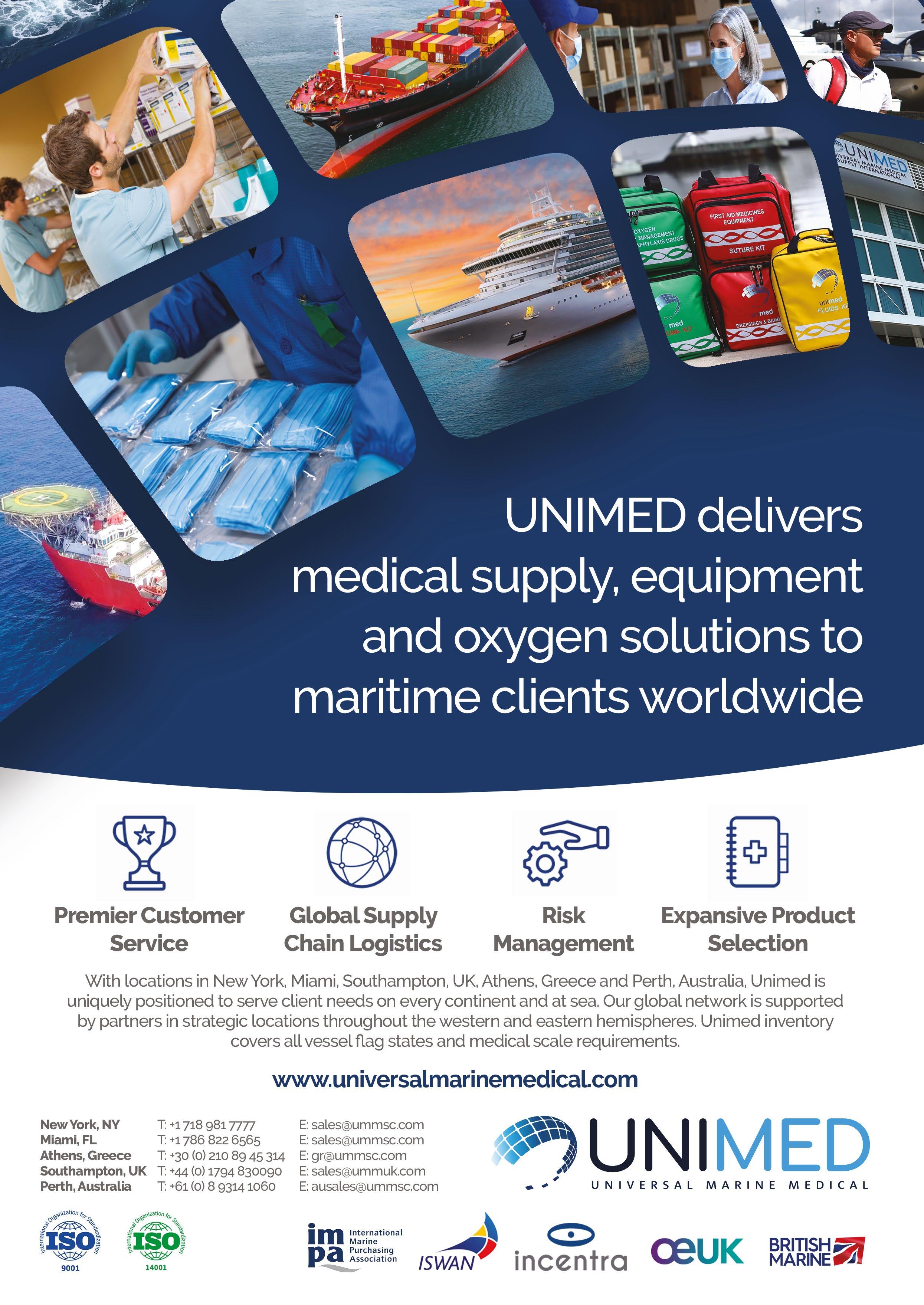
Alternative Fuels
Biofuels – no need to wait on infrastructure to decarbonise
By Dr Nicholas Ball, CEO of XFuel

Shipping is widely regarded as one of the world’s most difficult industries to decarbonise. There aren’t many viable low carbon solutions available today for larger vessels, with some of the most talked about options awaiting trillions of dollars of global infrastructure investment before they can materialise.
This waiting game has already left the industry on course to miss the IMO’s current decarbonisation goals, which are expected to be revised to be more ambitious and align with Paris Agreement targets in the near future.
If cargo owners, financiers and investors, as well as their stakeholders, are starting to take note of shipping’s environmental credentials today, it won’t be long before that pressure becomes overwhelming.
Shipowners and operators do have options today, though.
Second-generation biofuels can accelerate decarbonisation, while new technologies mean that they can be used interchangeably and with the same, existing infrastructure as traditional bunker fuels.
Building or retrofitting a ship that runs on a ‘new fuel’ is incredibly expensive. But having a new ship that can’t
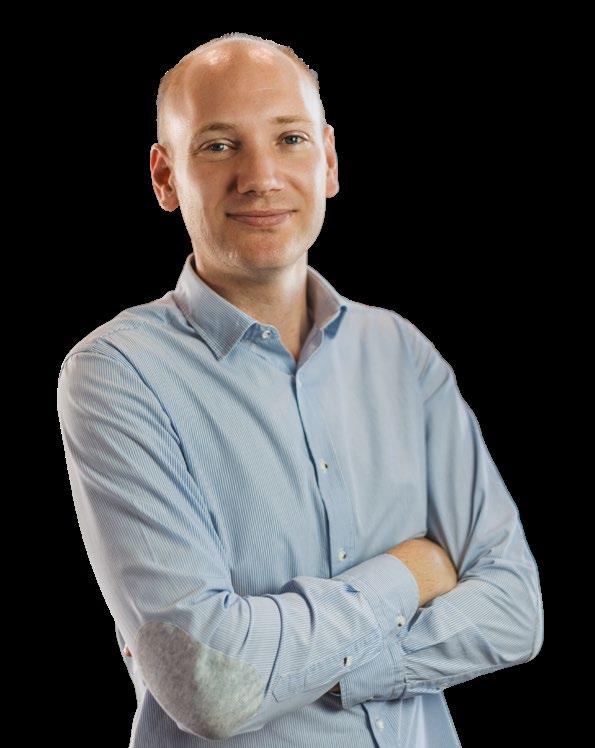
effectively trade on lucrative routes – or that must wait at anchor for bunkering services for weeks as supplies are arranged – is more expensive.
This is the conundrum that a modern shipowner faces. If you bet on hydrogen, methanol, or ammonia today, you have to rely on an incredibly small number of ports that carry those fuels and which are exposed to supply chain shocks. You couldn’t fill your ship’s tanks with VLSFO and carry on as normal; you would simply have to wait.
The problem that forward-thinking shipowners face is logistics, and the size and scale of logistics required. A recent UMAS study found that $1-1.9 trillion of investment will be needed to build shipping’s ‘new fuel’ infrastructure, with land-based energy production accounting for the majority of the expense. On top of this, virtually every port around the world would also have to invest significant sums in new bunkering equipment.
Shipping cannot wait for this infrastructure to be built.
‘Drop in’ advanced fuels offer a solution today.
A recent European Maritime Safety Agency (EMSA) report highlights this potential, saying that “biofuels potentially offer medium and long-term marine fuel
35 Issue 101 January/February 2023 Ship Management International
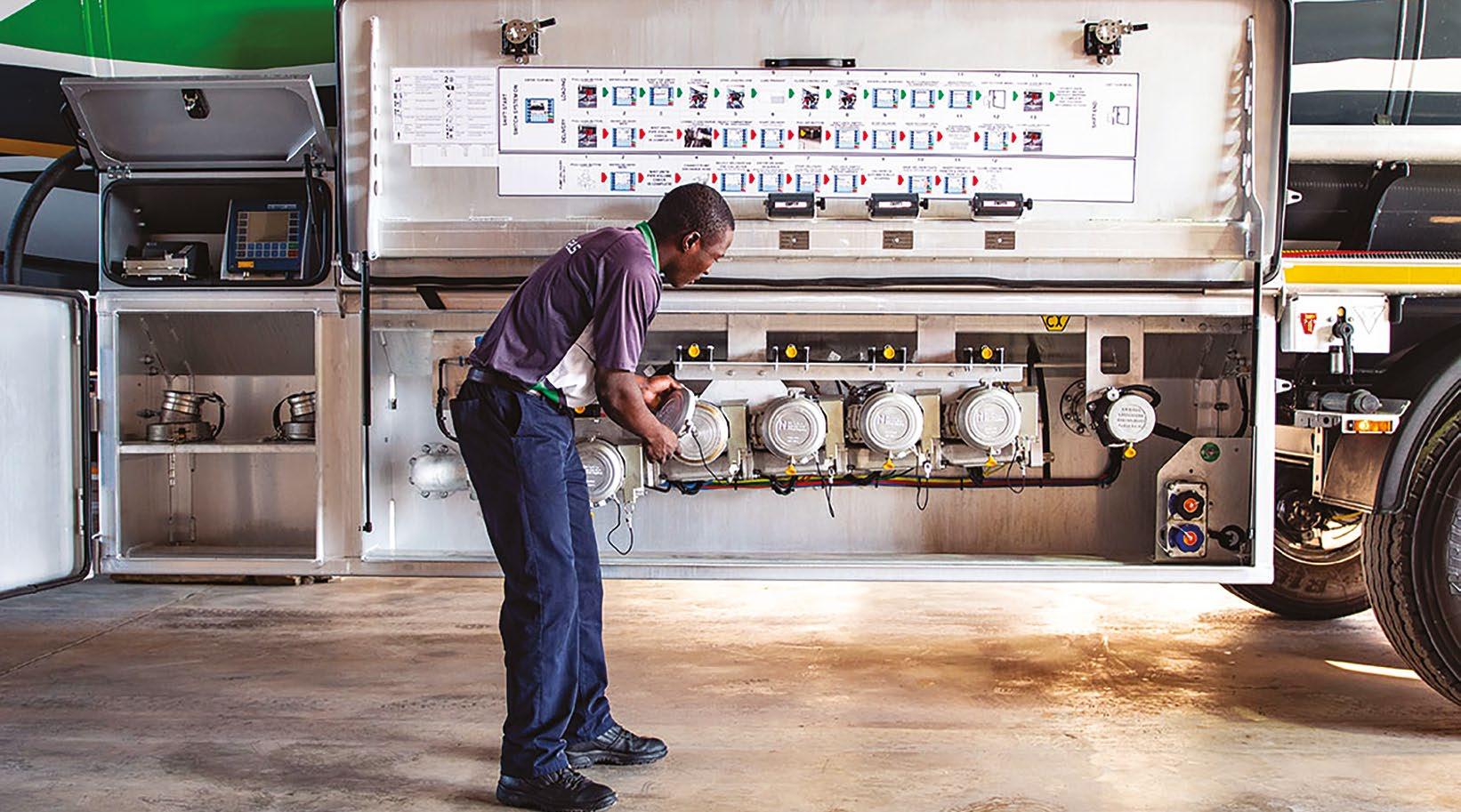

alternatives that can enter the market relatively quickly. They also offer the potential, if sustainability criteria are met, to reduce carbon output compared to traditional carbonbased fossil fuels.”
The ‘drop-in’ characteristics of certain biofuels mean that conventional fossil fuels can be replaced without modifications to existing engines, fuel tanks, pumps, supply systems, or storage or bunkering infrastructure. Some are ISO 8217:2017 compliant, which means that they can also be blended interchangeably with traditional VLSFO, based on local availability or commercial constraints, to provide immediate, flexible and cost-effective emissions reductions.
Scaling sustainably
Feedstocks, or the raw ingredients and biological building blocks of biofuels, have historically presented some of the main challenges to scaling up biofuels. This is especially true in an industry that uses as much liquid fuel as shipping.
First-generation biofuels, for example, use crops as feedstocks. This leaves the price and availability of these fuels exposed to volatile agricultural commodity markets and can cause compatibility issues. The reliance on food crops could also dramatically impact food supplies or ecosystems if production scaled up to meet shipping’s large demand. We witnessed such an event during the 2008 global food crisis, where the diversion of food crops to biofuels was a major contributing factor.
Second-generation biofuels were developed to overcome these sustainability challenges. They are derived from waste, rather than crops, and thus do not impact land use or food security. However, using waste feedstocks alone will not deliver the volumes of fuel that shipping needs.
The most common second-generation biofuel currently on the market is HVO-based, which means it uses waste vegetable oils and animal fats.
Where this is a more sustainable option, those waste streams are scarce and there is only limited scope for increasing collection. This makes these fuels expensive, while running the risk of not being produced in high enough volumes to create industry-wide change.
Lignocellulosic – or woody, plant-based waste biomass – is not encumbered by these issues.
New refinery technologies have unlocked lignocellulosebased advanced fuels, derived from the waste produced by the building, manufacturing, agricultural, and forestry sectors, and which would otherwise be left to decompose or sent for incineration.
Furthermore, lignocellulosic waste is readily available in high enough quantities to meet shipping’s clean fuel demand all over the world.
These new refinery technologies can create direct ‘drop in’ VLSFO or ULSFO equivalents, certified to the ISO 8217:2017 standard.
Moreover, in the case of sustainable drop-in fuels producer XFuel, their low-heat processes mean that refineries benefit from both low CAPEX and low OPEX – even at small scale –producing fuels at a comparable price to fossil fuel equivalents.
Consensus on green ship propulsion could yet take decades, and infrastructure could take longer. Secondgeneration biofuels are the only way for the sector to meet its current and future targets, and for shipowners and operators to meet the criteria set forth by their biggest stakeholders.
Lignocellulose-based advanced fuels can deliver this at scale, with flexibility, cost-effectively, and sustainably. l

36 Ship Management International Issue 101 January/February 2023 Alternative Fuels

Crew Welfare Lingua franca of the sea opens door to opportunities
An exclusive SMI interview with specialist in seafarer Maritime English language training, Catherine Logie of Ocean Technologies Group (OTG)
With her background in English language teaching followed by pioneering work at Marlins, Catherine Logie has a very specialised take on some of the issues that affect the wellbeing of the maritime workforce.
Today, she works for more broadbased e-learning provider, Ocean Technologies Group (OTG), as head of Direct to Consumer Services, in charge of the learning content to which seafarers can subscribe directly.
Realisation of the importance of English language skills at sea really took off after the Sea Empress accident back in 1996, she relates, when a major oil spill occurred at the entrance to Milford Haven near the southwest tip of Wales, the third largest oil spill in the United Kingdom at the time. Although communication was not a contributing cause, the accident did highlight the importance of clear and accurate communication and the requirement for English language competence by multi-national crews.
The vessel shipmanager Acomarit, later to become part of V.Group, initiated an intensive English language research and development programme that was to evolve into the business Marlins.
A young Ms Logie was recruited on account of her specialist background in the methodology around language training and testing, having worked for three years as VSO (Voluntary Service Overseas) teacher trainer of English as a Foreign Language in a remote region of Indonesia.
“Acomarit had great foresight at that time to realise that the industry as a whole was moving towards multilingual crews and away from entirely monolingual crews that were the norm in earlier years,”
she tells SMI. “Regardless of nationality or culture, seafarers need to be able to communicate in a common working language: the IMO eventually made this mandatory in the 2010 Amendments to the STCW Convention.
“Initially, Maritime English skills were viewed as critical to safety: today, people understand that language and communication skills have wider benefits. In our international industry, you need strong language skills for leadership, professional development and to acquire and share new technical expertise rapidly.”
With no previous experience of shipping or ship management, “when I first joined the industry, I spent every day learning as much as possible, as fast as possible,” in her new role as Acomarit’s English Language Coordinator, she continues. The company offices in Latvia and Russia were used to pilot the company’s newly developed Maritime English test, in partnership with the International Chamber of Shipping (ICS).
Marlins then developed classroom courses, training materials and the IMO’s Model Course 3.17, in Maritime English, contributing to the specialised domain within the field of English for Specific Purposes. And after the merger with V.Group, the wider network’s crew management offices adopted the Marlins Maritime
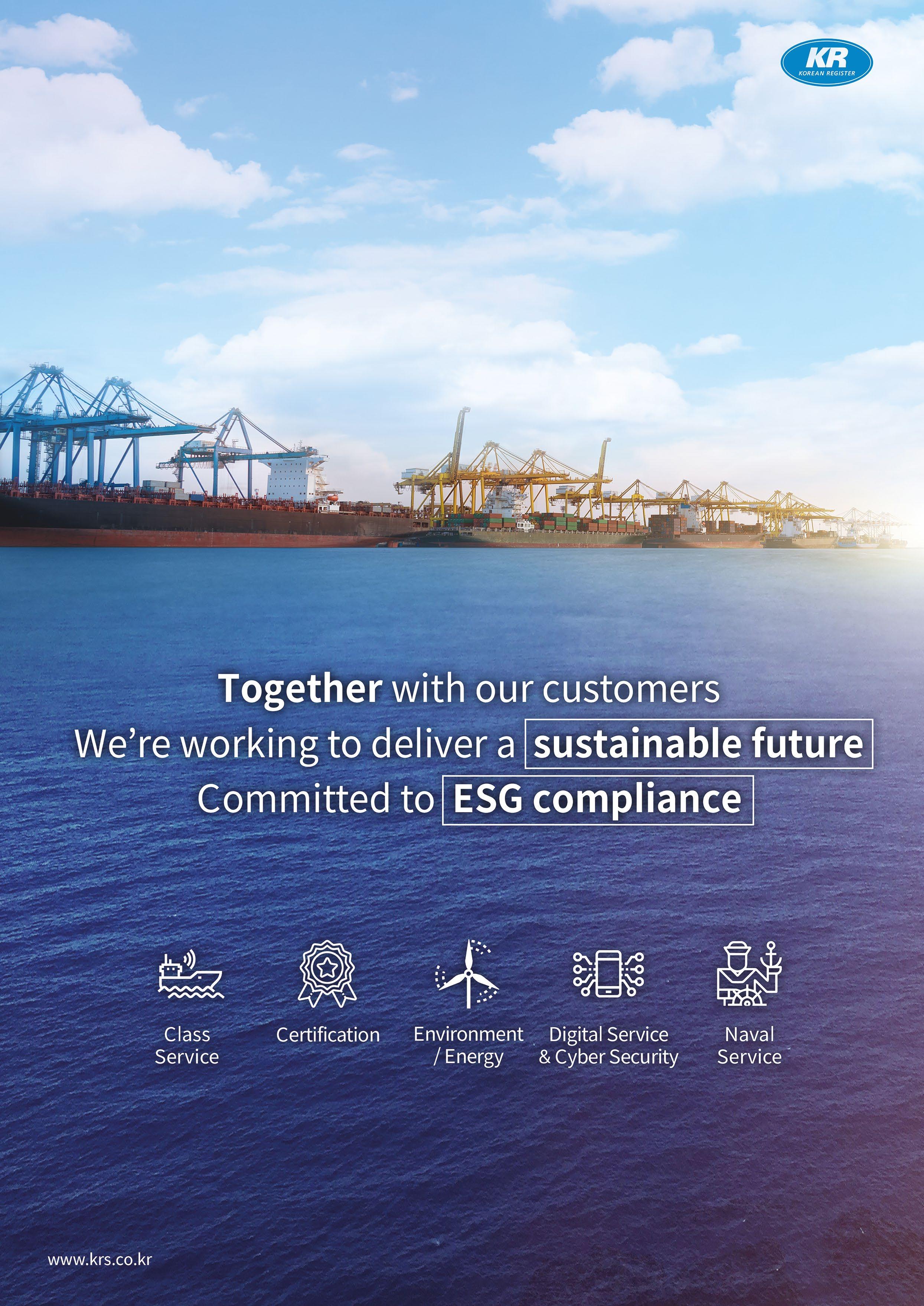

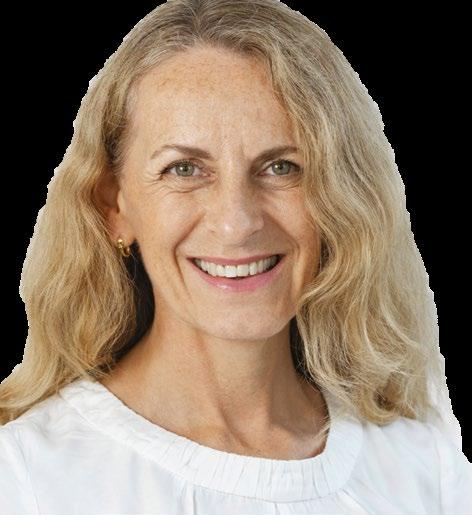
English programme for recruitment and training of seafarers. Many other companies took up this service and flag states added support by setting standards for English language competence.
“Our data shows us that English language levels have improved significantly over the years. The problem is when crew are recruited from countries where General English is not widely spoken. Maritime Academies do not have time on the curriculum to teach General English”, she continues, “maritime academies tend to focus on specific maritime terminology so if students lack a General English level, they might graduate with some knowledge of maritime terms but could struggle with listening and speaking skills.”
This affects the social dimension of language competency. Seafarers who find themselves unable to converse fluently and easily with fellow shipmates may retreat into same-language cliques or even enforced solitude, thereby increasing risks of isolation and depression, of which more anon.
Which is where the more holistic offer of OTG comes in. The Group comprises four e-learning brands: Seagull, Videotel, Marlins and MTS (Maritime Training Services).
This bundling of different learning and assessment companies gives OTG “a complete recruitment suite that includes competency evaluation, psychometric
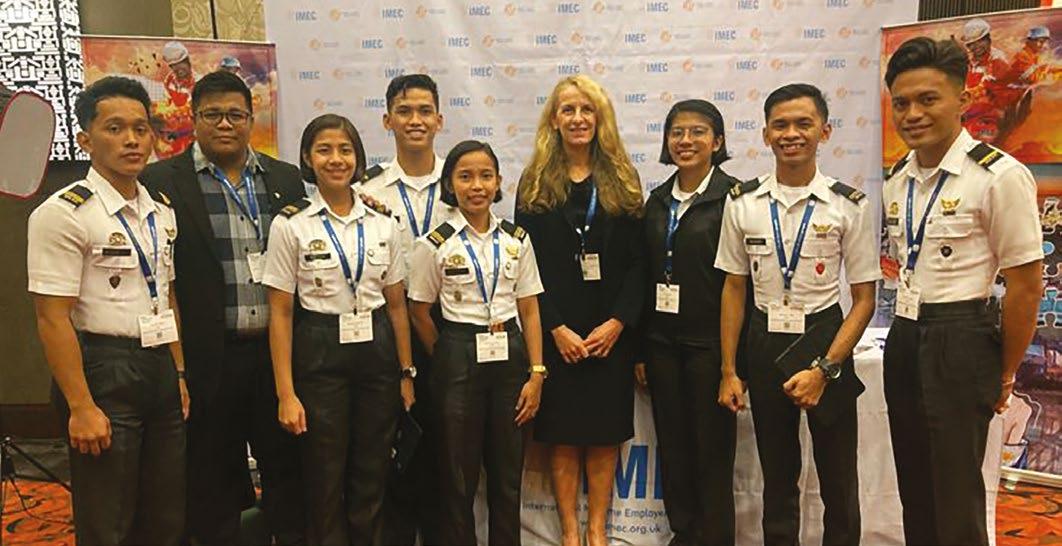
testing, personality profiling and English language training and assessment. We can test online, face-to-face, via adaptive assessments (self-testing) or AI remote proctoring (supervised testing). We can then support crew with self-study materials to address skills gaps.”
“I take care of the part of the business that deals with seafarers directly,” she continues, “who are motivated to self-assess and learn. We have a global e-commerce suite that enables individuals to access the tests and e-learning they need on a ‘pay as you go’ basis. A large part of what we sell is STCW (Standards of Training, Certification and Watchkeeping) e-learning courses with flag state approvals so people often come to us to obtain STCW training and certification. From there, they can see our broad range of learning content which we are constantly expanding to support cost effective ways of that individuals can undertake continuous professional development (CPD).”
Regarding broader seafarer crewing and training ‘issues’, Logie cites the rising incidence of mental health problems; lack of seagoing berths for cadets at “proactive” companies where they can progress to becoming junior officers; and a lack of recruitment of women seafarers.
“With mental health, we recognise there are different conditions and situations that need to be addressed. The industry needs to have access to good quality training with content specifically designed for seafarers from a range of cultural backgrounds. This should address problems such as depression, anxiety, stress, resilience,
PTSD (post-traumatic stress disorder), loneliness, bullying and harassment and cultural awareness. Also, isolation where people spend [too much] time on their devices rather than enjoying entertainment collectively – regular social interaction is vital to wellbeing.”
To help tackle all the abovementioned problems, “the language of mental health needs to be taught and discussed openly, recognising that cultures differ greatly when describing mental health conditions,” she adds. OTG itself offers a whole range of mental health e-learning resources, and also works with ISWAN (International Seafarers Welfare and Assistance Network), which has a team of multi-lingual counsellors dedicated to seafarers.
“The payback is that you want seafarers to be healthy in body and mind,” Logie says, “if you want your ship to be healthy. Companies tend to focus a lot on ship condition monitoring but a ship can’t sail without a crew that are mentally and physically fit and able to work, with the aptitude to keep learning new skills”.
“I’m optimistic, which is why I’ve stayed in the industry so long,” she concludes. “There is progress around crew wellbeing, it’s slow but I think the pandemic and ESG initiatives place more attention on seafarers and the communities where they come from.”
OTG’s Catherine Logie is also clearly passionate about her work. “I always say that when I entered shipping it opened a door to a whole new world,” she shares, “I’ve been fascinated ever since and there’s always more to learn.” l
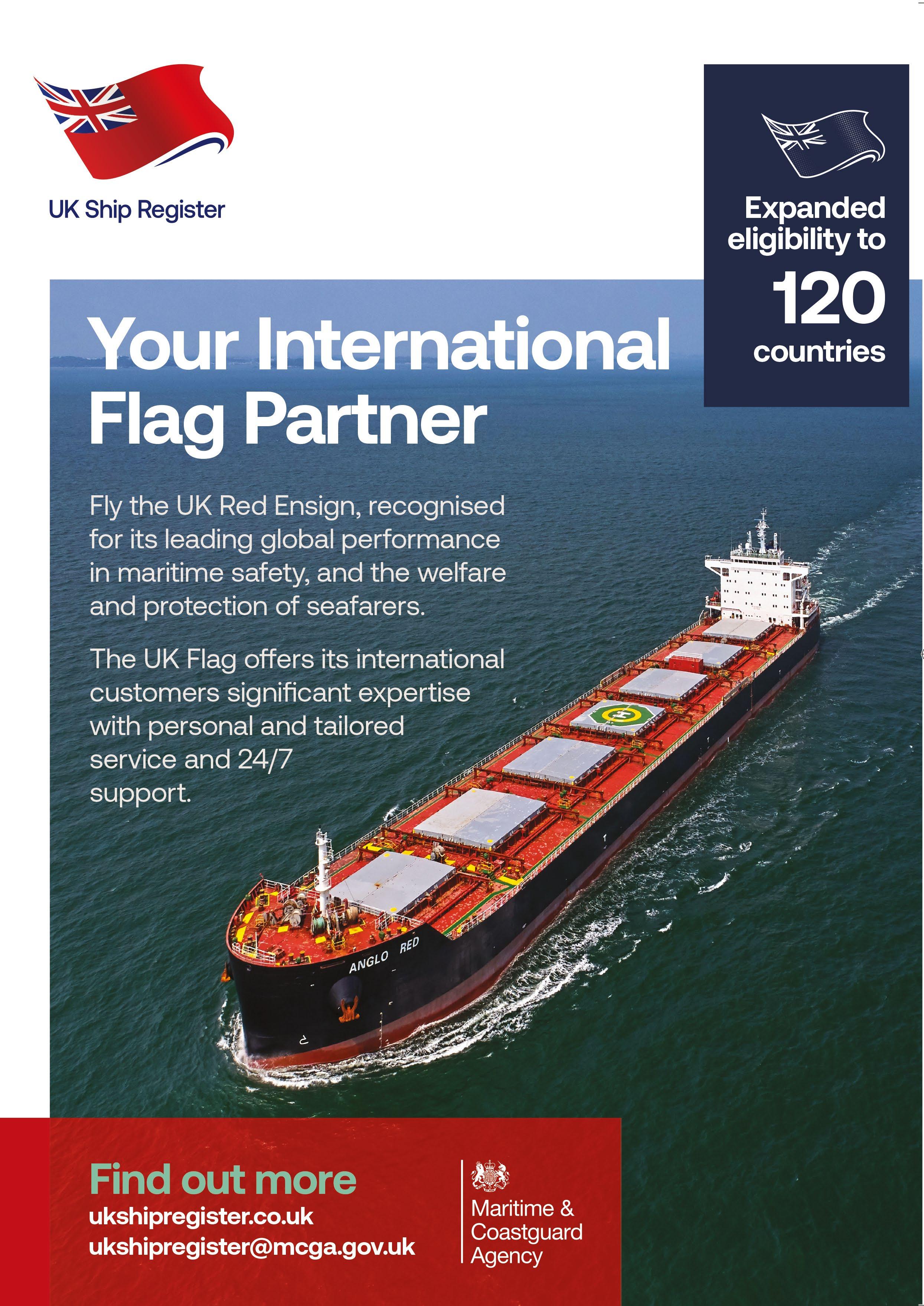 Catherine Logie
Catherine Logie
Crew Welfare Ship Management International Issue 101 January/February 2023
Catherine Logie & cadets

Leveraging data to drive progress on Diversity, Equity and Inclusion (DEI)
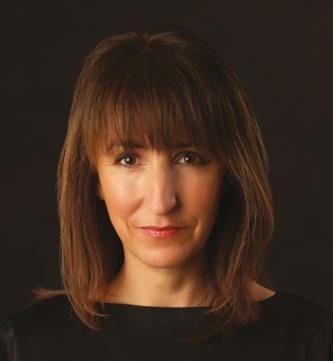 By Heidi Heseltine, Founder of the Diversity Study Group, and CEO of Halcyon Recruitment
By Heidi Heseltine, Founder of the Diversity Study Group, and CEO of Halcyon Recruitment
Shipping has been making progress on diversity, equity, and inclusion (DEI), but there is still a significant lack of ethnic and female representation in senior roles, according to the 2022 Annual Review from the Diversity Study Group (DSG). Our report takes a detailed look at DEI in shipping and is based on over 3,000 responses, covering every part of the globe and a wide spectrum of respondents, in age, seniority, nationality, professional background and other characteristics.
Some of the key trends highlighted by the report reveal that while representation at lower-level roles is improving, C-suite and Heads of Department roles are predominantly held by white respondents, with roughly a quarter of roles headed by those identifying as Asian. Additionally, only 36.2% of respondents said that DEI training is available and 37% of respondents said that their employer could do more to achieve a diverse and inclusive workplace. There are also concerns over reporting discrimination, with 35.8% of women responding that they do not feel they can raise discrimination concerns or declared they would “prefer not to say”.
Data is crucial in measuring progress and setting goals for DEI. It can inform specific DEI initiatives, identify and address bias, and track progress over time. The maritime sector faces challenges in attracting and retaining talent, and data can demonstrate progress in building more diverse and inclusive workplaces. Additionally, greater transparency is increasingly expected by all industry stakeholders, and trusted data is a vital aspect of transparency.
Companies should consider the purpose of their DEI strategy and what they aim to achieve. The effective use of DEI data supports the delivery of business strategies, highlights progress and identifies areas requiring further attention. It also helps in responding to employee pressure for change and attracting and retaining talent.
To make further progress this year, shipping leaders need to ensure DEI strategies are aligned with business objectives, that leaders are thoroughly equipped and supported to lead inclusively, and that appropriate data is collected, measured and used to further define strategy and underpin progress.
Pressure is coming from society and across the supply chain for organisations to prioritise DEI, making it all the more crucial for shipping to show leadership. DEI is a powerful agent of change and aligning DEI with the wider business strategy can lead to the best outcomes. To succeed, DEI needs the full backing of the organisation’s leadership team, including a commitment to long-term support, defined accountability and a clear communications plan conveying the why and the how of DEI programmes whilst also showcasing success stories. The shipping industry is making encouraging progress on DEI, but there is still a long way to go. The DSG Annual Review highlights the importance of benchmarking progress over time. If shipping wishes to attract and retain the best talent possible, it is critical that we continue to strive for more diverse, inclusive and equitable workplaces where everyone can flourish and fulfil their potential, and DEI data is a key tool in achieving that goal. l
To receive a copy of the DSG Annual Review, please email info@diversitystudygroup.com
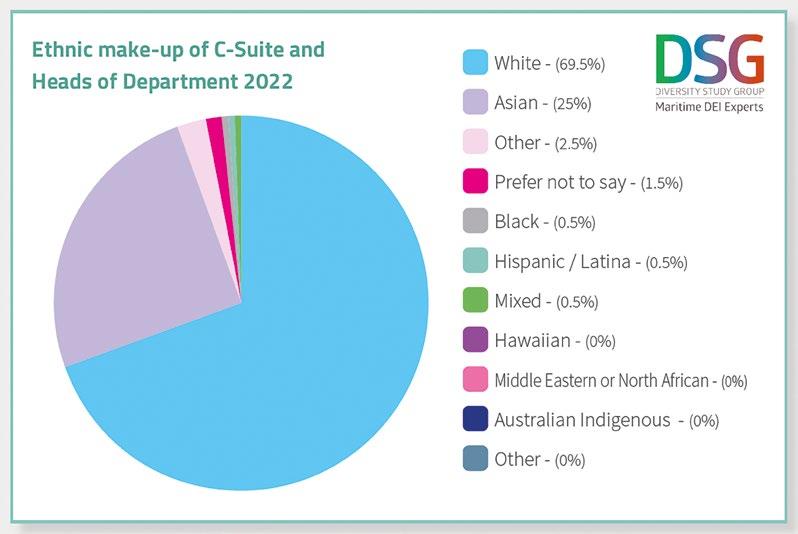

42 Ship Management International Issue 101 January/February 2023
Human Element: Crew Welfare
Ship registers and classworking together more closely than ever
By Felicity Landon
Ship registers could be forgiven for having an identity crisis. They must ensure compliance with regulations – but also focus on customer service to keep their shipowners loyal. Their customers expect simplification and support wherever possible. Ship registers have responsibility as regulators – but as part of this, their dependence on, and relationship with, classification societies only increase in importance. Ship registers must enforce and they must encourage.
The ‘carrot and stick’ element of all this applies particularly in the key topics in shipping today –decarbonisation. Shipowners need support as they prepare for the new Carbon Intensity Indicators (CII) and Energy Efficiency Existing Ship Index (EEXI) requirements, consider future fuels, focus on ESG reporting and meet the IHM (Inventory of Hazardous Materials) requirements as set out in the EU Ship Recycling Regulation (and all of those are just for starters). Meanwhile, registers are taking major strides forward in digitalisation of services, documentation and certification.

Classification societies, as Recognised Organisations (RO) have long been a key partner to flags. Now the relationship is evolving further.
Bill Gallagher, President of IRI, (pictured right) the administrator of the Marshall Islands Ship Registry, said:
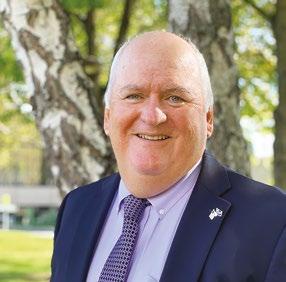
“I have been 32 years with the registry, and I have watched a real progression as far as our flag state involvement with class is concerned. When was ‘growing up’ in the registry early on, we were very much focused on flag state administration and didn’t have a strong technical team.
“Now, having the technical people of the calibre we have today has put us on an equal footing with class and our relationship is even better than ever.

As opposed to them giving us information and to a sense dictating, we approach them as equal partners. That has been an evolution long overdue.”
There is a symbiotic relationship and constant communication between flag and class, observed Gallagher.
“We need each other. We are able to work with owners and operators on technical issues with class taking the lead, and class gets the statutory authority from us. However, over the years we have really upped our game – and we had to, because of the regulatory world we live in. We can’t operate without the technical expertise.”

At the Liberian Registry, Alfonso Castillero, CEO of LISCR (pictured left), said: “Three decades ago, classification societies and flag states were working very independently. Classification societies only enforced their own rules and regulations mainly covering hull structures, machinery and electrical control systems, whereas flag states were enforcing all statutory requirements such as load line, tonnage, intact and damage stability, fire safety, lifesaving appliances, navigation, pollution prevention, etc.
“Flag states began to delegate more and more of the statutory services to the classification societies. This was an efficient and cost-effective way, as long as the rules and
regulations to be enforced are prescriptive, i.e. compliance or non-compliance can easily be determined.”
However, he added, in recent years the international regulatory framework has changed from predominantly prescriptive rules and regulations to goal-based standards and risk assessment-based approvals, “in order to allow innovative design features, new technologies and alternative fuels to be approved”.
“Applying a risk-based approach to justify approval of an innovative ship design, new technology and alternative fuels will require the final agreement by the flag state. So the classification society and flag state need to have a much closer collaboration. Therefore, the relationship between classification societies and flag States has changed and is now more important than ever. This is very important, especially when focusing on innovative design features, new technologies and alternative fuels to decarbonise international shipping.”
The relationship between ship registers and class as ROs is getting more complex, commented Ivan Sammut, Registrar General of Shipping and Seamen at Malta’s Merchant Shipping Directorate (pictuured right). “As the regulatory landscape becomes increasingly more complex, whereby sometimes even
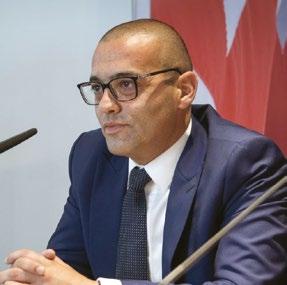

45 Issue 101 January/February 2023 Ship Management International Ship Registries
Ship Registries

rules regulations are not clear, it is imperative that registers and ROs work more closely together in order to establish that fine balance in matching what makes practical and technical sense to meet the regulatory requirements, especially with the everincreasing preference for goal-based and technological neutrality over the prescriptive policy,” he said.
The Malta administration continued to intensify the implementation of its oversight programme on ROs, said Sammut. This included carrying out of audits in offices around the world to ensure that the relevant procedures and standards are maintained at all times.
“Officials registry also participated in a number of remote audits carried out by the European Commission on its Recognised Organisations. As the number of shipping regulations, particularly environmental and climate related, is continuously increasing, the ROs have been delegated with further tasks in relation to such matters.”
The ever-emerging regulations to drive ship efficiency and reduce pollution have led to continuous development in ship design and the use of modern technologies –which in turn has ensured there is
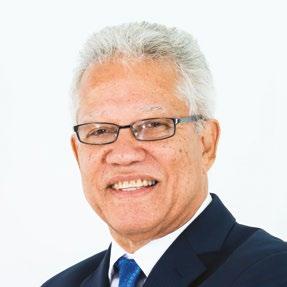
an even closer and more important relationship between class and flag, said Rear Adm (retired) Peter Brady, Director General of the Maritime Authority of Jamaica (pictured above). He noted: “The class societies are the ones with the greater levels of expertise and the ones tasked with the development of the technologies, while flag states enforce the regulations.”
Class societies are required to be independent and impartial when carrying out their duties, thus not giving preferential treatment to clients, he said. “They do not directly police emissions from ships –however, they can refuse to grant the relevant certificates to ships that fail inspections, as well as withdrawing existing certificates.”
of the pandemic and also after that as we continued to carry out essential work in challenging circumstances. We continue to delegate some of this survey work and carry out regular monitoring of it to make sure it is being done in line with international standards, which includes regulations around emissions.”
In addition, the UK Maritime and Coastguard Agency (MCA) has come together with classification societies, and other flag states, as the Maritime Technologies Forum “to allow us to collaborate in a new way in response to the challenges of decarbonisation, exploring the technology options and growing and sharing the knowledge base in support of the shipping industry.”

At the UK Ship Register, Katy Ware, Director of UK Maritime Services (pictured below), said: “The work of ROs has always been very valuable to us as an agency. It was particularly strong during the height
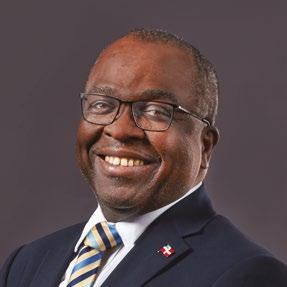
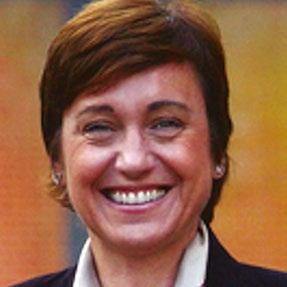
The Bahamas Maritime Authority (BMA) has a strong relationship with its ROs, who have the technical expertise, competence and experience to ensure that Bahamas-flagged ships, which increase in complexity, comply with the international standards, said Capt. Dwain Hutchinson (pictured above), the BMA’s Managing Director and CEO. “This relationship is even more important as technology and designs are

46 Ship Management International Issue 101 January/February 2023 Ship Registries
developing faster than the regulations. The ROs, with the BMA guidance, are able to use a goal-based approach for the proposed construction, design and operation.
“Most statutory certification, audits and surveys for Bahamian ships are delegated to ROs, although approval of exemptions, equivalence and alternative design and arrangements remains with the BMA, so our partnership remains strong.”
The role of the classification society with respect to duties performed on behalf of the Isle of Man Ship Registry has not changed significantly in recent years, in that the delegations have not fundamentally changed, said Toby Brooks, the Registry’s Deputy Director (pictured below).
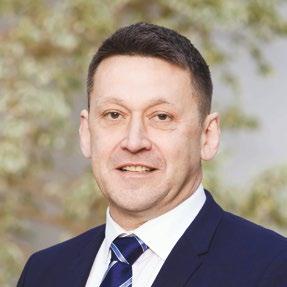
However, statutory surveys performed by an RO on behalf of a flag state will fall under increased scrutiny because of the need for compliance with the IIIC (IMO Instruments Implementation Code), whose key instrument is the Member State Audit Scheme (IMSAS).
“IMSAS came about in response to criticisms that flag states could facilitate substandard shipping by not playing their part in safety, pollution prevention and welfare of seafarers, and is intended to get all states to perform at an equal level. All flag states will be required to provide evidence during IMSAS audits of their performance against the IIIC criteria, which includes all areas of responsibility delegated to external agencies or contracted organisations such as their ROs. IIIC requires the flag state, when entrusting inspection duties to an RO, to establish an oversight programme to closely monitor the RO to ensure their international obligations are fully met.”
Decarbonisation agenda
Without doubt, the new CII and EEXI regulations and ongoing decarbonisation efforts dominated 2022. That will continue to be the case in 2023, with the added layer of MEPC 80 revising the IMO’s GHG (Greenhouse Gas) strategy this year.
Ship registers have responded with a wide range of initiatives and incentives.
The Isle of Man Ship Registry says it became the first flag state to incentivise shipowners on decarbonisation in April last year (2022) when it began offering a discount on registration fees for ships deploying green technology. “The ‘green discount’ is available to operators of cargo ships, commercial yachts or passenger ships which are investing in biofuel, alternative fuels, wind or shoreside energy technology,” said Toby Brooks.
“We were looking at ways to take action on the decarbonisation agenda where there is so much debate about which alternative fuels will be best in the future.
We want to encourage owners investing in green-tech innovation and state clearly that if you are a shipping line making the effort to hit IMO GHG targets, the Isle of Man flag wants to support you. We welcome greener ships to our fleet.
“Moving forward, we are actively participating with industry partners and innovators on numerous working groups that will pave the way for green ships, emission reduction technology and alternative fuel propulsion solutions.”
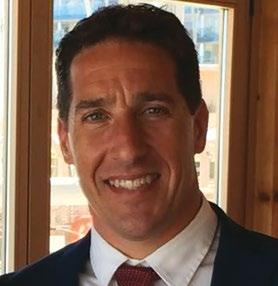
The Gibraltar Maritime Administration (GMA) also introduced ‘green discounts’ in 2022. “These were aimed at rewarding owners who choose to operate vessels adopting energy efficient designs and who adopt green technologies and systems,” said Maritime Administrator Dylan Cocklan (pictured left). “We are constantly looking at developing further positive incentive schemes aimed at promoting sustainability and decarbonisation.”
Alfonso Castillero said: “2022 was a very busy year for the Liberian Registry’s focus on decarbonisation. Preparing for the entry into force of the new environmental regulations for CII and EEXI was one of the most important developments. This both in terms of finalising the regulatory framework at IMO with suitable guidelines to assist our industry in the implementation of these new requirements and also the registry’s procedures to support smooth application of them. The latter has included close collaboration with our recognised classification societies (for EEXI and CII) and our independent verifiers (for CII).”
Castillero also highlighted the registry’s continuous support to decarbonise international shipping “supported by our joint industry projects (JIP) and joint development projects (JDP) in close collaboration with shipyards, ship designers, shipowners/ operators, classification societies, engine manufacturers, innovative technology companies and other key stakeholders”.
“All these JIPs/JDPs are focusing on either innovative design features, new technologies or alternative fuels with the aim to grant and approval in principle (AIP) that will pave the way for our industry to eventually fully decarbonise.”
This year, in terms of the regulatory framework, Liberia’s focus will be on finalising the IMO guidelines for voyage adjustments and correction factors for the CII system, “in order to level out the many inconsistencies that unfairly penalise some niche ship types, e.g. ships with many short voyages and long port wait times”; recognising onboard carbon capture technologies and applying the lifecycle assessment of marine fuels (i.e. well to wake) concept into the EEDI/EEXI and CII regulatory framework; embracing the adoption of innovation, new technologies and alternative fuels into the IMO instruments; and revising the levels of ambition in the IMO GHG strategy (as adopted in 2018).
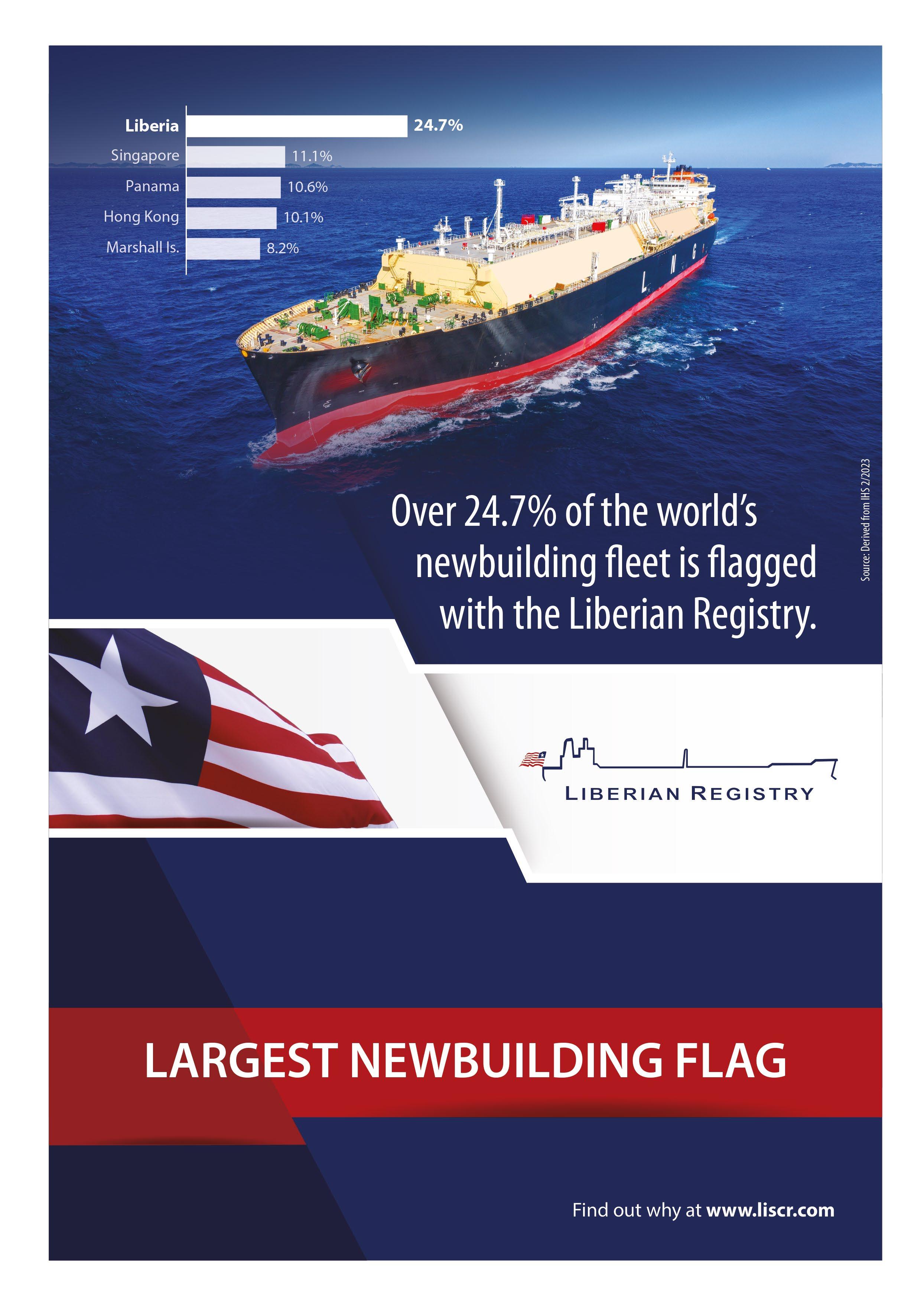
48 Ship Management International Issue 101 January/February 2023 Ship Registries


Decarbonisation is ‘the great focus’ for the industry and specifically for the Marshall Islands, said Nick Makar, SVP Maritime Administration and Regulatory Affairs at IRI (pictured left).
“There are different streams, a lot of developments taking place simultaneously, but all set to converge this year,” he said. “So in a lot of ways, the agenda for 2023 is extremely important not just internally but globally as well. For us, the key developments in 2022 were getting ready for the new EEXI and CII guidelines. As maritime administrator, we [the Marshall Islands] have updated our policies to give effect to those regulatory requirements. Also, we have seen a lot of preparatory work from the industry and shipowners in looking at the new regulations and what the potential impacts are going to be. We have been in close dialogue with owners as well as ROs, doing the statutory work to identify potential difficulties and bottlenecks.
“The EEXI and CII frameworks take effect this year, Ship Energy Efficiency Management Plans had to be updated, EEXI verifications are taking place and it is the first year of data collection for CII. We are monitoring compliance for effectiveness; the industry has been preparing for this for quite some time, so we do anticipate a high level of compliance. There is great awareness and a lot of interest in what the impacts are going to be.”
This year, the MEPC 80 will be a milestone meeting for decisions on the revised GHG strategy, said Makar. In general, he said, shipowners have taken the action they need to when it comes to the new regulations – but emphasised that the industry needs clarity on regulatory requirements coming up. “The reason for that is to know what they can anticipate and what needs to be complied with so investment decisions on newbuildings and technologies for fuels can be taken with the best possible awareness of requirements down the road. Obviously, it is very difficult to make those decisions based on assumption.
“We are trying to convey from owners that they are being proactive, they want to be on the right side of compliance, and they need the appropriate signals in order to do so.”
Katy Ware said: “Decarbonisation has been and will continue to be a massive opportunity for the UK and we have seized it. We are proactively engaged with industry and academics, with international organisations and UK companies in the race against climate change.”
The UKSR’s emissions reduction team has moved into the technical services operation “as a recognition that this is operational and not theoretical”, she said. “Foremost, of course, is making sure that the regulations are keeping pace with the rate of change. It’s always been a tricky balancing act.”
The UKSR is also working to ensure training for seafarers keeps pace with the decarbonisation technology, said Ware. “There is little point having a fleet of climate-friendly vessels that nobody knows how to run. So seafarer training is being changed and updated to match and reflect the way that shipping is moving on. Future fuels, whatever they are, will need different engineering and potentially different skills to use, operate and maintain them.”
The MCA held an energy efficiency tech event in Portsmouth in November, the first in an ongoing drive to engage with experts across decarbonisation.
“This event gave insights on the technology that’s available now to help shipowners and operators reduce their energy usage,” said Ware. “It’s important for us all to demonstrate that being greener helps drive down operating costs and reduce emissions. It benefits those operators but more, it helps to create a culture of being greener in working practices.”
Experts covered people, regulation and safety, as well as exploring future technologies. “The feedback was positive –people are hungry for information on how they can do their bit to reduce their carbon footprint.”
From an EU perspective, the Malta Ship Register has been proactively following the negotiations on the ‘Fit for 55’ package, said Ivan Sammut. “Notably, the negotiations on the proposal for the inclusion of shipping in the EU ETS have been concluded. The work, however, does not end here and further progress is expected to continue on this dossier in 2023, by way of development of the delegated acts formulating the details for the implementation of this Directive.”
Negotiations on the Fuel EU proposal are expected to conclude this year. “From the start of the negotiations, the Malta Ship Registry has highlighted the importance of alignment between the EU ETS with the Fuel EU proposals, as well as the Alternative Fuel Infrastructure Regulation, so as to ensure consistency in implementation of these pieces of legislation, as well as provide legal certainly for the shipping industry.”
Malta has also cautioned against duplication of financial mechanisms, said Sammut, “particularly the proposal to remove the tax exemption on bunker fuels, considering that the EU ETS will also manifest itself as a financial instrument”.
In parallel, Malta has been active in the negotiations at IMO level regarding decarbonisation, particularly the revision of the GHG emissions strategy.
Malta expects further progress towards an agreement at IMO level on a global fuel standard, as well as an international market-based measure such as a levy, said Sammut. “Such regulation at international level is desirable as opposed to regional measures, from the aspect that emissions reductions would be more meaningful given the wider geographical scope as well as from a competitiveness perspective and avoidance of duplication of regulations.”
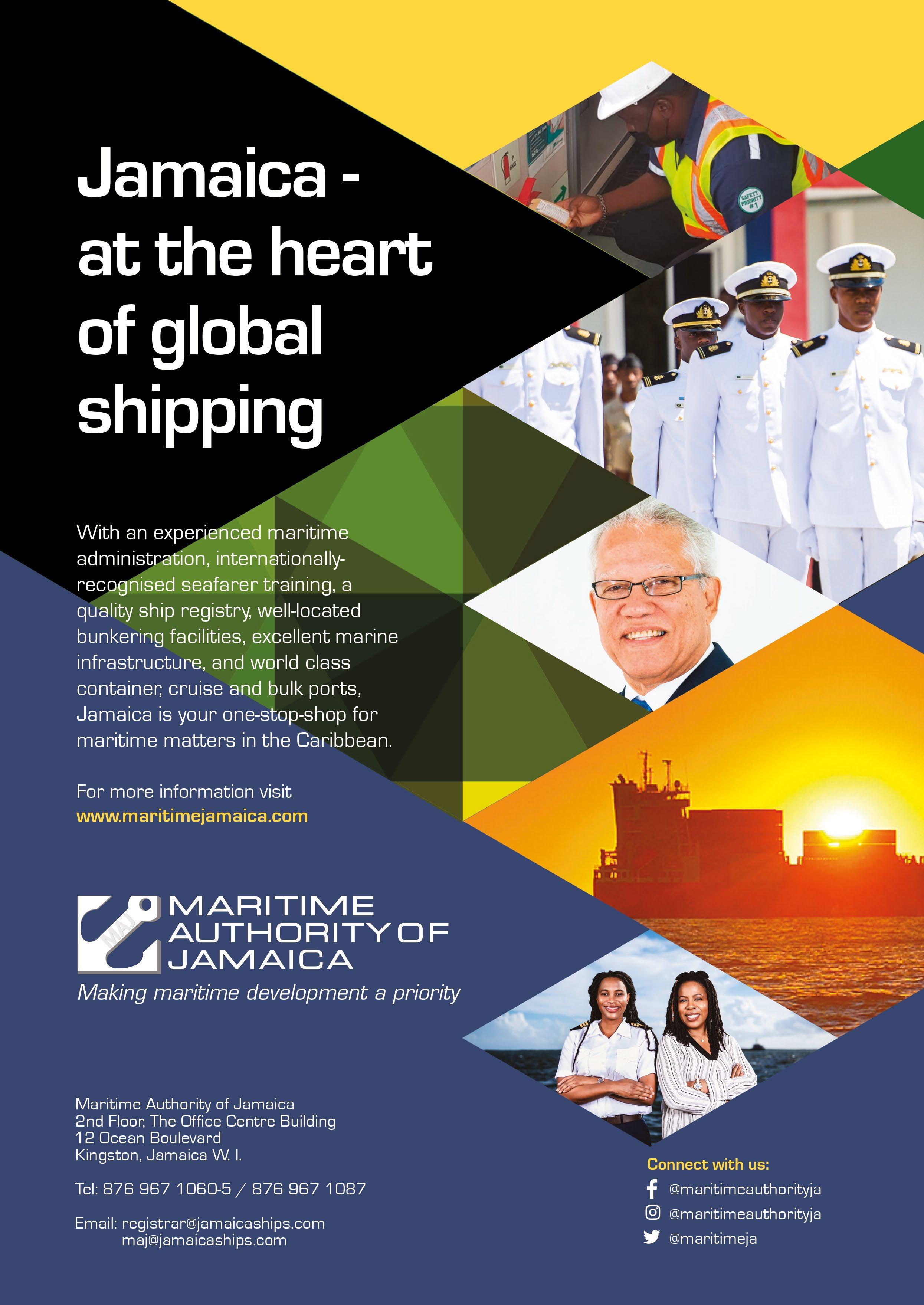
50 Ship Management International Issue 101 January/February 2023 Ship Registries
Finally, the Panama Registry – by some distance the world’s largest - through its incentive program for shipowners and companies, promotes the construction of efficient ships that generate less pollutants. Among the special incentive options is the Eco Ship and New Construction incentive. “
Palau rises up the rankings

P“With these actions, the country shows its commitment to the environment, which is an effort of all,” said the Director of Merchant Marine and Head of the Ship Registry, Rafael Cigarruista (pictured right). “These incentives exist in our regulation since 2014, and 2008 respectively; to support the industry and fulfil our commitment to the environment.”
In November 2021, during COP26, Panama signed the Declaration of Zero Emissions in the Maritime Industry by 2050, whose main objective is that the signatories commit to reduce international shipping to zero emissions while working with the IMO to adopt targets for 2030 and 2040 to achieve the decarbonization of the industry by 2050.
Currently, the directors of the Registry are reviewing possible new implementations related to Annex VI of MARPOL, where incentives will be introduced for ships that demonstrate compliance in terms of design, fuel type and operational measures that reduce polluting emissions. l
alau International Ship Registry (PISR), which describes itself as the world’s leading digital registry, has registered a significant rise in its ranking within the Paris Memorandum of Understanding (PMoU) Flag State performance review covering the years 2019 through 2021. PISR now lies in the top third tier of the Grey List of flag states.
This rapid progress through the PMoU list results from PISR’s digital journey and organisation-wide dedication to creating a leading registry for its customers and a sustainable registry for the industry.
Panos Kirnidis, CEO of PISR, states: “Our rate of progress is a testament to the combination of our unique technology, our staff and the way they blend together. PISR has achieved the most improvement within all the Flags in Paris MOU in a record time, reaching Grey Listing in both the Paris and Tokyo MOUs.
“In 2023, PISR will continue to lead by example by combining its people and technology to redefine the perception of registration services. We have seen continued growth year-on-year and we also have an excellent retention rate. This is because we are constantly talking and listening to ship owners, actively engaging with them to understand and address their concerns and responding to them.”
Following its recent growth, Athens-based PISR has opened a new European regional office in London (UK), and is now exploring options in other regions for 2023.
“PISR has one of the only systems that helps prevent and manage detentions by Port State Control.,” concludes Panos Kirnidis. “Our in-house Deficiency Prevention System (DPS) has demonstrated its importance in ensuring a vessel’s compliance with international conventions, rules and regulations. It is part of PISR’s Quality System and is certified under our ISO 9001:2015 standards and our Anti-Bribery Quality System ISO 37001 standard. This is an invaluable tool for ship owners and part of our measures to help the registry to rise higher up the Paris and Tokyo MoU lists.” l
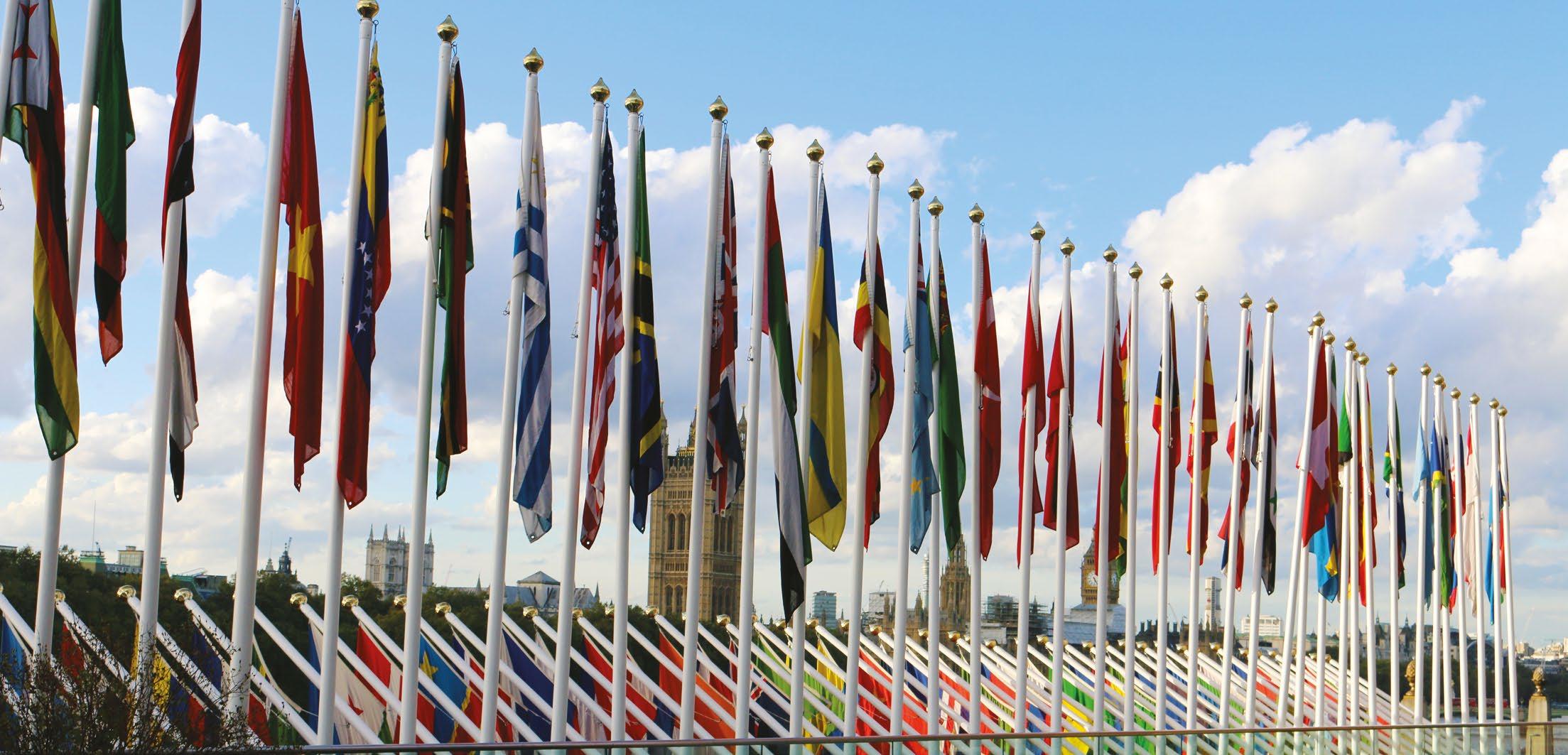
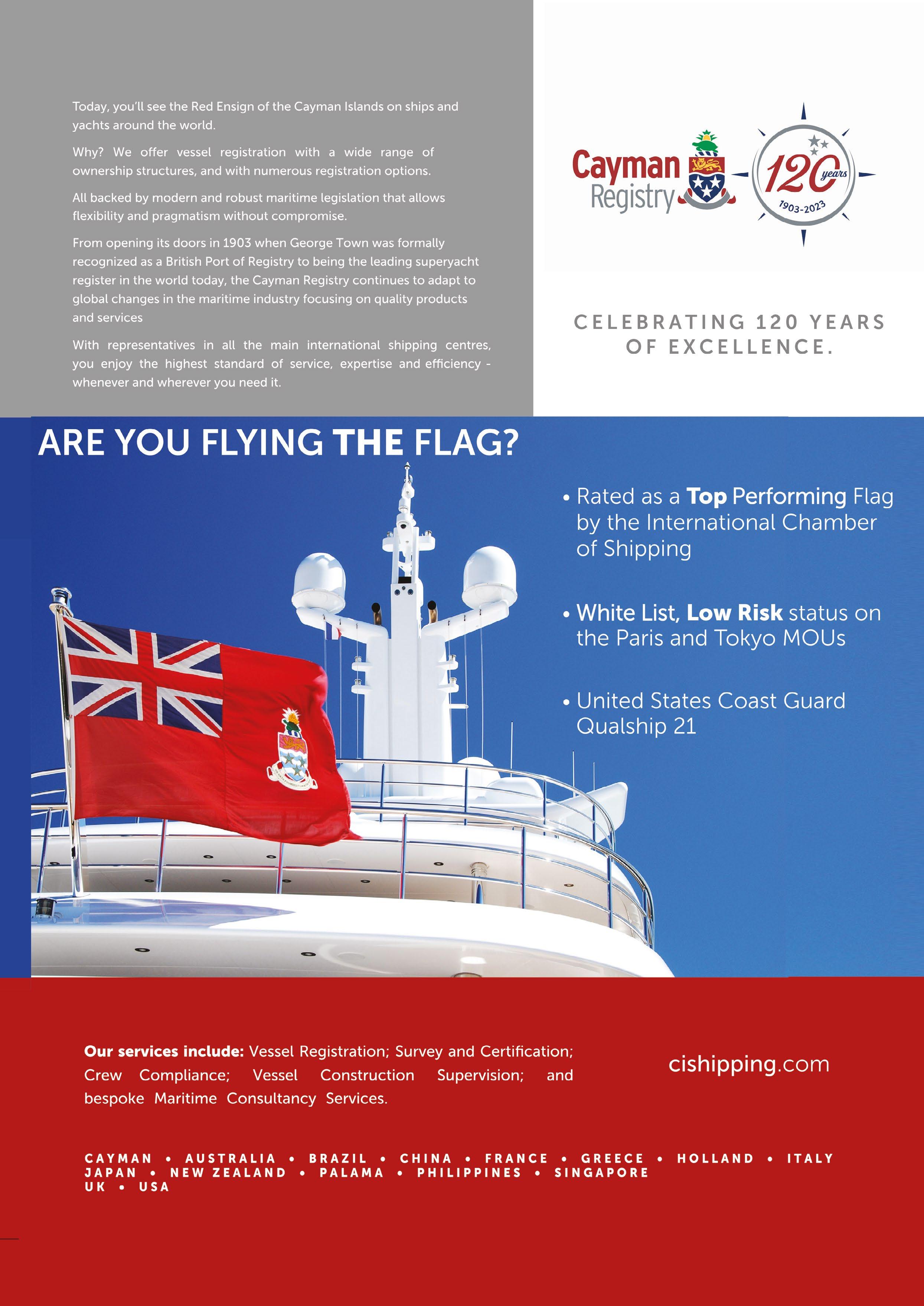
Ship Registries 52 Ship Management International Issue 101 January/February 2023
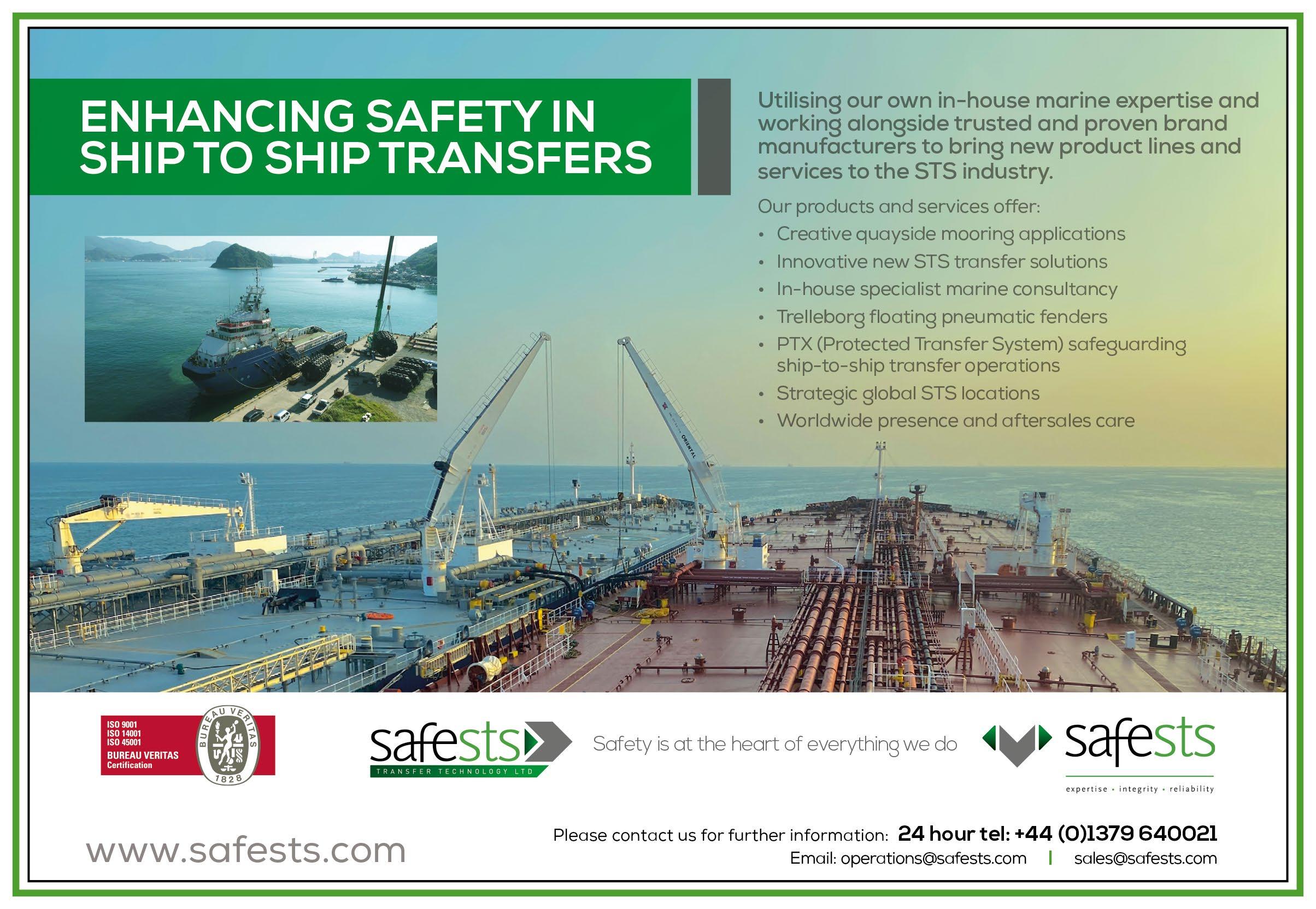
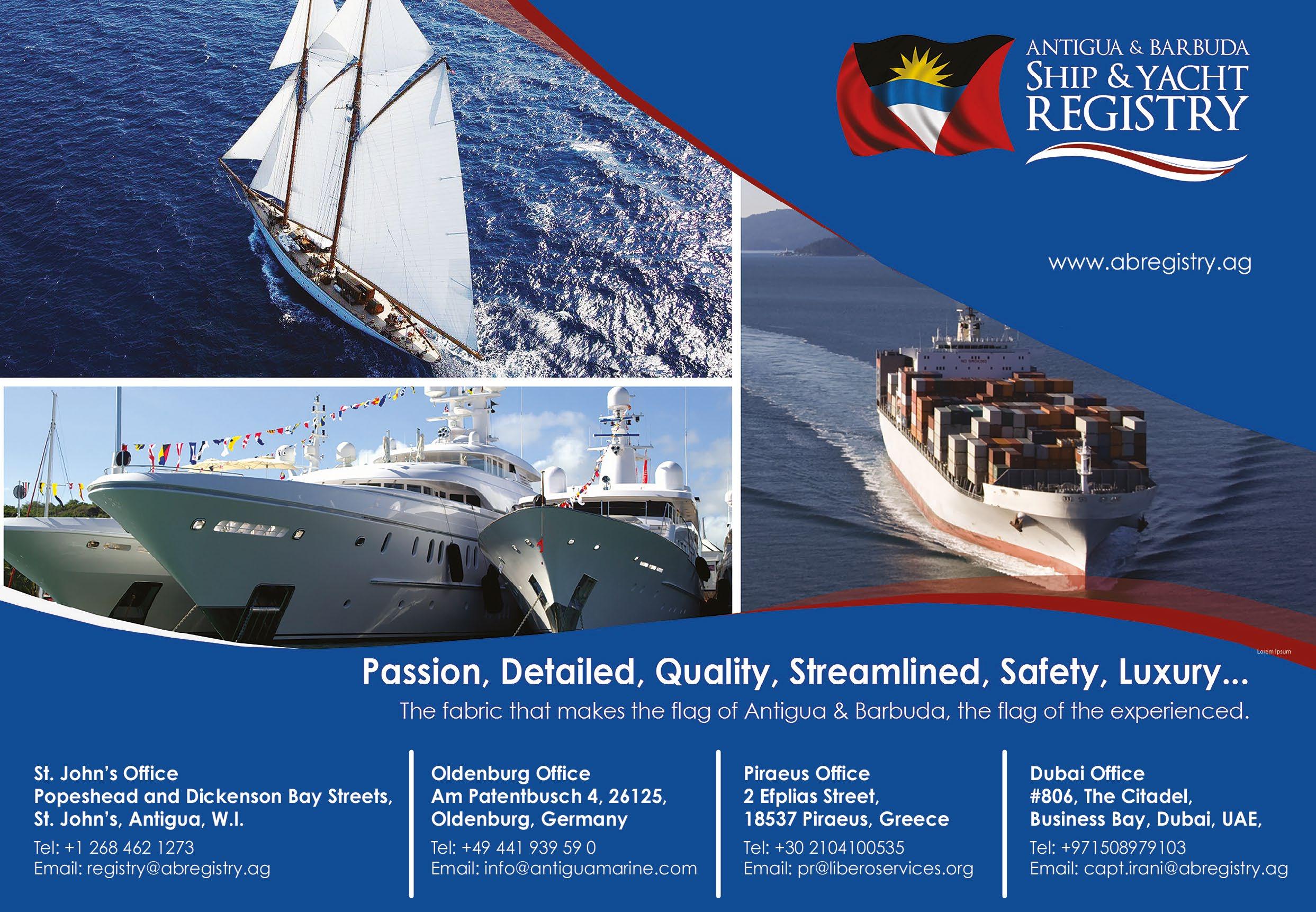
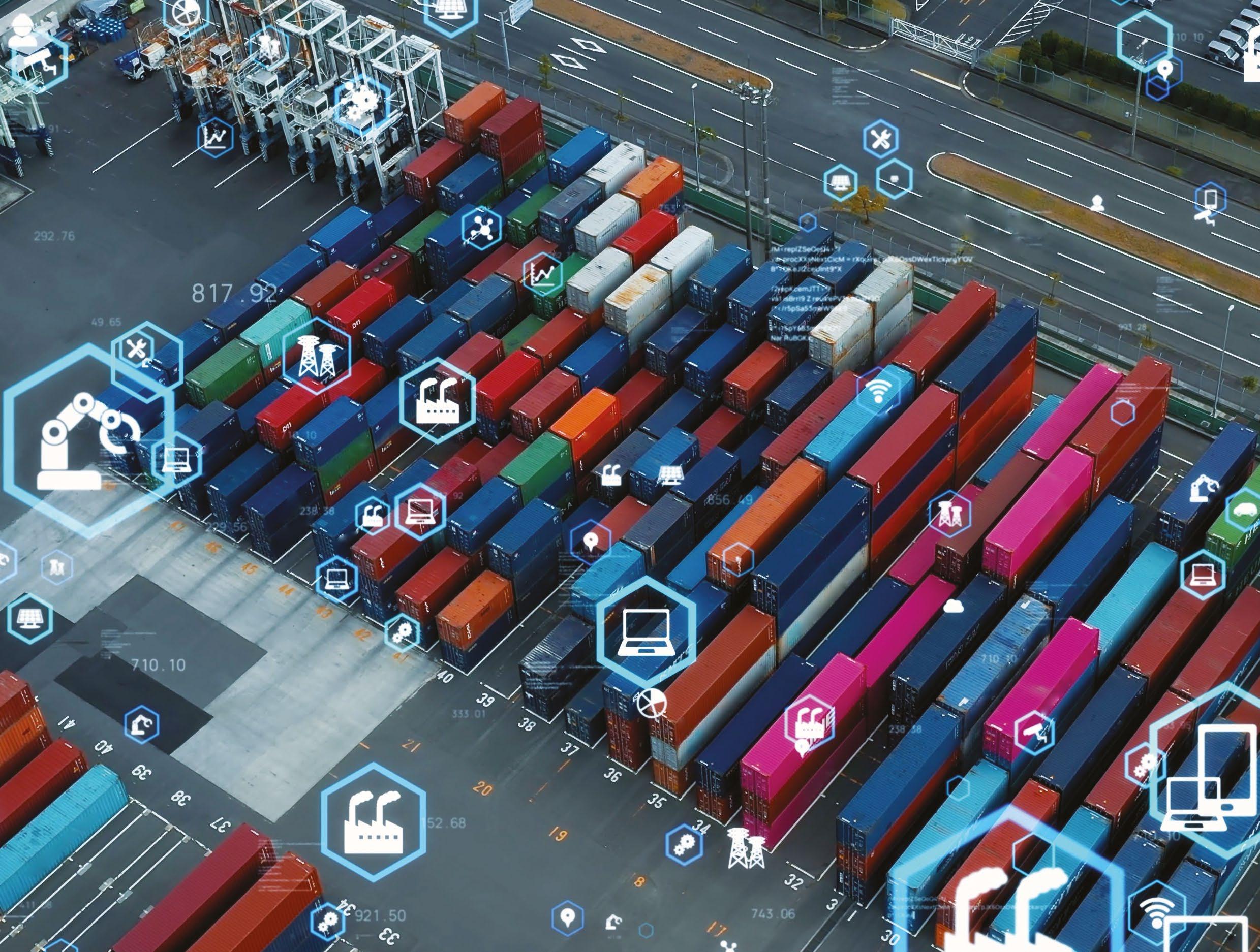
The latest in our series of industry debates, SMI teamed up with UAB-Online to debate the issue of
‘Ports need to Digitise if they are to cut costs and cut emissions’
The webinar, which was held in front of a live audience, discussed the extent to which ports and terminals should be embracing digitalisation and innovation as they look to cut costs and play their part in reducing vessel-borne emissions. What commitments need to be made; what are the game changers, and what can the industry do to ensure it is well positioned to grow profitably and sustainably?
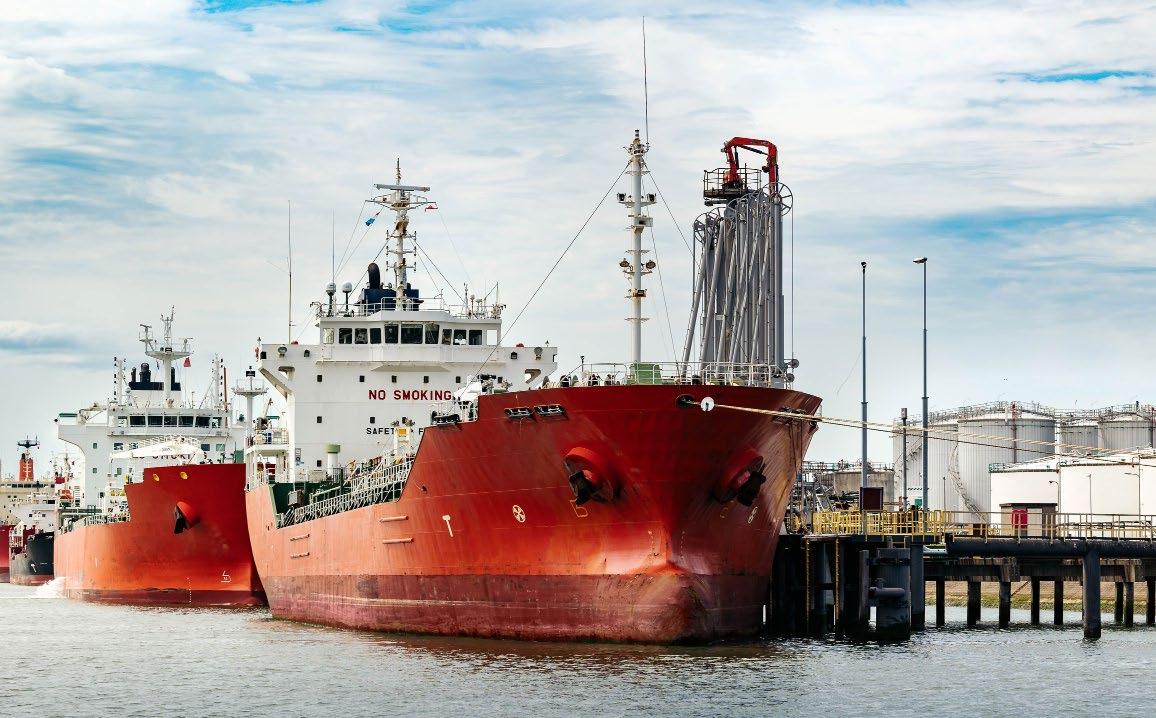
Moderated by Sean Moloney, CEO of Elaborate Communications, the panellists included: Hans Bobeldijk, CEO, UAB-Online; Ton Mol, Barge Advisor, OCIMF; Stephanie Trabia, CCO, VAKT; Pascal Ollivier, Chair of IAPH Data Collaboration Committee; Vincent de Gast, Director, Systems Navigator and Michael Bergmann, Business Development at Marine Fields.
Sean Moloney
Just to introduce myself, my name is Sean Moloney, I’m CEO of Elaborate Communications and publisher of Ship Management International. Today’s webinar, entitled Ports need to Digitise if they are to cut costs and cut emissions, is tackling an emotive subject. We have assembled a stellar group of panellists today to give their views. I have asked them to give a two-tothree-minute snapshot of their views on today’s subject matter. So, without any further ado, Stephanie, may I start with you if possible.
Stephanie Trabia
I’m Stephanie Trabia, CCO at VAKT, a communication platform allowing market participants to digitally exchange data. We cover data that market participants exchange from the trade confirmation to the physical delivery. We’ve been live for the last three to four years in the physical oil market in Northwest Europe and we’re going to expand our market coverage to the Middle East, Africa and Asia Pacific next year (2023) and potentially to the Americas as well. Our customers are mainly traders, trading companies, oil majors, terminals and surveyors, so all the ecosystem participants involved in the physical delivery.
55 Issue 101 January/February 2023 Ship Management International
So, if we go back to the subject of digitalisation, the goal is really to allow the companies to boost their efficiency and reduce their errors. It’s all well and good but we can say that it’s quite challenging still especially in the physical commodity market where you don’t have any standardisation, and where all the market participants have different internal processes and use different systems. So, it’s not impossible, we’ve done it at VAKT but it takes a lot of time and a lot of effort.
Sean Moloney
Stephanie, thank you very much. Hans, over to you and thank you for getting involved today as well, Hans, but can you introduce yourself to the audience and also to the panellists and talk a little bit about your perspective?
Hans Bobeldijk

Hans Bobeldijk
Yes, of course thank you very much. My name is Hans Bobeldijk, I’m one of the owners of UAB-Online, an online platform that optimises the pre-arrival until departure process for vessels at terminals by standardising the different administrative processes. Stakeholders like vessels, surveyors, Masters, agents and terminals, etc. collaborate on our platform. The point I want to make today is that there are a lot of long-term initiatives and visions, but the question is where to start? It’s important to change the world and, starting with yourself, there’s a lot of low-hanging fruit so the message is start optimising, become more sustainable and don’t wait for all the initiatives that put the responsibility elsewhere, but take your share of the responsibility and start.
Sean Moloney
So just touching on that point, what are the blockages in getting people to start? Is it more a question of I’m used to what I’m doing, and the processes I’ve worked before?
Hans Bobeldijk
I think it’s in the minds of those involved because the challenge can seem too large; a challenge that can make it difficult to take smaller steps to start the journey. Also, if you have a longterm vision, it’s difficult to get approval from your organisation because you don’t know for sure if it works.
Sean Moloney
Hans, thank you very much indeed. Going left to right on my screen, Vincent, do you want to take the floor and just three minutes or so, two or three minutes, introduce yourself and give us your perspective.
Vincent de Gast
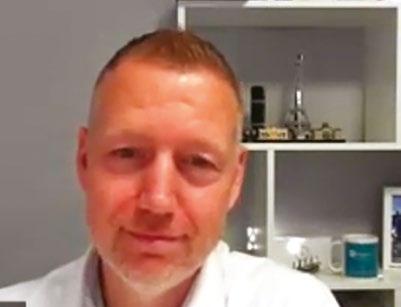
Alright, thank you very much Sean for also inviting me. My name is Vincent de Gast, I’m one of the owners of Systems Navigator and for the people that do not know Systems Navigator, we are a company that specialises in simulation and digital twins and scheduling solutions in different industries. I have 20 years’ experience implementing simulation and scheduling solutions in different industries such as ports, energy logistics, maritime and manufacturing. You do see standardisation in other markets, and that typically takes a long time, but we also think it’s necessary. We have a tool called Dropboard which is a scheduling solution for ports and terminals. It gives information on the locations of vessels, the expected arrival times and weather conditions; the infrastructure status all comes together with the planner to make better and more efficient decisions. Similar to what Hans and Stephanie have already said, it is challenging to integrate every time, with different systems in different parts of the world.
Sean Moloney
Thank you, Vincent. Again, you’ve touched on something very important there with regards to the twinning element as well and I think that’s something that you’re starting to see pop up across a number of different areas, whether it’s class, whether it’s ship owning or ship management and very much an aspect of the way the industry should be looking. Ton Mol, let me bring you in now Sir, if I can, yes, floor is yours for a couple of minutes.
Ton Mol
Good morning, good afternoon everybody and thanks for inviting me here today. My name is Ton Mol, I’m the Barge Advisor at the Oil Companies International Marine Forum (OCIMF). We don’t sell or promote any systems but we are a members’ Association, there to promote the safest way of transporting their goods from A to B, and when we go from A to B, of course we have contact with terminals. Before I
came to OCIMF, I worked for 20 to 25 years as a barge operator, where we were users of these programmes. My barges visited terminals at least three times a week, and I was one of the first to work on a digital way of exchanging information with the terminals. We started with two connected terminals in 2008 and now we are at over 50-55. This created something of a standard in the barging world, which is still embraced today by the crew members. When you look at my background you see the wheelhouse of a typical European barge and in the middle you see the guy in his chair navigating and manoeuvring, but you also see on his left side, a computer for his administration. In the old days, there was only the agenda that he saw but nowadays he sometimes has to get out of the chair while sailing to do some administration, for example, give notice of readiness. You can imagine that that presents some challenges but, like Hans has already said, you have to take small steps and as long as you make those small steps, then we will certainly make good progress.
Sean Moloney
It’s interesting to know what the demands of the oil majors are when it comes to safety but certainly as far as deep sea shipping is concerned, what are the views of the oil majors as far as digitising the port and the terminal operations of the deep sea side because they’ve got to be driving in efficiency, they’ve got to be ensuring safety and they’ve got to be adhering to environmental issues as well. Very, very quickly, 30 seconds, what’s your views on that?
Ton Mol
Well, they really want to optimise the protocols of the seagoing vessels and they do that with various tools they have at their disposal because the information can change before the vessel is at the berth, but that can be remedied in a digital way. It can shorten the time before loading because the traditional checklist can take an hour when the vessel is berthed. This can be done now in advance, perhaps two or three days in advance so the terminals can plan better.

Sean Moloney
Brilliant, alright okay, thank you very much indeed Ton and we’ll touch on, and develop, some of the points you’ve made. Michael, let me bring you in.
Michael Bergmann
Yes, thank you very much. My name is Michael Bergmann, I originated from the aviation side so it was very interesting when I started in marine in 2004 to see that there are lot of areas in respect of digitalisation that are far more advanced than what I could see when I started in the maritime world. I’m a software engineer and consultant with my own company BM BergmannMarine and working for one of my clients, which is MarineFields, for business development which is why I’m here. Besides that, I’m working with the regulators and the standardisation bodies. I was also President of CIRM, which is the Comite International Radio Maritime, the international organisation of ship electronics and I am the Secretary of the International Port Collaborative Decision Making Council, which I founded during an EU project to help standardise the exchange between ships and ports and between ports and ports, things we’ve already talked about.
We developed the S-211 Standard Port Call Message format where we pull in data from the Associated Data Exchange between ships and the port and between ports. That requires digitisation and when we go to deep sea shipping and international shipping we have to rely on international standards. The problem international shipping is facing is that when they are sailing from the Far East to Europe, for example, you cannot have different systems for different ports so we have to have standardised digitalisation.

So, from that point of view, the work we are doing in the expert group of data harmonisation at the International Maritime Organization (IMO), and the work we do in ISO to develop operational data exchange standards for the port calls is immensely important. What I have seen is that we have individual implementations. Each port has some kind of digitalisation, but not necessarily the same. The different ports are often not connected well because they have different systems. The problem is how to exchange this information digitally so the ports of Rotterdam or Antwerp or Hamburg can communicate with Singapore, for example. The other difficulty to overcome is the hesitancy to share information, which is in a lot of cases being seen as the property of the business. Some companies do not want to share their data because it may give their competitors an advantage.
57 Issue 101 January/February 2023 Ship Management International 56 Ship Management International Issue 101 January/February 2023 SMI Industry Webinar SMI Industry Webinar
Vincent de Gast
Ton Mol
Michael Bergmann
Sean Moloney
Brilliant Michael, thank you. Stephanie, you’ve got your hand up?
Stephanie Trabia
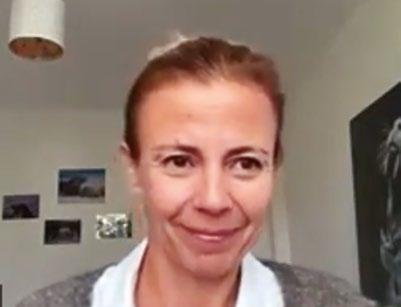
Yes, I have a quick question for you, Michael, because you were saying that you’re working on standardising the format or the structure of the data you’re exchanging, but ports have different systems, so even if you have standardised the data and the structure, you will find it difficult for people to apply this standardisation. Is there any way you can enforce or impose this standardisation on the different systems used by the different ports?
Michael Bergmann
We are working on that with the IMO where we may see some kind of standardisation and also with the National Maritime Single Window reporting within Europe. We could use the European Maritime National Single Window Environment where you have standardisation of the port calls and the development of ISO for operational data as a basis.
Sean Moloney
Pascal, last, but not least definitely in the introductions here, you’ve had the benefit of listening to everybody now so do you want to introduce yourself, give your perspective and then maybe your broader thoughts that we can then develop and then take forward.
Pascal Olivier
Thank you, Sean. Just to introduce myself, I am running a marine company named Maritime Street which works primarily with international financing institutions like the World Bank, the InterAmerican Development Bank and others when it come to the maritime and port digital transformation and emerging countries and developing countries where the digital divide is just huge when it comes to vessel size. But today I’m going to be speaking more in my capacity as being from the International Association of Ports and Harbours, an association based in Japan, in Tokyo and I am the Chair of the Data Collaboration Committee.
The issue that we have on data collaboration and I think all of us in the industry have been talking about data exchange since the EDI world, you know, like decades ago. We have been talking a lot the last two years about data sharing.
At IAPH, we launched a concept primarily from some of

the work that the World Economic Forum developed in 2019, it’s about data collaboration and what do we mean by data collaboration in our world? It’s about engaging stakeholders not only at the process level but at the executive level. Second is to engage data governance, establish data governance, privacy, cyber security. Three, it’s about orchestrating data, for port calls, it’s about stakeholders that we have to orchestrate the data to trigger events and start processes between ourselves and finally, it’s about also change management; change management from a business process for engineering, change management from a legal framework perspective, I will come to that point in a minute and finally, everything we do in data collaboration is related to long-term sustainability. So you need to implement platforms that are going to be there in five years down the road, 10 years down the road and that can evolve every year, so it’s about data collaboration.
What I see, Sean, going on in and everything we said, is in the middle of a very historical moment for the industry that has been driven over the last few years by the IMO. The IMO at the FAL 46 Committee in May of 2022 has decided to enforce the mandatory requirement as of 1 January ‘24 for what we are calling the Maritime Single Window. The Maritime Single Window is a data collaboration platform when it come to the
arrival stage and departure of ships, but it relies on different standards initially. The first one is the IMO amendment to the FAL Convention. So we have about 13 declarations from different Border Agencies that will need to be electronically shared between the barriers for a single submission of data.
Second, we have everything which is related to the vessel clearance by itself which is encompassing many Border Agencies inspection services and beyond, and finally, your connection to the Maritime Single Window is to implement what goes on, so validated at the IMO FAL 46 this year is the integration of the full port call process when it comes to nautical data, operational data and receiving regulatory data. It has been lots of work from different committees; indeed, the expert group on data harmonisation at the IMO, the International Taskforce on port call optimisation was defined as standard, now going through ISO on some models and so it’s really quite a revolution as we speak.
In maritime trade we used to talk about cargo a lot, now the time has come to talk about vessels and it’s really a revelation that we are having now. January 2024 is near so
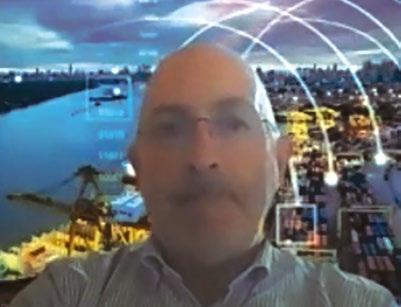
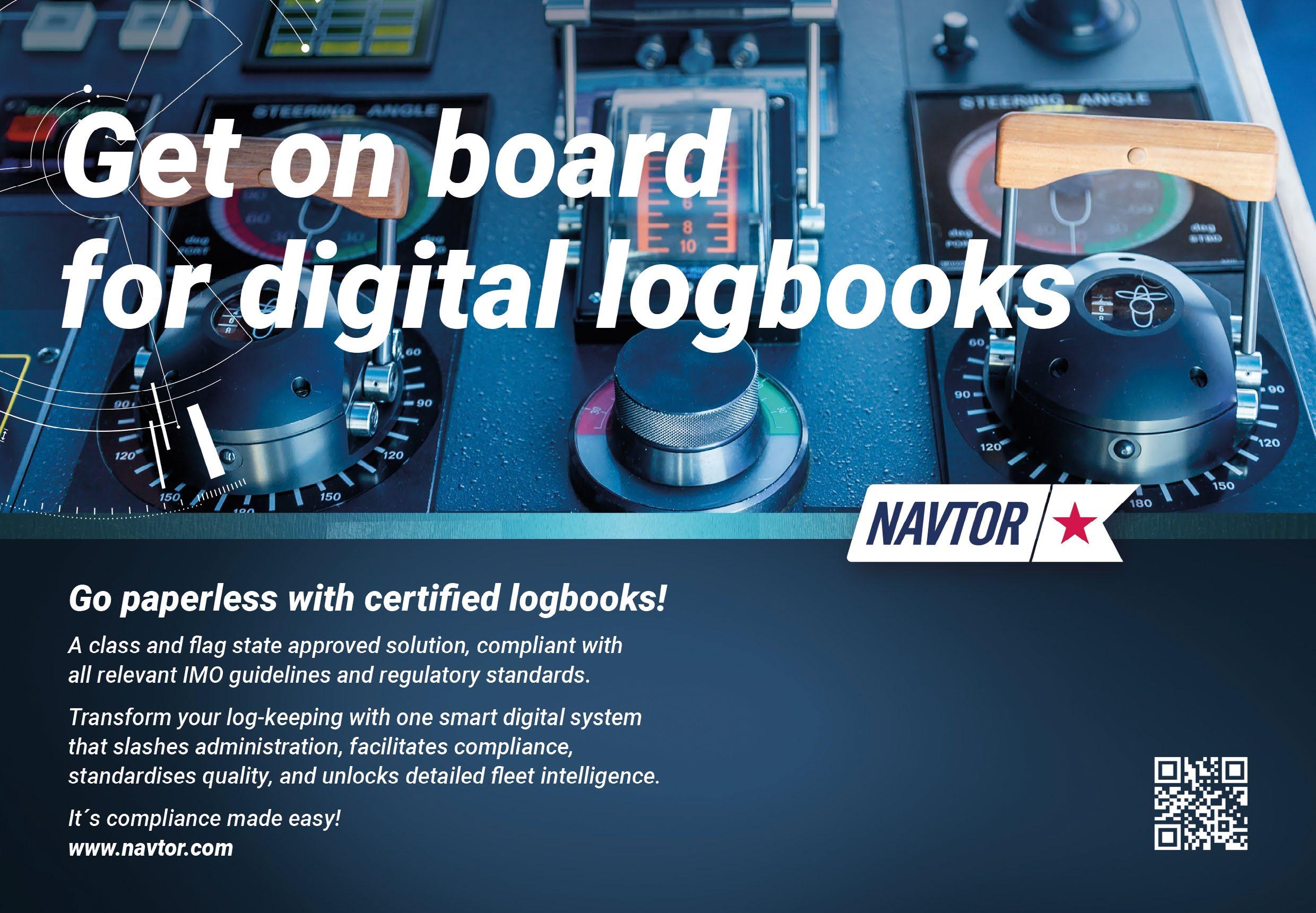
SMI Industry Webinar SMI Industry Webinar
Stephanie Trabia
Pascal Oliver

we have to engage all parties, all stakeholders when it comes to port call.
Sean Moloney
Pascal, thank you very much indeed. Let me bring in Stephanie then bring in Hans. How easy is it going to be as far as this collaboration is concerned and it then brings in that element of standardisation; how can we start to get that ball rolling as far as getting all elements talking to themselves? So Stephanie, your thoughts on it and then I’m going to bring Hans in.
Stephanie Trabia
Thank you, Sean. So, when that got created, it was by a consortium of major trading companies and banks and so I think that it helped for us to have the support from market participants willing to go to digitalisation and also helping us in finding the right data they may want to exchange, in which format, at what time, etc. So we basically built a platform with the help of these market participants and we use the blockchain technology and it was very important because the amount of shareholders we have, who are competitors with each other, they were willing to exchange data but they wanted to keep their data private and that’s why we use the blockchain technology. Everybody can exchange data but they remain very private so they have their own space on the blockchain where they have their own data and when they exchange data, they use a secure encrypted messages so it’s only the two parties that are exchanging the information who can see this data. So I think privacy was definitely a must and that’s why we used the blockchain technology. Security was definitely a must, again, that’s why we use the blockchain technology; another thing which was very important was the immutability of the data so i.e. you can’t deny or you can’t change the data you have been exchanging with a counterparty or with another participant and again, blockchain technology allowed us to do that, to provide that to the customers. So, I think that in our case, the technology helped us in answering our customer’s requirements and I think it brought them some comfort in terms of their fear in terms of exchanging the data knowing that they are competitors. The other thing, we don’t get access to their data, we can’t do anything with their data so again, they have the security that this data is never going to be used for any other matters or be sold or be analysed by third parties. So, these rules allowed us to basically get all these people together and being very willing to go to digitalisation for their processes.
Sean Moloney
Thank you very much, Stephanie and I’m going to bring Hans in, and I notice that Michael’s got his hand up, so I’ll come
onto Michael in a second. Hans, just on that whole issue of data collaboration and really, I suppose bringing in that sort of importance within the port sector of digitalisation and the need for security privacy but also the need for stakeholders to understand that they do need to digitise.
Hans Bobeldijk
Yes, I definitely agree with Stephanie, I think it’s all about trust when it comes to what you are doing with the data and with whom you are sharing it with; are you in charge or are you not in charge? But I think it’s also quite difficult because if I look to my customers, most them are terminals in and if you see the level of digitisation and the level of data that is available, some are far advanced while others are at the beginning of the journey. For some terminals there isn’t data because the jetty planning is done on a white board so we can’t make connections between the white board and the data platform and it’s good for us that we have a standalone platform which can serve those terminals at the beginning of the process, to start to digitise their processes but also to serve the more digitised terminals to accelerate their digitisation. The problem with standardisation is that it takes a lot of time before you can start and I think the benefit for us here at UAB, is that we start with making the processes uniform and if we need to change some time stamps or keys for example, then it is easy to do so.
Sean Moloney
But also, I think within that whole chain, there are a number of stakeholders aren’t there, Hans, whether it’s the surveyors, the owners, the master, whatever, they all have a role to play and they need to be going down that route?
Hans Bobeldijk
Yes, and that makes it also difficult because for many stakeholders, it’s more of a top-down strategy. You need to have all parties involved before you receive all the data. It’s necessary to do it and keep going because we need to do it to make further progression in the future but if you need to wait for these initiatives, then we are too late and wont grab the low hanging fruit that we can take now. A good example is our platform with UAB, with more than 60 terminals involved and also all surveyors involved. They accept the platform and are sharing data.
Sean Moloney
Absolutely. Michael, let me bring you in on this, you’ve been very patient having your hand up and also Vincent, Ton and Pascal, I’ll be jumping on you in a second as well for your views and your comments but Michael, over to you.
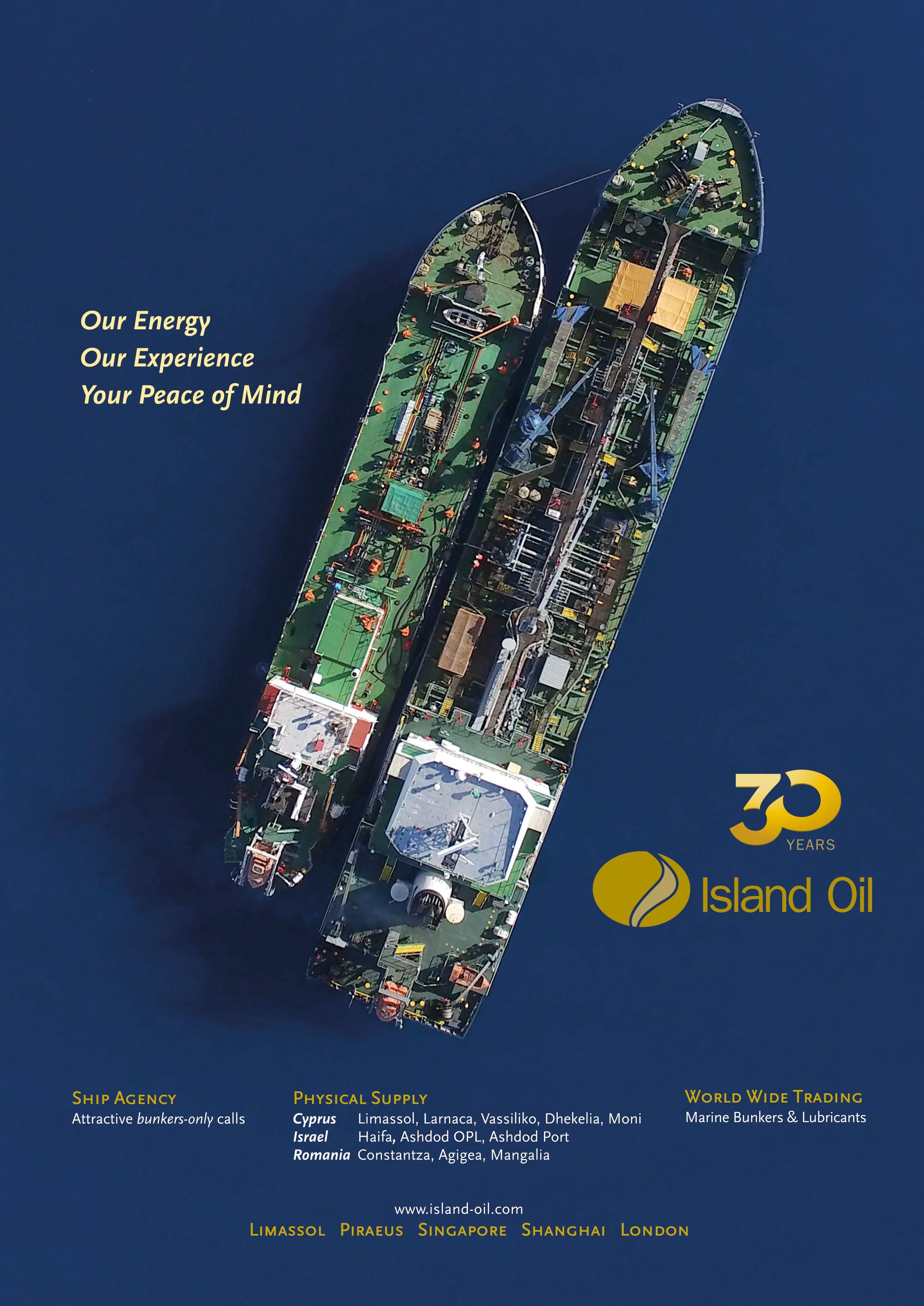
60 Ship Management International Issue 101 January/February 2023
SMI Industry Webinar
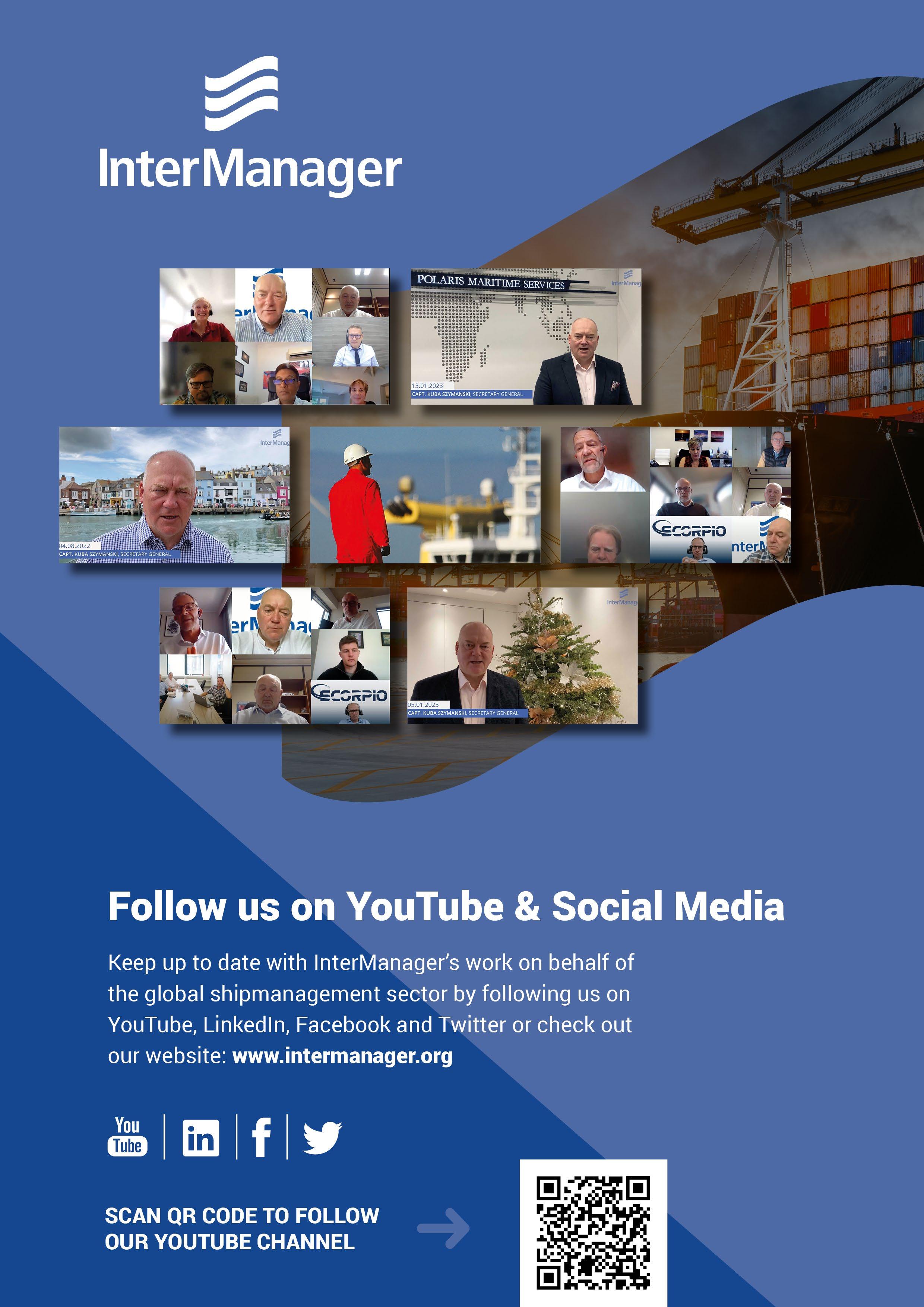

Michael Bergmann
Yes, thank you very much. I think it’s a very interesting discussion. Touching on what Stephanie and Hans were saying, the data security aspect is one aspect of security which we have on the different systems, right, the blockchain which Stephanie was very nicely describing or the situation Hans was describing his system but it’s also important that you have the right endpoint, so you are sending your data to the intended person and nobody can interject in-between. So that is what, for example, Perseus and the Maritime Connectivity Platform is actually all about saying, we have an identity register and we ensure that what you intend to send is what you will actually send to the right person and we have a service registry when you do not have the endpoint, you can find the endpoint that you actually go to the National Single Window and send it and in fact, you send it to the National Single Window and not somebody else. The other aspect which I think is also of interest is we need to start and we need to move forward. That is why the International Port CDM Council has created the Maturity model. Not everybody needs to be at the highest end of digitalisation. A small port may only need a couple of aspects to be digitised. One other aspect which I also want to bring forward when we talk about collaboration and collaborative data sharing, is that you are sharing information and everybody has the same or a similar situation awareness, which is great and it’s important aspect. The other aspect is collaborative decision-making so you need to decide what is the best for your infrastructure. So when you have a ship maybe the pilot needs to wait a bit and say okay, I will come a little bit later because if I come earlier, the ship will then wait in the port to get the berth place maybe or the tugboat operators need to come earlier to pick up the ship. So that collaboration what we do is data sharing getting situation awareness through digital data sharing and then we are deciding together to say what is the best for the overall throughput in the port and for transportation, including hinterland connectivity.
Sean Moloney
Stephanie, you’ve got your hand up, do you want to make a point?
Stephanie Trabia
I fully agree with Michael, the point of making sure that the data being exchanged is coming from the source of the data and going to the right person, and I think it’s very important and it also brings the point about fraudulent action. So again, it’s also to ensure that the documents you’re exchanging, are real
documents, not copied or fraudulent documents. So I think that these points are very important, it’s not only about privacy, it’s not only about security, it’s also about making sure that the documents or the data being exchanged between the right parties are the real data
Vincent de Gast
Yes, I think, well, I heard some interesting things also mentioned by Michael on collaborative decision-making and when do you decide which vessel goes first or when you take a delay, who gets to decide that?
I think what we see, if you look at the different types of ports and different players within the ports, we make scheduling solutions for a single terminal but also for a whole port and there’s such a big difference because if you look at the port as a whole, there are players involved, like Hans mentioned, that are very digitised and they have all the information there and they can provide you with information, so you can make really good decisions and there are also players that send in their forecasted vessel arrivals by email and then somebody needs to type it in an Excel sheet, send it over and that makes collaborative decision-making so much harder because you’re not looking at the same actuality of data.
The other point that we see in our business is typically that we make simulation models of ports to do all kinds of future scenario analysis. So, what happens if through climate change the water levels rise or what happens if this port gets new terminals and new cables, how would the system perform in that sense? Now, the vision generated by these models are typically made and then never used again but what if you can connect them to this real time data? So, what if we have information on maybe even barge level, you know, like which barge is being used at this time. So then you have a very actual picture of your ports and you can make predictions on the short term future on how it’s going to play out in the port and in the operations.
Sean Moloney
Okay, thank you everyone for your time today. l
63 Issue 101 January/February 2023 Ship Management International SMI Industry Webinar
To see and hear the debate in full please scan QR code above or visit: https://shipmanagementinternational.com/webinar_video/ports-needto-digitise-if-they-are-to-cut-costs-and-cut-emissions/
Singapore: Preparing for a next-gen future
Singapore continues to top various rankings of global maritime hubs, with shipping accounting for as many as 160,000 jobs out of the country’s total population of less than 5.5 million, according to Singapore Maritime Foundation (SMF) figures. And unlike many other hubs, its expertise spans the entire maritime spectrum and is heavily focused on areas of innovation.
“As an International Maritime Centre, Maritime Singapore is home to a diverse range of maritime businesses,” Mr Chee Hong Tat, Senior Minister of State for Finance and Transport, told an audience at the SMF’s New Year Conversations event, “with more than 170 international shipping groups as well as other maritime players in the areas of finance, insurance, cybersecurity, shipbroking, law and arbitration’ - not to mention its world-class port and shipyards.
The cluster possesses good momentum for future growth, he continued, having expanded steadily as an International

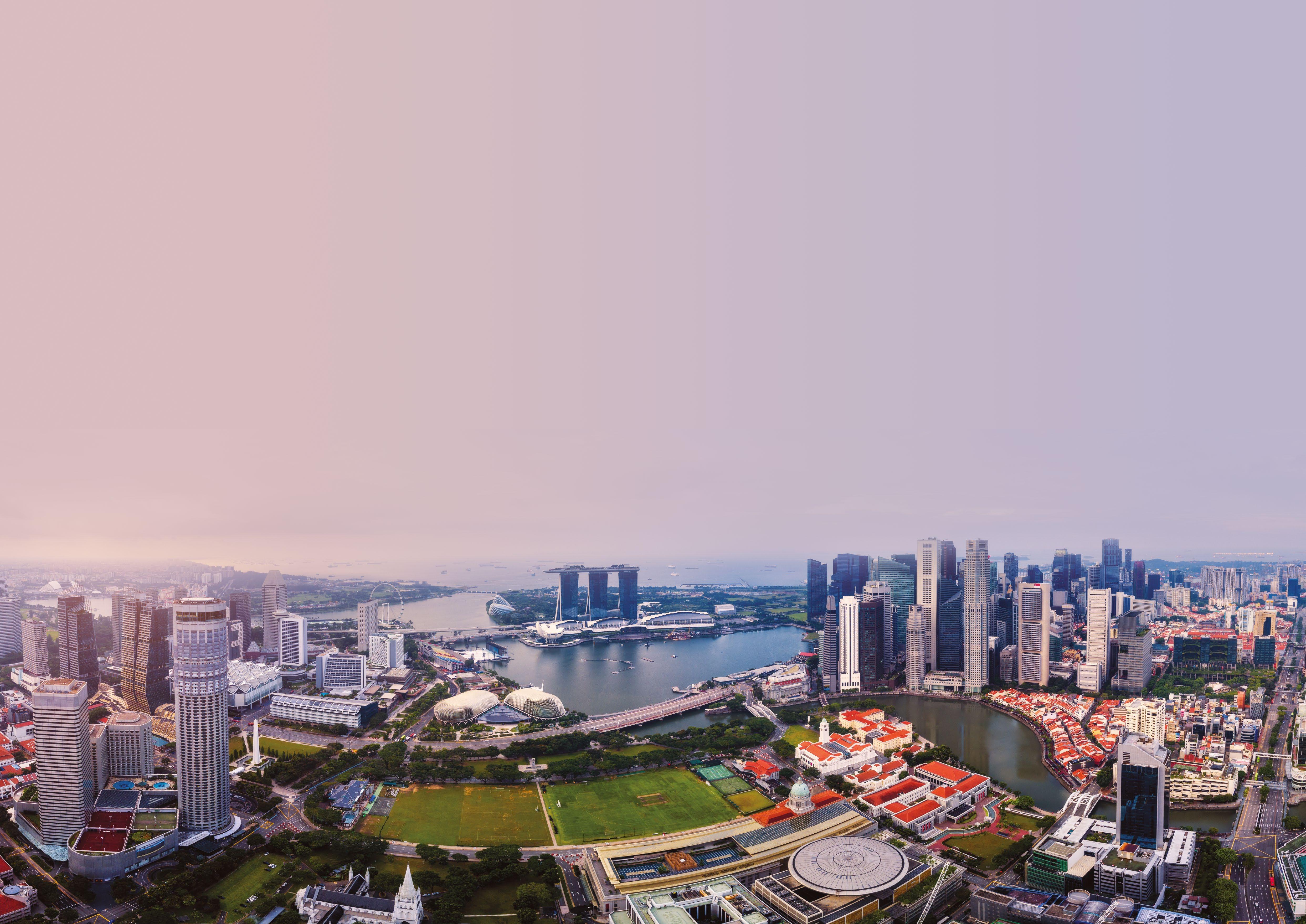
Maritime Centre in 2022. Last year, total business spending by shipping companies in Singapore exceeded S$4.3 billion, he said, with 30 companies establishing or expanding their operations in the city-state under programmes supported by the MPA (Maritime and Port Authority) of Singapore, a 30% increase over 2021.
And on the innovation front, close to 100 MarineTech startup companies have now been established in Singapore under the PIER 71 (Port Innovation Ecosystem Reimagines @BLOCK71) programme set up in 2018, he reported, with these start-ups having raised over S$50 million in investment in the past four years.
SSA President Caroline Yang embellished further on some of the country’s ongoing maritime strengths in her address to the SSA Lunar Cocktail meet.
“Relative to the decline in global container trade of some 3 to 4% last year, the Port of Singapore has remained

competitive,” she said. “For instance, our container throughput in 2022 reached 37.3 million twenty-foot TEUs – which is the second-highest throughput on record.
“Clearly, Singapore remains a favoured location for bunkers and has made progress in supplying alternative fuels to support maritime decarbonisation,” continued Ms Yang, also Chief Executive Hong Lam Marine. “A total of 47.9 million tonnes of bunker sales was registered in 2022, which included about 140,000 tonnes of biofuel blends over more than 90 biofuel bunkering operations.
“Additionally, the Singapore Registry of Ships continues to rank as one of the top five largest ship registries globally. The total tonnage of ships under the Singapore flag in 2022 was close to 96 million GT, which is about a 4% increase from 2021.”
Ms. Yang also noted that 25 Singapore-flagged ships were last year added to the country’s Green Ship Programme - one of four Maritime Singapore Green Initiative programmes of the MPA that rewards ship owners who voluntarily adopt solutions that enable ships to exceed environmental regulatory standards set by the IMO - taking the total number of recognised ships to 650 since the programme’s inception in 2011.
“This is a testament to our joint efforts in supporting the decarbonisation of the maritime sector,” she said, foreshadowing “a continued rise in [Singapore’s] green fleet in the coming years.”
Looking ahead, the SSA President identified a number of major challenges that face the association’s members, however. These included preparation for the safe and cost-effective use
of the alternative fuels required by decarbonisation; harnessing the full benefits of digital efficiency; and addressing growing cybersecurity risks – all problems facing the global shipping industry as a whole.
But Ms. Yang also highlighted, two specific Singaporean concerns, namely the rising costs of doing business in the city, and the related struggle of attracting the right talent to work in Singapore.
“What concerns SSA is the increasing cost of doing business particularly in Singapore compared to other cities,” the association’s President said, “as Maritime Singapore is by its very definition, international in nature, and therefore our maritime companies feel it the most. For example, the rentals of homes for our international talent, have increased fast in a short time.”
Then there is the “shortage and global tussle for talent,” she continued, “especially for Singapore, where human talent is our only resource. We have to build a pipeline of talent not only to deal with shipping’s readiness for decarbonisation, digitalisation and cybersecurity, we also have to make a concerted effort to build a pipeline of technical and marine specialists, that is the seafarers.”
To this end MPA, SSA, Singapore Maritime Officers’ Union (SMOU) and Singapore Organisation of Seamen (SOS) have jointly set up a SailMAP (Sail Milestone Achievement Programme), she reminded, “where we are targeting to train 50 new seafarers every year with a 10-year programme. If the seafarer completes certain milestones, he or she will receive S$50,000 over those 10 years.”
64 Ship Management International Issue 101 January/February 2023 Singapore
Minister Chee Hong Tat
Caroline Yang
65 Issue 101 January/February 2023 Ship Management International

Tuas Port
The Port of Singapore remains essential to Singapore’s connectivity and trade with the rest of the world, and last year handled a total of 577.7 million tonnes of cargo, as well as strengthening its position as a world-leading transhipment hub for containers.
Port operator PSA Singapore is mindful of the need to cater for future growth and last September opened the first three berths of the city’s new Tuas Port under Phase One of its development. To be the nucleus of Singapore’s maritime and logistics ecosystem, Tuas is intended to mark a major step forward in the port’s harnessing of data analytics and digitalisation to continue managing cargo flow efficiently well into the future.
Mr Tan Chong Meng, Group CEO of PSA International, commented at the inauguration: “As an enabler of global trade, PSA has contributed to Singapore’s success as an open and connected trading economy. Tuas Port provides us with an opportunity to reinvigorate this mission for the digital age and I believe it will further boost trade growth flowing through Singapore.
“By dovetailing our port operations with the greater ecosystem in Tuas and through collaborating with likeminded partners for integrated intermodal solutions, we can better navigate the growing complexities of global supply chains. We look forward to embarking on this exciting journey alongside our stakeholders to orchestrate trade growth and drive efficient, resilient and sustainable supply chain solutions for our customers.”
Indeed, PSA is taking part in several international coalitions to advance decarbonisation, including the Lloyd’s Registerled Silk Alliance, a cross supply-chain maritime partnership to develop a network of intra-Asian ‘green corridors’ for container traffic based out of Singapore. It is also a signatory to the Call to Action for Shipping Decarbonisation by the Global Maritime Forum’s Getting to Zero Coalition.

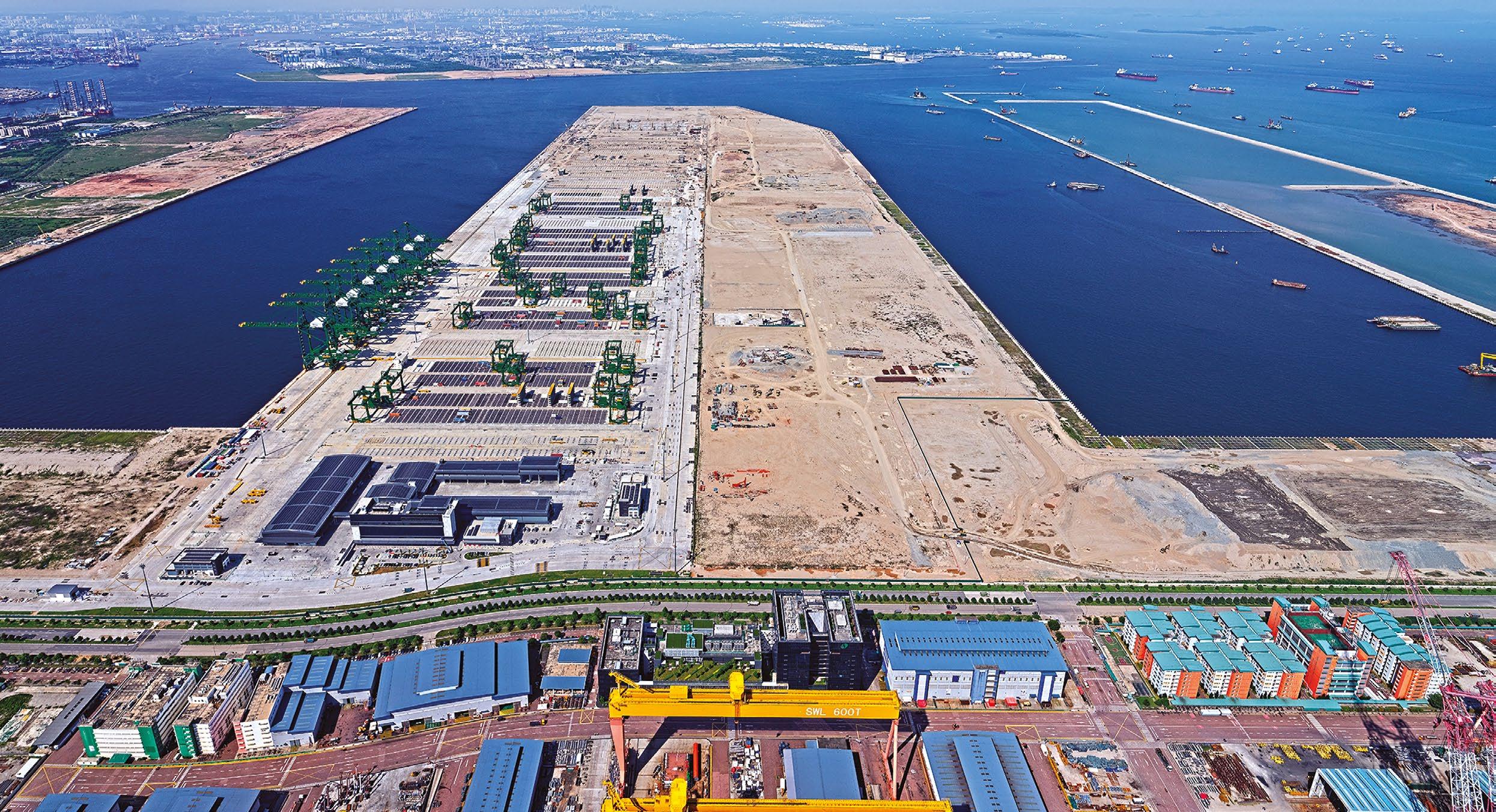
Separately, the MPA signed an MoU with Port of Rotterdam last year to establish what is described as ‘the world’s longest Green and Digital Corridor’ between the two ports to facilitate low and zero carbon shipping.
MPA and Jurong Port have also signed up to The CASTOR Initiative to build the world’s first ammonia-fuelled tanker, operating out of Singapore, by 2025.
Jurong Port’s CEO, Mr Ooi Boon Hoe, commented: “Being the operator of the busiest bunkering terminal in the world’s largest bunkering port today, Jurong Port is keen to facilitate the adoption of such future marine fuels, including ammonia, by providing suitable supporting bunkering infrastructure. We look forward to contributing to the success of The Castor Initiative and reinforcing Singapore as the world’s leading bunkering hub.”
Meanwhile, the MPA and DNV have agreed to continue their collaboration on decarbonisation and digital innovation, having signed a Memorandum of Understanding (MOU) to renew their partnership at the Singapore Norway Innovation Conference last November. The three-year MOU will herald a new term of cooperation between the two, which began in in 2014 to cover emerging maritime trends such as autonomous shipping, low and zero-carbon fuels and 3D manufacturing for ship spares.
Kenneth Lim, Assistant Chief Executive (Industry and Transformation), MPA, said, “The renewal of the MOU between MPA and DNV underscores the commitment to our decarbonisation and digitalisation aspirations, including talent development and R&D to chart the pathways to net zero for international shipping while complementing IMO’s GHG strategy.”
Singapore has also teamed with the IMO to launch NextGEN Connect, a programme under which diverse maritime stakeholders are invited to suggest ways to develop pilot schemes to reduce GHG emissions at specific points on shipping routes in the Asia-Pacific region.
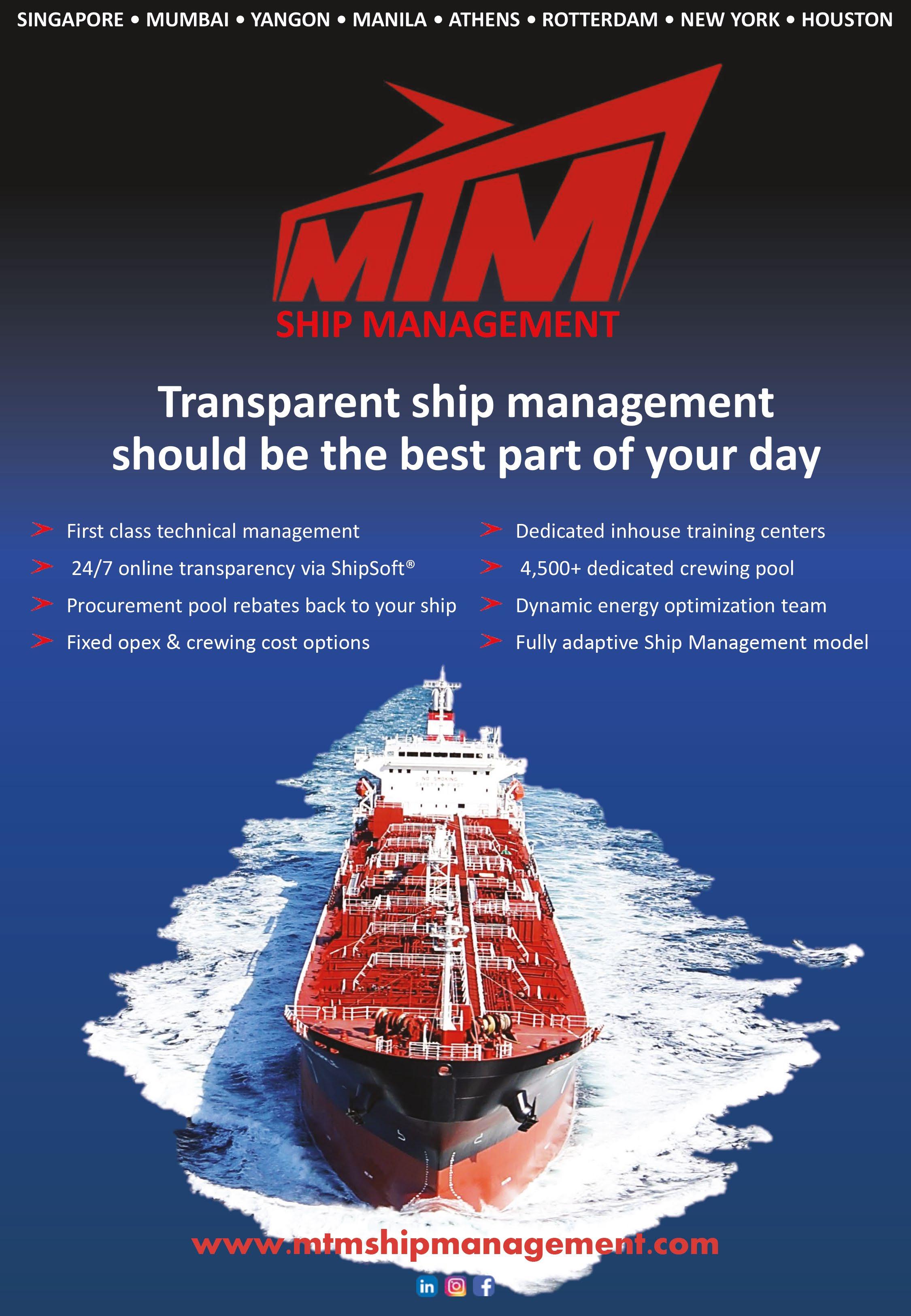
66 Ship Management International Issue 101 January/February 2023
Singapore
Tan Chong Meng
Decarbonisation & digital
Leading ship owners and managers based in Singapore are likewise rising to the twin challenges of decarbonisation and digitalisation.
Controlling a fleet of over 490 vessels transporting oil, gas and dry commodities, BW Group is one of the largest shipping players based in the Republic, headed up by Chairman Andreas Sohmen-Pao, third-generation member of the family of the group’s legendary founder Sir Y.K. Pao. It has some 200 LNG and LPG vessels, said to be the largest gas fleet in the world, as well as investments in sustainable technologies, in solar, wind, batteries, biofuels and water treatment.
Last August BW took delivery of two 174,000 cbm LNG newbuildings, from DSME in Korea, described as having the industry’s lowest fuel consumption and emissions profile. “We are committed to providing high-quality vessels and operations to our LNG customers and supporting the progress towards a lowcarbon society,” the company said in a statement on the occasion of the naming ceremony of the two Singaporean-flagged vessels.
BW also has its own digital affiliate, BW Digital Pte. Ltd, which develops, funds and operates digital infrastructure in the Asia-Pacific region. It is the owner and developer of Hawaiki and Hawaiki Nui submarine cables, that Mr Sohmen-Pao credits as having helped “change the landscape of international connectivity in the Pacific region.”
Singapore’s Pacific International Lines (PIL), one of the world’s top 12 container carriers, recently opened a Centre for Maritime Efficiency (CME) which is powered by the i4 Platform and uses shoreside routing services as the technological backbone for achieving its goals. PIL has also engaged Lloyd’s Register fleet optimisation experts, within LR’s i4 Insight brand, to help it reduce emissions and maximise fleet performance with a four-year fleet wide agreement.
PIL General Manager, Operations & Procurement, Abhishek Chawla, said: “As PIL continues to grow our container shipping business in key regions around the world, sustainability is also a key focus. Being a more operationally efficient shipping line would significantly help us to reduce our carbon footprint. With LR as one of our partners in the CME, we are aligned in our goal to leverage technology and digitalisation in our operations for enhanced operational effectiveness.”
PIL is also a firm supporter of digitalisation and last October successfully implemented its first electronic Bills of Lading (eB/L), using CargoDocs, for a leading international construction

engineering company, based in India. PIL transported the shipment comprising iron and steel structures from India to UAE aboard the Uru Bhum within two weeks. The new digital process facilitated the fast delivery time, the liner company reports, offering the customer an efficient and smooth experience.
Singapore-headquartered Japanese liner grouping ONE (Ocean Network Express) reports that last year it earned a B rating from non-profit environmental reporting body CDP (Carbon Disclosure Project) for its sustainability efforts, having previously improved this rating from D in 2020 to C in 2021. As part of its ongoing Green Strategy to reduce CO2 emissions, ONE says it will now install Bow Wind Shields on all its newbuildings, having successfully already started the practice with the 20,000 TEU ONE Trust and ONE Tradition.
Meanwhile, wet and dry bulk operator Pacific Carriers Limited (PCL), together with fellow Singapore-based regional shipyards owner PaxOcean Holdings Pte Ltd (PaxOcean), recently signed a joint development project (JDP) with class society ABS to study methanol as an alternative fuel for the PCL fleet. Under the JDP, ABS will evaluate the means and impact of retrofitting a PCL vessel with a propulsion system powered by methanol as an alternative low-carbon fuel option.
Hor Weng Yew, MD and CEO of PCL said: “This partnership with ABS and PaxOcean is part of PCL’s commitment to achieve carbon neutrality by 2050 or earlier. With methanol gaining maturity as a marine fuel, we believe it has great potential to significantly reduce our carbon footprint in the short to mid-term. This study will serve to identify the options we have to adapt our existing ships to handle methanol effectively and safely.”
Tan Thai Yong, MD & CEO of PaxOcean commented: “Our collaboration with PCL and ABS brings together collective expertise that allows us to work alongside to accelerate the potential use of methanol as a future alternative fuel for ships which will significantly reduce Singapore’s carbon footprint.”
Manager initiatives
Ship and crew managers based in Singapore are also doing their bit on the decarbonisation and digital efficiency front.
The Thome Group – which plans to merge with fellow Norwegian-origin OSM Maritime (see Cover Story) - has opened a modern operations hub at its office in Mumbai following the strengthening of its fleet support function and as a major step towards accomplishing its decarbonisation goals. The hub – which uses a large video wall comprising 10 LED monitors to display
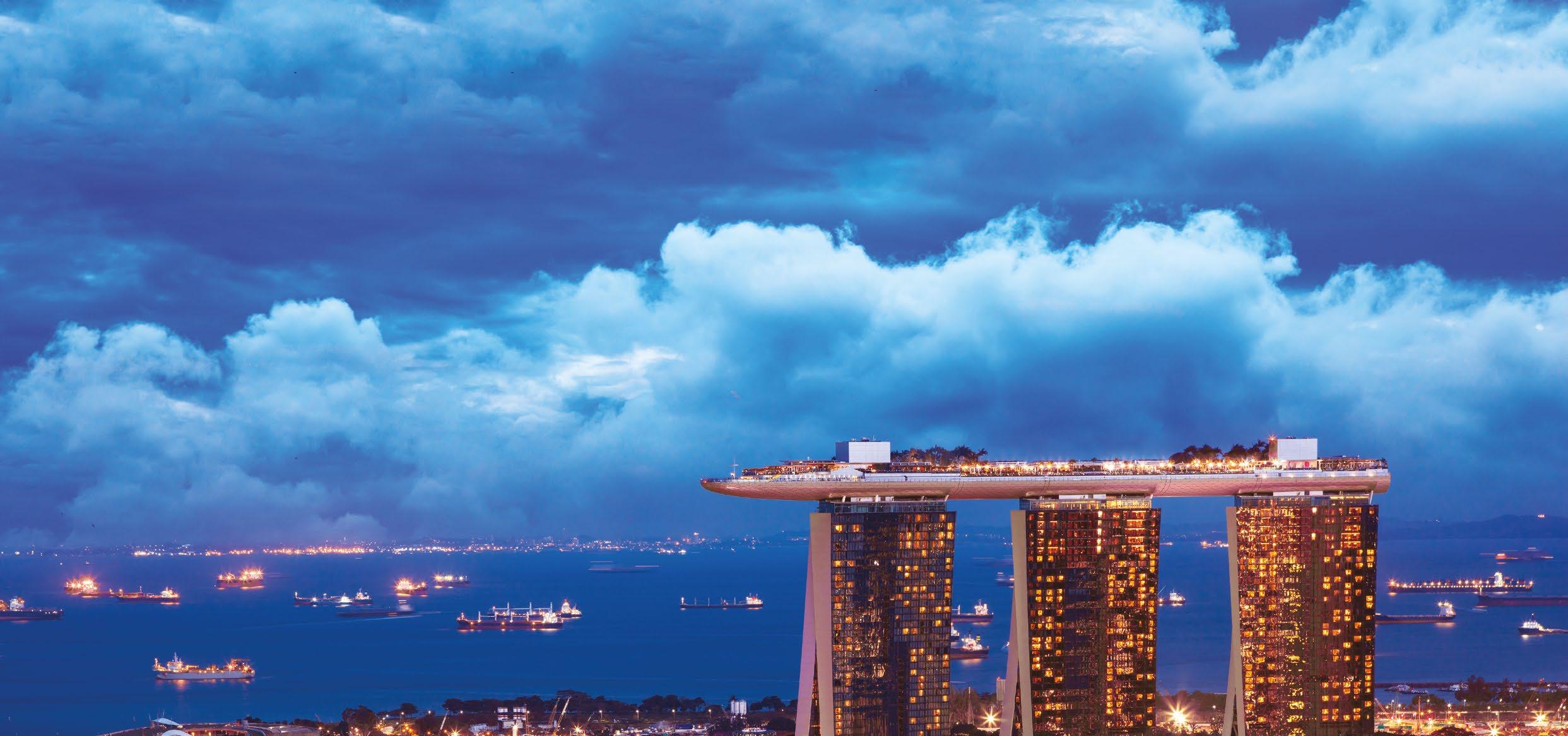

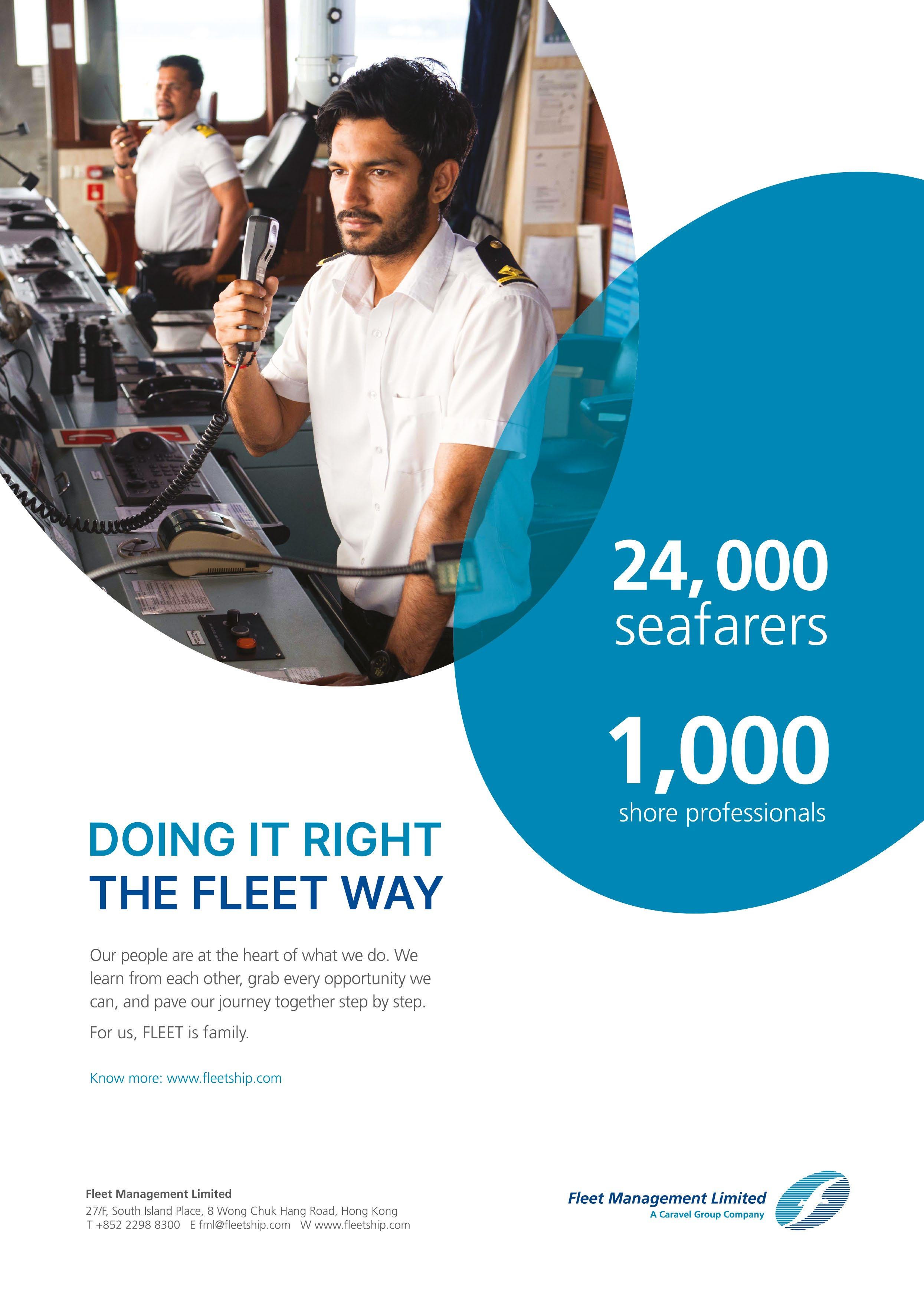
68 Ship Management International Issue 101 January/February 2023
Singapore
Andreas Sohmen-Pao

different monitoring and enterprise resource planning systems simultaneously - will complement an existing one at Thome Group’s head office in Singapore which opened in November 2017 to enhance its ship management services and reaction times to emergency responses.
“This facility will enable our vessel performance team to actively track the parameters and conditions vital for the optimization of fuel consumption and consequently help with emissions reduction,” says Olav Nortun, CEO of the Thome Group. “Our performance team will also proactively advise our vessel managers to make changes to achieve targeted CII (Carbon Intensity Indicator) ratings through speed optimisation, hull condition management, and appropriate adjustments to the operations of propulsion and auxiliary machinery. The facility will also assist with remote support for weather-based routing and equipment troubleshooting.”
Synergy Marine Group set up in Singapore in 2006 and has since proved one of the fastest expanding ship management companies, now handling over 500 vessels – including complex LNG, LPG and huge 20,000+ TEU container ships - employing more than 19,000 seafarers from a network of 25 offices in 13 countries. It prides itself on a strong focus on crew wellbeing, digitalisation and environmentally responsible policies, describing itself as being at the forefront of transforming the ship management industry.
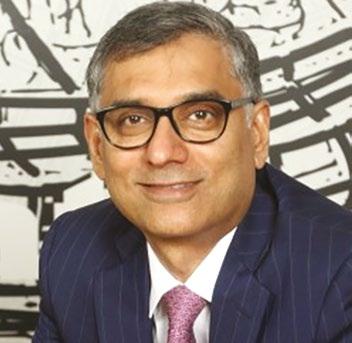
In October last year it welcomed Searchlight Capital Partners’ acquisition of a minority ownership stake in the Group. Synergy Founder and CEO Capt, Rajesh Unni welcomed Searchlight as a partner with “a strong and demonstrable track record of rigorous [digital] transformation and operational excellence execution,” adding: “We need to look at newer operating models focused on a value driven partnership as opposed to the present vendor mindset in the ship management industry. Amongst other things, this could be driven by digitalisation especially considering the increased regulatory complexity and ever growing ESG considerations.”
Finally, one of the world’s largest ship managers, AngloEastern Univan – which is headquartered in Hong Kong but maintains an important presence in Singapore – has teamed with containership-owning giant Seaspan Corp to set up a new procurement joint venture. The company, to be called Sea Sourcing, will be based in Singapore, reflecting the city-state’s importance as a ship supply hub.
Besides providing economies of scale, Anglo-Eastern COO Carsten Ostenfeldt says: “We foresee exciting developments in the digital space as a consequence of our combined forces and look forward to embracing next-generation digital procurement as a way to further add value for our clients.” l
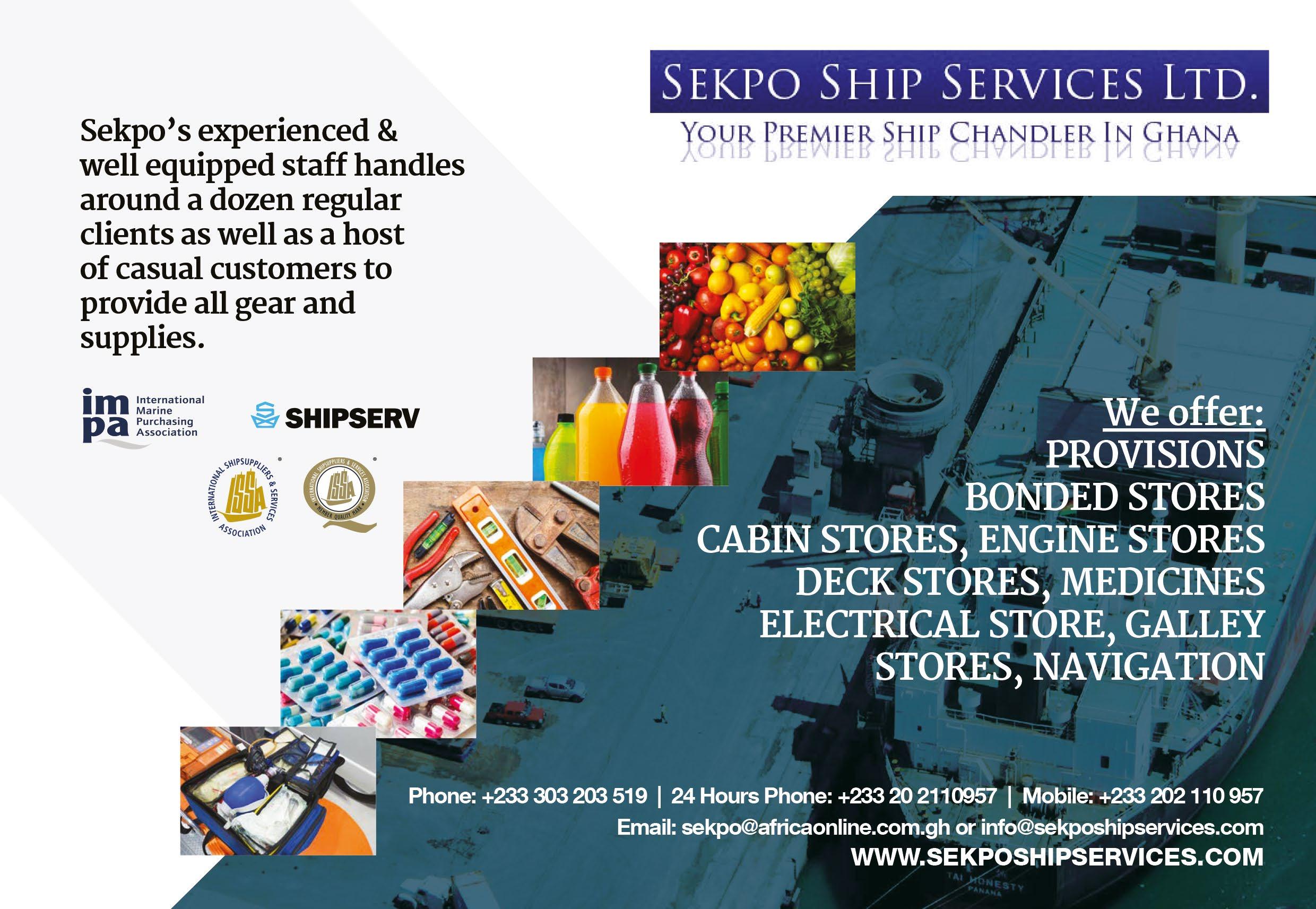

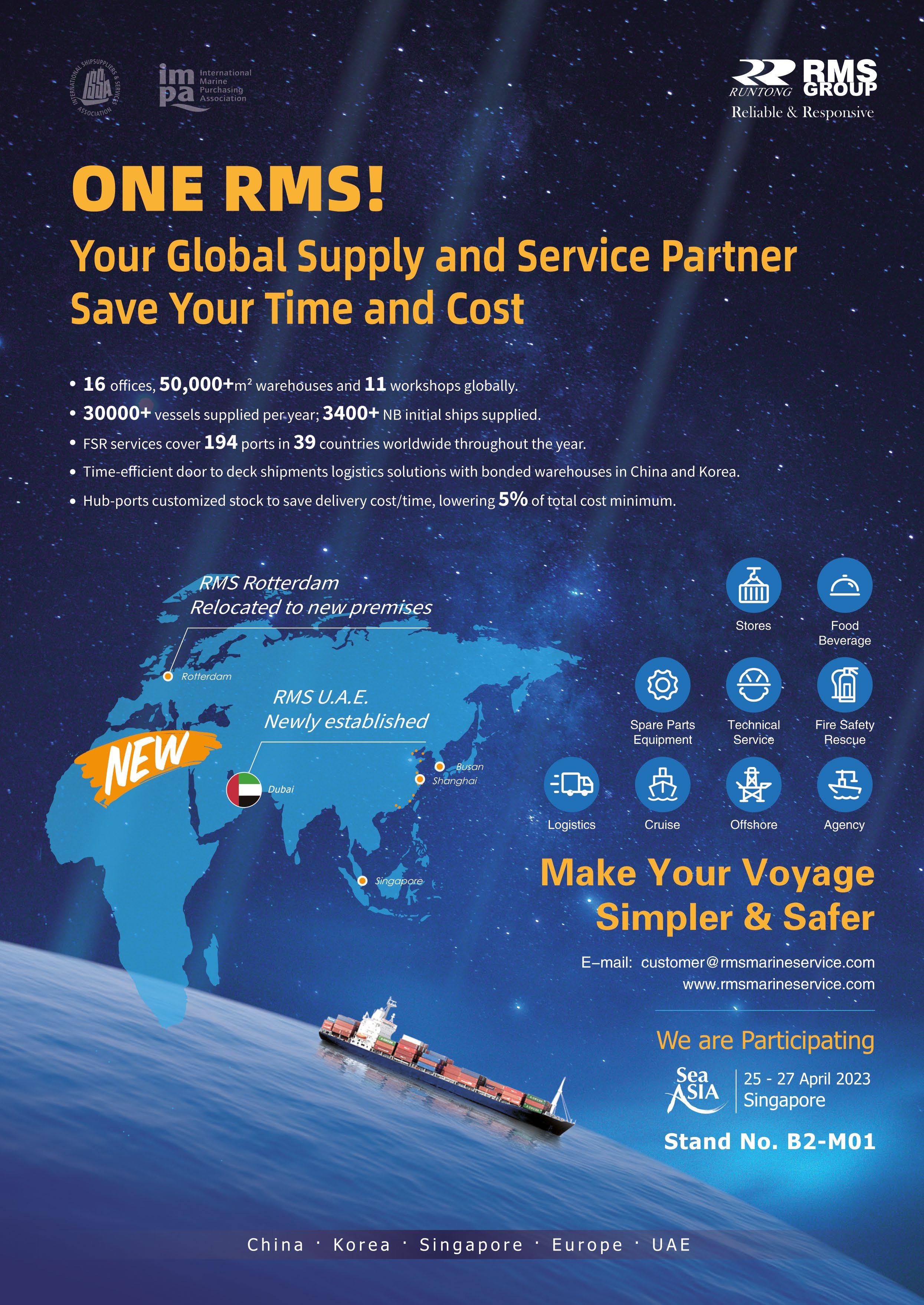
Singapore
Olav Nortun
Capt. Rajesh Unni
Covid impact switches the focus to quality managers
The Covid pandemic and the ensuing boom in the global container markets were beneficial in helping to crystalise ship owner views in Singapore and the Far East on the importance of using a strong international ship manager, according to Demetris Chrysostomou, Managing Director Asia Region and Group Director Business Development at the Columbia Group.
Heightened regulations and procedures associated with the way countries in the Far East dealt with the pandemic, meant that many owners found they couldn’t solve the issues they previously could, so they turned increasingly to the larger management companies for help. “The result was that companies like Columbia were able to secure more visibility of their own capabilities and the care which they gave vessels under their management,” he said.
“The immediate boom in the container market that we saw, especially here in Asia, had a very positive effect on our operations in Singapore as shipowners started to invest heavily in vessels, either second hand units or newbuildings. And whereas owning entities in major Asian shipowning countries maybe had previously concentrated on in-house
management of their vessels, they started to look to third party managers because of a shortage of their own resources,” he added.
The impact this had on market demand for ship managers able to provide quality crew and quality shipmanagement services was significant and contributed to sizeable growth in Columbia’s Singapore office, he said.
“A lot of owners were employing Chinese seafarers but had to find crewing alternatives because of the difficulties Chinese crew had in travelling to and from their vessels during the pandemic. Even if they could travel, a lot of the Chinese crew were not taking ocean-going seafarer jobs but opting for more lucrative shipyard new building delivery short-based contracts which ultimately pushed up the cost for Chinese seafarers and negatively impacted retention.”
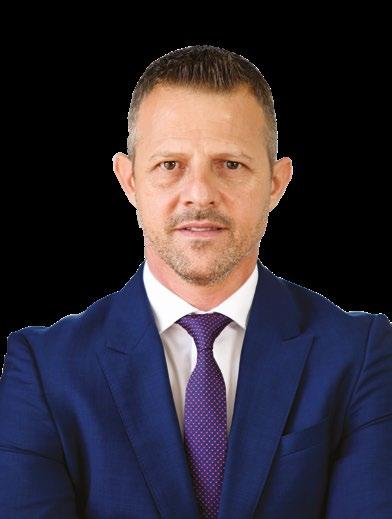
What has started to happen is a genuine need from Asian shipowners for international ship managers because of the increase in regulations, especially relating to the environment. The rise in the shipping markets meant a number of the owners moved from being locally focused to being global in their perspective. As their vessels started trading internationally, the need for larger shipmanagement expertise, with a global office network, started to grow.
“Clients in Asia have become more open to change rather which has helped a lot. And while Asia is looking good, we’re starting to see a lot of projects materialising in China, especially a return to offshore,” Demetris Chrysostomou stressed. “There is a lot of investment in local windfarms and the cruise sector is starting to come back in China now that the Covid restrictions have been lifted.” l
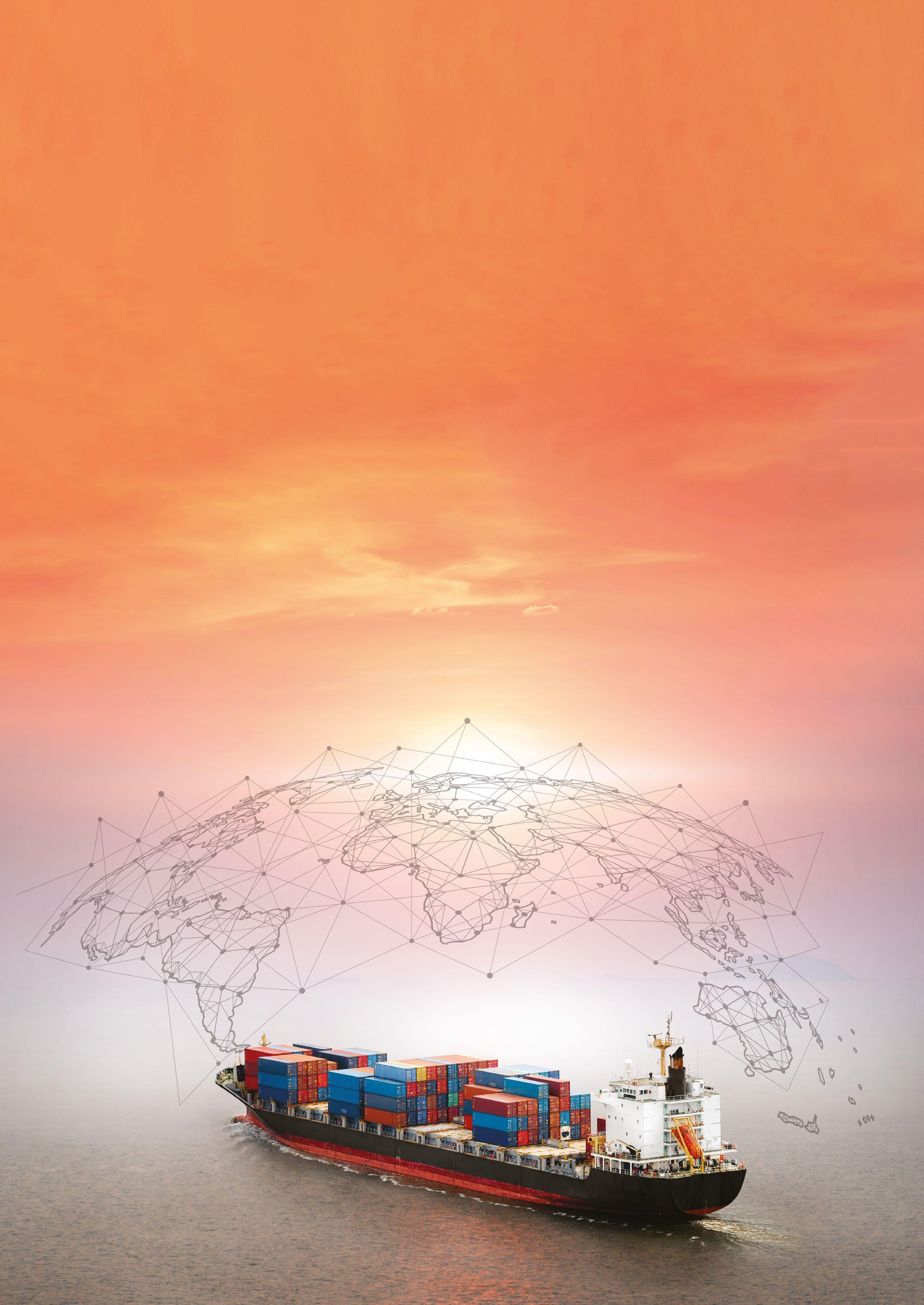

MMTM Ship Management - an owner’s perspective
TM was founded in 1980 in Singapore as ship brokerage company for chemical and vegetable/palm oil trade. By 1987 it owned and operated a fleet of 10 vessels and the decision was taken to set up a shipmanagement arm the following year to manage crewing, technical and commercial aspects of ship operations.
Today MTM Ship Management looks after a diverse fleet of 70-plus vessels of different types,relates its Managing Director, Capt. Rajiv Singhal (pictured), including aframax, LR, MR, product and SS chemical tankers, as well as having gas tanker experience. On the dry side, it manages bulk carriers ranging in size from handies up to supramax, kamsarmax and capes, and also managed container ships earlier.
As to reasons why Singapore was first chosen as location for MTM as a trader, shipowner and finally shipmanager, Capt. Singhal lists its position on a major shipping route, excellent infrastructure and global connectivity, highly skilled and experienced maritime talent pool, fully supportive government bodies, role as a global hub for activities like bunkering, spares, stores, provision supplies and crew change, and world-class shiprepair and dry-docking facilities.
“We manage ships for reputed owners and operators on the tanker and dry side from USA, Europe, Far East, Southeast Asia and Meddle East,” says Capt. Singhal. “60 % of the fleet is owned by MTM.”
On the decarbonisation front, MTM is playing a pioneering role and has taken a number of initiatives. These include a successful trial of biofuel usage - including aboard the MTM Colorado - on the
basis of which it has developed strong process and procedures to handle biofuel consumption on its fleet vessels and is “fully prepared for future biofuel usage,” says Capt. Singhal.
MTM has also installed energy saving devices like propeller boss cap fins (PBCF) on all owned vessels, which the MD reports can give a fuel saving of up to 3-5%, in turn reducing CO2 emissions by 9-15%. In addition, the shipmanager has carried out in-depth project studies on various other fuel-saving devices “like Mewis duct, propeller modification, VFD, air gill lubrication with detailed ROI/NAV/ IRR analysis,” which Capt. Singhal explains “can assist clients should they decide to install any of these energy saving devices on their vessels.”
Plus MTM is replacing all conventional fluorescent lights onboard by LED lighting to reduce power consumption, and has further drawn up a detailed Energy Management Plan (EMP) which will assist sea staff in saving fuel consumption onboard their vessels. The company has also developed software with the help of naval architects in India and Europe “to monitor frictional losses and lower the company’s carbon footprint,” he says.
“The journey towards voyage optimisation has also begun in MTM.”
Regarding digitalisation initiatives,
MTM has developed in-house a “bestin-class software programs, ‘ShipSoft’, to monitor all aspects of ship operations which include crew management, ship inspections, audits, purchasing, budget control, safety & quality, insurance,
vetting and planned maintenance in one digital platform,” he continues. “MTM is also developing a mobile-based ship inspection App where the vessel superintendent or senior officers can directly capture and report the vessel condition on the App.
All the above information is available to the clients through [our] Owner portal where they can see their vessels latest reports and status.”
MTM has also partnered with leading naval analytics companies like VPS & Oceanix to provide Hull and Engine performance management to its clients. For monitoring the CII of all its vessels, it has developed a dedicated module in ShipSoft where the year-to-date CII rating of the vessels can be easily monitored. Last but not least on the digital front, it has developed a web-based crew portal where all latest knowledge sharing tools (KST), new regulations and company procedures are posted to enhance seafarer training.
Capt. Singhal concludes by making the point that “MTM is not a third-party manager. We manage ships with an owner’s perspective.
Asset preservation and enhancement, and providing high commercial viability at all times, is what our teams aspire to deliver. The Technical and Marine teams are well supported by [other] competent teams like PMS (Planned Maintenance System), Vessel Performance Management, Supply Chain Management and IT infrastructure, which are among the best in the industry.” l

73 Issue 101 January/February 2023 Ship Management International
Regional Focus: Singapore Regional Focus: Singapore
72 Ship Management International Issue 101 January/February 2023
ABS Singapore makes simulation a reality for system modelling
Applications include lifecycle performance analysis, cyber security, digital twins and artificial intelligence, writes Gu Hai, Vice President, Head of Global Simulation Center, ABS Singapore
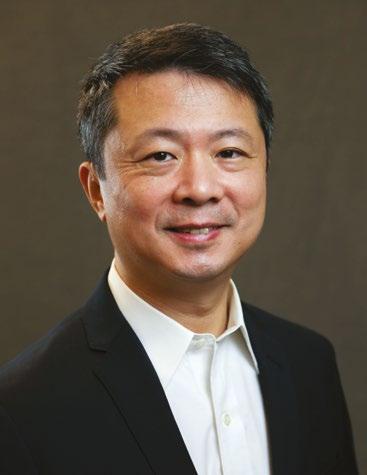

New simulation techniques are helping maritime stakeholders create models of physical assets in a digital environment to understand their behaviour under real world conditions. This simulation technique can be used on both high level and highly detailed scenarios, as detailed as a single component, a complete system or structure across a ship or a fleet up to an entire physical infrastructure plan such as a green corridor.
ABS has been using simulation in the form of structural or hydrodynamics analysis for some years but the ability to model assets at a macro or micro level represents a new frontier in assessing asset performance for the shipping industry.
Adapting a state-of-the-art methodology proven in other industries,
ABS can assemble all the elements into a model that can be used to evaluate behaviour from system level to an entire physical system.
ABS Singapore is working with shipowners, shipyards and equipment manufacturers to support the impact of energy efficiency technologies at all phases through a vessel’s lifecycle. ABS has used simulation to evaluate energy efficiency concepts for use on newbuildings or as a retrofit to an existing vessel. By building a model to evaluate performance it is possible to support concept selection and validate design decisions with given operational profiles.
A regular request is to understand the impact of dual fuel or hybrid power design. In a hybrid battery/dual fuel concept, a simulation model can be used to understand battery capacity and performance, how integrate to integrate the system or how to optimise charge/ discharge routines.
Because simulation creates a replica of real world conditions, it can be applied to concepts like smart and autonomous functions which are controlled by software. Because software cannot touch and feel, simulation can be used to build an environment to perform virtual system testing.
For a detailed ship model, users can inject data gathered from physical sensors to understand system performance and
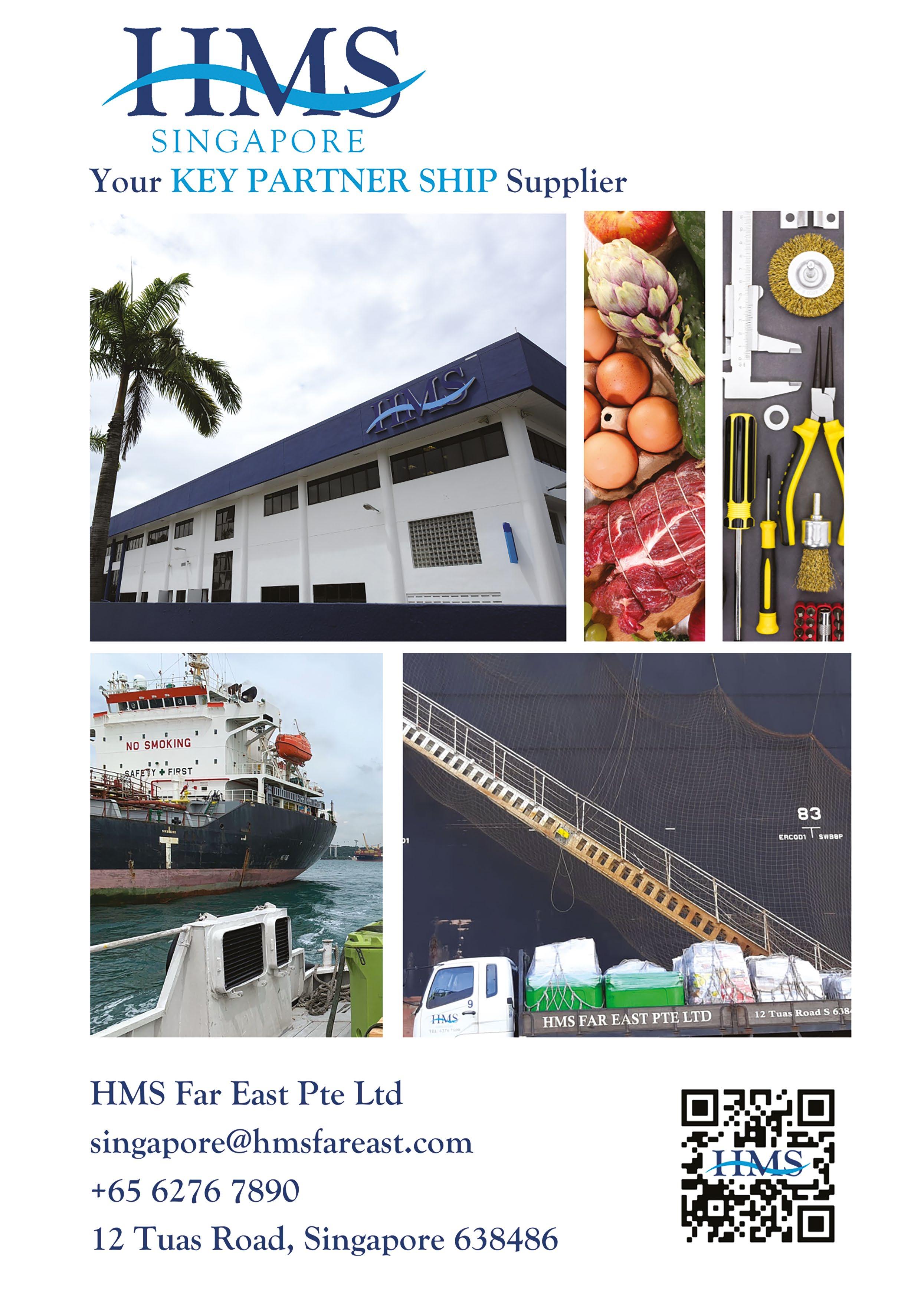
Regional Focus: Singapore 74 Ship Management International Issue 101 January/February 2023

create a true digital twin on which further simulation can be performed to improve operational optimisation.
Among the use cases supported by ABS is cyber security, modelling ship systems and using simulation to evaluate the impact and consequences of a cyberattack in the digital domain.
ABS has collaborated with stakeholders including iTrust, Center for Research in Cyber Security at the Singapore University of Technology and Design and Singapore Polytechnic’s Centre of Excellence in Maritime Safety to build the cyber-physical Maritime Testbed of Shipboard Operational Technology (MariOT).
The project combines construction of a physical lab-based system model and a virtual model created by ABS. This approach reflects the fast-evolving nature of cyber security, where the virtual model can be updated and expanded as new threats emerge.
Simulation also has a close relationship to the emerging role of artificial intelligence (AI) in shipping.
Under the auspices of the Singapore Maritime Institute, the Singapore Maritime AI programme is studying how AI and simulation can help designers and operators understand complex problems that cannot easily be modelled mathematically.
The SMI project will use data to train a neural network to behave in a similar way as a physical system but one for which the large amount of data normally required does not exist. ABS will use a physicsbased approach to create a model that can be used to generate the data that can be used to train the AI.
ABS rounded off 2022 by finishing as top performer in the maritime sector in the SGUnited Mid-Career Pathways Programme – Company Training (SGUPCT), providing training on system modelling and simulation to mid-career individuals and professionals at shipyards, designers, government agencies, seeking to further their careers and acquire new skillsets. l


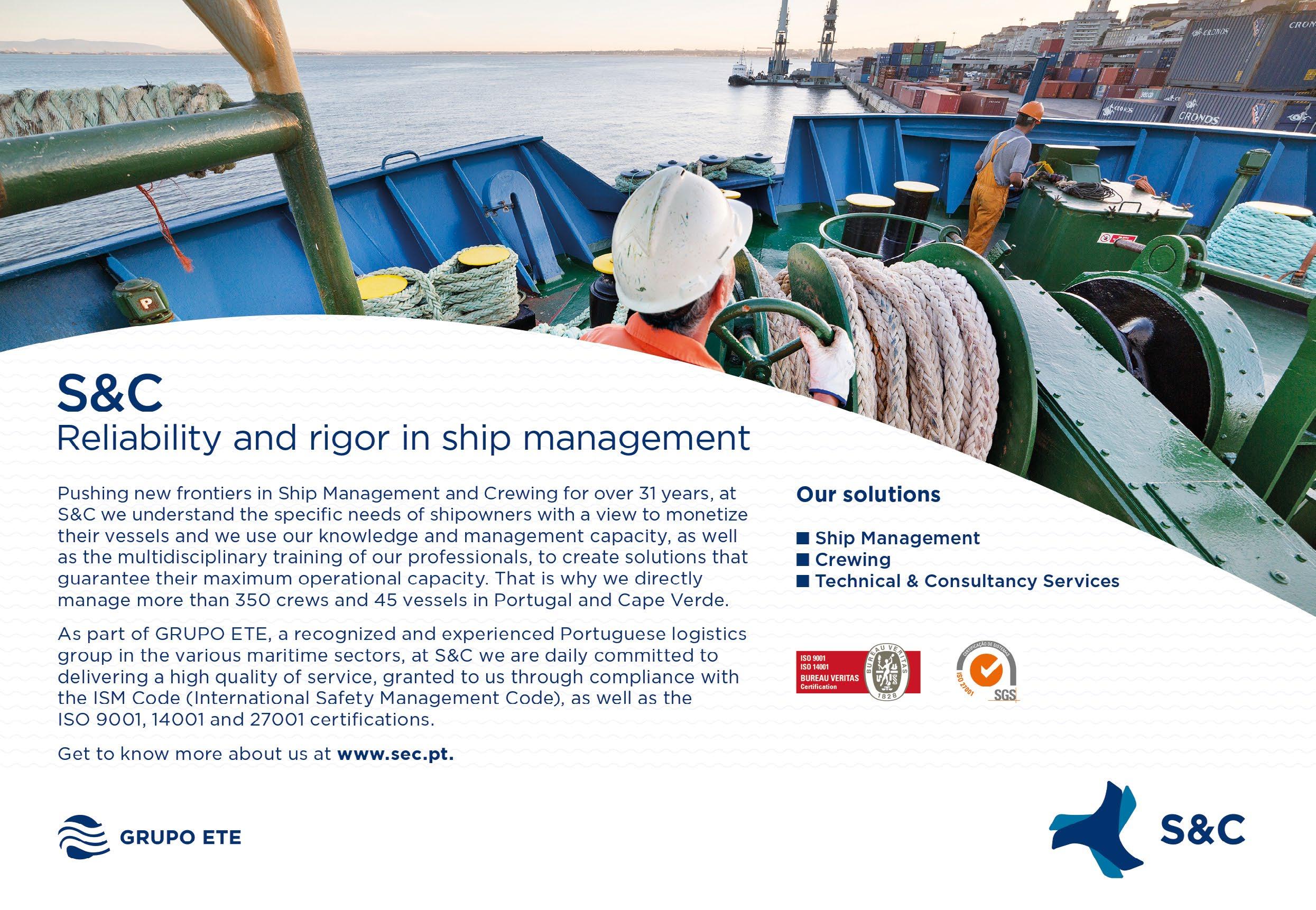
Regional Focus: Singapore
CMA Shipping doubles up on Commodores
In a first-of-its-kind dual award, the Connecticut Maritime Association (CMA) Commodore title for the year 2023 will be shared by the two cousins leading the Italian d’Amico Group, Cesare d’Amico, CEO of d’Amico Dry Cargo, and Paolo d’Amico, President and CEO of d’Amico International Shipping (DIS). The Award will be presented on Thursday, March 23 at the Gala Dinner marking the conclusion of the annual CMA Shipping conference and expo, at the Hilton Hotel in Stamford, Connecticut. President of the CMA Sandra Ennor said: “Recognising the incredible family-oriented success story of d’Amico through this award is a real honour and we’re delighted that Paolo and Cesare have accepted. The North American maritime community have long-standing and valuable connections to d’Amico and great respect for the achievements of the group. We can’t wait to welcome our Commodores to the gala dinner and conference this year and celebrate their shared successes.” l
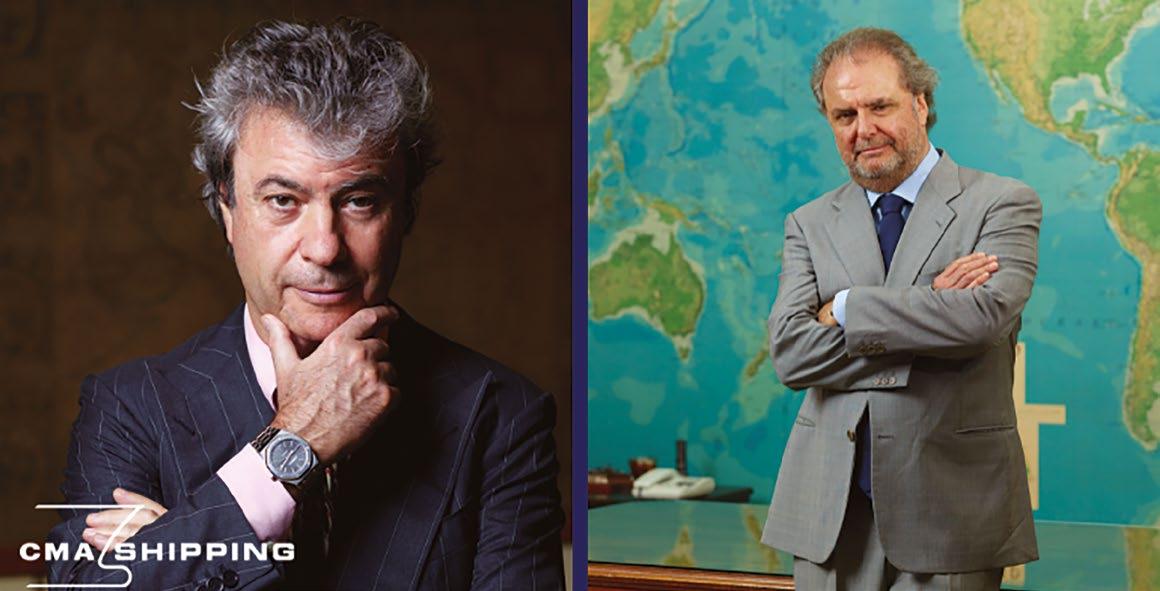
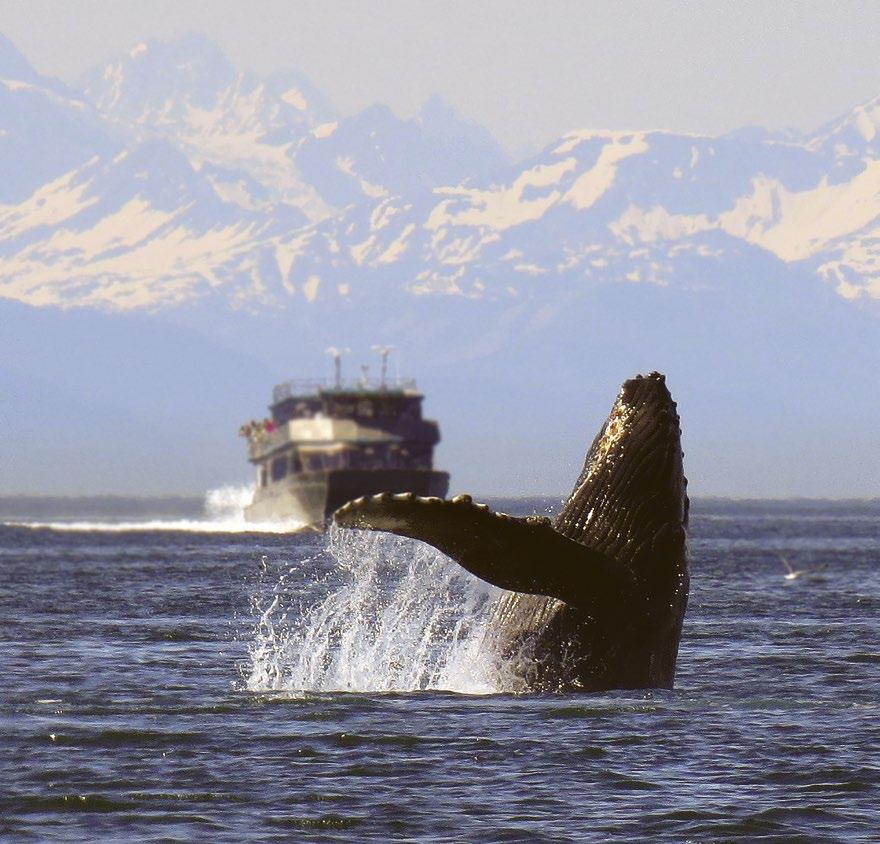
OTG helps save whales
Ocean Technologies Group (OTG) has partnered with World Cetacean Alliance (WCA) to make their e-learning title: “Becoming Whale Aware’’ available through the award-winning Ocean Learning Platform (OLP). The WCA-designed course supports commercial vessel operators by educating crews on how to avoid collisions with whales and dolphins. This, in turn, contributes to improving the safety of crew, passengers, vessels, and the wider marine environment. Harry Eckman, CEO of the WCA, said: “The WCA is thrilled to be working with OTG to host our ‘Whale Aware’ course on their Ocean Learning Platform. It’s a hugely important relationship that puts our course within reach of over one million seafarers and provides training that can potentially save the lives of thousands of whales.” l
FLEET leader honoured in India
Congratulations go to Kishore Rajvanshy, MD of Fleet Management Limited (FLEET), who was recently awarded the honorary degree of Doctor of Engineering and Technology by the Academy of Maritime Education and Training – AMET University – in Chennai. “Shri Rajvanshy is a visionary… always ahead of his time.” AMET’s Col. Dr G Thiruvasagam said during presentation the honour. Originally from Rajasthan, Dr Rajvanshy graduated from BITS Pilani as a Mechanical Engineer and began sailing at 21 years of age. He went on to become one of the youngest Chief Engineers at the Shipping Corporation of India (SCI) before beginning his shore-based career in Mumbai as a Superintendent. After moving to Hong Kong, he joined Univan and rose through the ranks to General Manager. In 1994, he joined Noble Group to establish FLEET, which was subsequently acquired by The Caravel Group. The company has grown organically from an initial one ship under management to more than 630 today. l
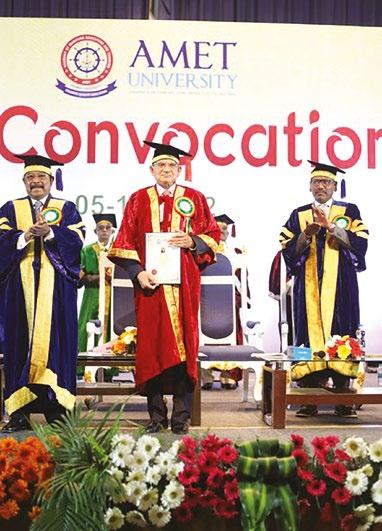
ABBA voyages on with Wallenius
Proving a ‘sleeper’ hit in London is ABBA Voyage, a revolutionary concert show featuring hologram versions of the Swedish pop group members as they were 40 years ago. A key sponsor of the show is Swedish shipping group Wallenius. Which has its own hospitality lounge at the venue named after its new rage of environmental, wind-assisted designs named Oceanbird. “We are proud to support ABBA Voyage with sustainable logistic solutions,” says Jonas Kleberg, Chairman & CEO Wallenius Lines. “Wallenius has a long history as the forerunner in sustainable shipping. Our joint values and focus on humanitarian aid, combined with the latest technology and digitalisation, will lead the way into the future – without losing our history.”

“I believe we must be at the forefront of what music and entertainment can be with ABBA Voyage,” says ABBA’s Benny Andersson, “and it is extremely pleasing to be able to make it all happen in partnership with Oceanbird and Wallenius, who are as keen on sustainability as we are.” l
Helping map ocean climate
For the second year running MSC (Mediterranean Shipping Company) is again supporting veteran skipper Boris Herrmann and Team Malizia in a round-the-world sailing race that seeks to promote ocean science, protection, and education around the world.
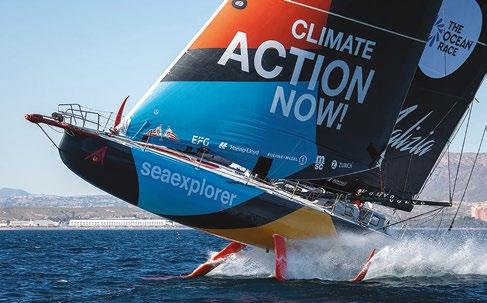
Over the next six months Team Malizia will circumnavigate the globe, visiting nine iconic cities and ports, and collecting CO2 data from the most remote regions of the ocean. MSC is one of the yacht’s six founding support sponsors. Carrying the message ‘A Race We Must Win’, the team’s voyage will form part of educational program ‘My Ocean Challenge’, used to teach children – including future marine scientistsabout the beauty of the oceans and the dangers they face through climate change. Team Malizia is equipped with an innovative onboard mini-laboratory designed to capture ocean science datasets, including from the remote region of the Southern Ocean, helping the scientific community build up a picture of that area for the first time. l
Thome backs DEI event in India
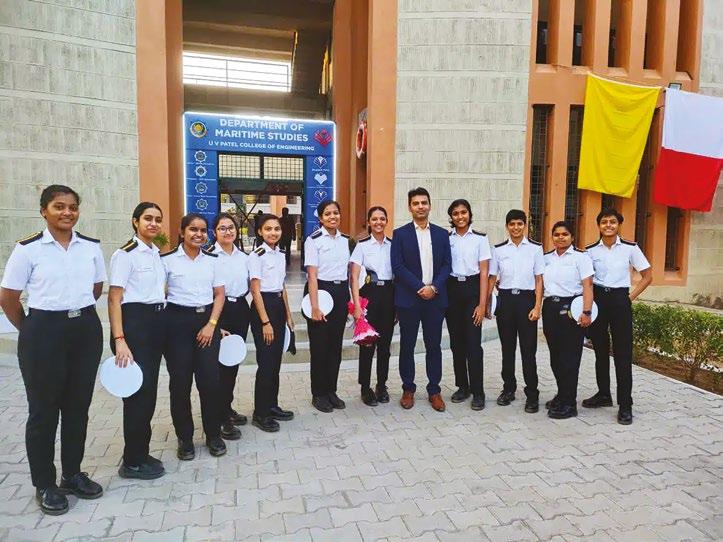
Aiming to break the bias against women in the male-dominated shipping sector, Ganpat University organised an interactive gender diversity seminar in Gujrat, India, attended by prominent women seafarers and other dignitaries and stakeholders in the maritime industry. Thome India’s Head of Recruitment, Capt. Vinay Singh Chauhan attended the symposium and supported the participants, gender equality and women empowerment being goals that are actively promoted at Thome. “We at Thome Group remain fully committed to enhancing the participation of women in the maritime industry,” said the company in a news report of the event, thanking Ganpat University for hosting such a constructive seminar to promote diversity, equality, and inclusivity (DEI). l
79 Issue 101 January/February 2023 Ship Management International
Ad Hoc Ad Hoc
78 Ship Management International Issue 101 January/February 2023
ISLE OF MAN
DEBATE
In the latest in its series of industry round table debates, SMI travelled to the Isle of Man to debate key issues facing the island’s maritime cluster.
Topics such as the challenges and opportunities facing companies on the Isle of Man and what they need to focus on to steer a clear path forward were discussed, and the role of the island as a future digital hub was one of the interesting conclusions teased out.
Moderated by Sean Moloney, CEO of Elaborate Communications, the panellists included Luke Tippett, Managing Director and CEO of the Dohle Isle of Man Group of Companies; David Furnival, Chairman of Bernhard Schulte Shipmanagement (BSM); Bruce MacGregor, Director of PDMS; Cameron Mitchell, Director of the Isle of Man Ship Registry; Lee Clarke, General Manager of Isle of Man Maritime; Robert Hockel, Managing Director, Shell Ship Management; and Sven Fromm, Managing Director, Clever Marine Services.
 Tippett, Managing Director and CEO of the Dohle Isle of Man Group of Companies
Tippett, Managing Director and CEO of the Dohle Isle of Man Group of Companies
 Clarke, General Manager of Isle of Man Maritime
Clarke, General Manager of Isle of Man Maritime

Sean Moloney
Looking domestically and internationally, what are the challenges and the opportunities facing companies in the Isle of Man, and what do you need to focus on to start a clear path forward? Luke, let me start with you on that.
Luke Tippett
I think if we look on the more negative aspect to start with, there are challenges that we’ve felt for a number of years now. I’ve been on the island for just over 10 years but since my early years, I’ve seen the commercial shipping community rapidly decline. I’ve heard lots of wonderful stories of the various companies interacting on a work and social level, bouncing ideas off one another, and we don’t have that any longer in terms of such a large presence of companies with worldwide ownership. We of course do have Isle of Man Maritime, and those involved with Isle of Man Maritime do a great job, and I think one of the things they try to do is keep a joined-up approach, hearing ideas from different people and different organisations across various areas of maritime. It’s not just commercial shipping, of course, but there’s yachting and the IT side of things as well.
But when you really do deplete the pool of people either working in, or interested in, commercial shipping, that therefore makes it a bit tougher for us as companies in terms of growing as fast as you’d like to, or sourcing replacements when people decide to move on or leave the island. At the same time, in terms of opportunities, whilst there still remains a select group of companies here there’s a willingness there for these companies to grow and to develop, and bring people in. We have a maritime element in the careers fair here that Isle of Man Maritime are heavily involved in, and they push members to engage in this as well, to open the eyes of people at GCSE age or going into university who are making their life career choices. So getting people’s interest fighting off competition from other industries, I think that’s a key opportunity for us, but it’s just making that step.
Lee Clarke
Can I just expand on that? When I came into the position of general manager, coming from career development in the maritime industry, one of my bugbears was this ‘careers at sea’ tagline. I recognise that’s where a lot of us start, but I’m sure there’s other people around the table that didn’t go to sea, and there is such a huge potential to tap into, certainly here on the Isle of Man.
So, what we’ve tried to do is change that talk and say, “look, you can start at sea” and we have a very successful cadet programme. We have Shell and we have Dohle that have Manx cadets, and that’s a stepping-stone, I believe – and we have a number of other cadets, with Carnival and so on. And I think bringing them back in future, to be the future maritime leaders, I think is important for the Isle of Man. But coming back to the grassroots and saying, “if you are IT minded, if you’re finance minded, it doesn’t matter, you can still work in the maritime sector.” And we had over 120 people attend that event, and it was a huge success, because it really got the word out that maritime is growing. We’ve got several initiatives we’re looking at, working with Fleetwood Nautical College, to do everything from the base roots level of efficient deckhands or motormen, all the way through to different courses for crew management and stuff like that. So, these are the things that we’re looking at, because we recognise that there is an element of bringing relocating people to the Isle of Man, and the Isle of Man Plan supports that, but also home growing our own, making sure that they understand that we are a maritime nation, is very important.
Sean Moloney
But what’s driving this decline in shipping companies on the island?
Isle of Man Debate 81 Issue 101 January/February 2023 Ship Management International
Lee
Ship Management International Issue 101 January/February 2023
Luke

Sven Fromm Careers in shipping that are finance, IT, book-keeping or whatever, it isn’t really a problem. But to get people motivated to actually go on a ship or touch a spanner is an international problem not an Isle of Man problem. You don’t get a German behind the furnace anymore if you don’t pay him millions to actually go on a ship, because you can earn basically the same as a plumber and see your family every evening. So, that is the big problem. And you need people that are still educated properly, can do their job, have a practical side not just the ability to open a laptop.
Bruce MacGregor
I think there’s a place and opportunities for attracting people into wider Maritime Service business areas, aside from the more traditional ship management activities. This is already reflected by the breadth of services delivered by organisations in the existing IoM Maritime cluster. The industry is changing all the time, across the board, including with Digital Transformation requirements, and so there’s opportunities for young, talented people, in maritime organisations, that maybe currently work in different sectors, hopefully these organisations and opportunities make the maritime sector just as attractive. There’s a lot of great activity and organisations here on the Island, delivering a wide range of maritime related services, which if marketed correctly could attract even more maritime services and talent. Those new businesses and young talented people would by nature then promote and attract others to the maritime sector on the Island.
Cameron Mitchell
Yes, it’s just a question of different sectors, isn’t it? We’ve seen some sectors do very well on the island but shipping has been in decline. I think a bit of history is probably important in all of these discussions. In 1984, the Isle of Man Registry was created as a flag really as a second British registry, which allowed tonnage to move here and still be counted as British tonnage at the IMO. Companies were enticed to come here because there was a zero percent corporate tax, there still is zero percent corporate tax. It gave an advantage over the rest of the world at that time. But the rest of the world’s moved on and caught up. Singapore, Dubai, all of the big maritime hubs now can all offer all of those things, and free accommodation, saying “if you register this many ships with us, you can move here for free.” And to compete in that space you also have to have the human
resources element, which is another big part of the equation, labour costs etc. We’ve got the infrastructure here, good 5G, wifi. We’ve got all of that. I think we’re a very digital-focused island, but that’s not attractive enough. Most shipping companies have a global perspective these days and realise they need a specific strategy for specific regions, including where you’re trading, such as an Asia Pacific rim strategy. So having an office just in the Isle of Man, that’s not going to serve you or your company very well. You’ll have one in Singapore or you’ll have one in Hong Kong.
Sean Moloney
If you look just on the flag side, you’ve got the UK Ship Register and its new concierge service, and they’re stepping up and they’re trying to be a bit more aggressive. Is that affecting things as far as the Isle of Man is concerned? I mean you’ve always been brilliant at promoting your flag.
Cameron Mitchell
And still are! We have a different model to that of the UK. We don’t lose any tonnage to the UK from the Isle of Man. Again, think it’s about the rest of the world growing up. When we talk about the quality of flags now, I believe that we’re the best quality flag in the world, but the quality of other flags has increased, so your competitive advantage is no longer what it used to be. And I think that’s another factor in attracting shipping companies. So, marketing… absolutely. Our model is business development managers in key maritime locations. We currently have a business development manager in Hamburg, Singapore, Tokyo, Beijing and Athens in Greece, and this year we will bring on another four business development managers, and they will be based in Hong Kong, Taiwan, the US and Middle East. So, that’s our model. We support our BDMs and they support our marketing ambitions. We’re not sure. So, that’s our model. We support them.
Sean Moloney
David, let me bring you and then Rob in on this, touching on what we’ve been discussing but also on the ship management sector.
David Furnival
From BSM’s perspective, the reason we were successful here for the last 30 years is because of specialisation, in the energy, LPG and offshore sectors, and we’ve got a lot of talented people who’ve worked in the company for decades. We’re very loyal and we’re well respected. They started to retire, that’s the problem, and getting people coming in to backfill, there’s a challenge. So, at one point maybe seven or eight years ago, we had to close down the technical operations here, because we also have an office in Newcastle that did the same thing, and simple consolidation allowed some profitability from that business. We kept on with the crewing, because we still had a lot of talented crewing people here, clients, clients like BP who are very satisfied
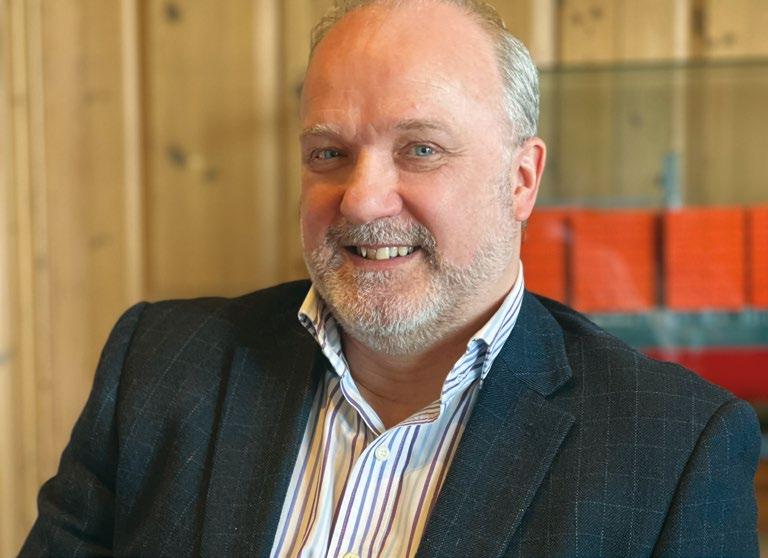
with what we do, and we also have the crew pool, who are very loyal, and we could circulate them back to the clients on a regular basis, so everyone was satisfied. The problem is, of course, we have a lot of competition, external, and we have internal competition, because we have offices in most of the major maritime areas. And as they grow, they become more efficient, more profitable while as you get smaller, it does the opposite. So, while we still have profitability here, the future requires expansion, and there is no expansion at the moment, because if we did get more business, it’s not going to go the Isle of Man as a first choice. It will go to Mumbai or Singapore. And that’s often because that’s where the client wants the business to be carried out.
Sean Moloney
Right, a lot of points there. Looking at the future of ship management here on the island, what is it that needs actually to be done to try and develop growth?
David Furnival
Well, digitalisation is one area that will assist, because obviously, if you downsize your office operations, work more from home, you can achieve a lot. I mean, I don’t only work in my role with the Isle of Man office. I work with all the other offices, virtually, and it’s very, very effective. You don’t have to travel too much, and we can get things done. So, companies that digitalise and can offer that reduced overhead cost as part of the service, I think that’s one way potentially.
Cameron Mitchell
I think what David’s talking about there is exactly what we are doing as our flag state model, by putting business development managers in the places where people are doing business and they want to talk to somebody local, on the ground, in that country. Most of these BDMs have a technical background, so they can answer questions. We train them. They understand our model, what we do, and that has been invaluable for us, because I think, as a flag state, we’d be struggling now if we didn’t have those people on the ground.
Rob Hockel
Probably at this stage it’s more a summary of what everybody has mentioned, but I think we have seen the transition of shipping to the east. First, it was the shipyards. Now it’s the seafarers. So,
people who used to maybe be on the ship, then used to go to the yard, the yard people became the superintendents, and we still had an employment model where we had lots of people from the UK in those positions, even in Germany. But today everybody has Asian seafarers, Indian or Filipino, and it makes sense that these people move into office space roles, so you set up an office where they are and play the arbitrage game on the salaries. What is a disruptor is the technology, and we have proven under Covid that it doesn’t really matter where you sit. It’s the quality you provide. And I think the living standards are levelling up, rand you see that with the seafarers’ salaries, where they’re more moving to one direction rather than having one salary per nationality. So, I think the challenge for us is how we can use that technology so they don’t notice where the service is, but still maybe have a local person in that country. But I think that’s where the challenge is, and we need to go with that transformation.
Bruce MacGregor
Digital Transformation is currently a key business need in the Maritime sector, so as well as attracting such IT skills to provide these much-needed digital transformation services, as PDMS do, the island could also achieve, further growth in the variety of maritime sector services building more service expertise that can be exported, whether in IT or other maritime services of course. As an example, PDMS do a lot of work on Island but also internationally, with a lot of the expertise and the coordination coming from here on the Isle of Man. Providing services further afield is not such a big challenge any more.
Sean Moloney
I totally agree that you don’t need to have that many people here. I mean, a lot of Greek shipowners will have their headquarters in Monaco and have 20 people there, but their ships are trading all round the world. But a basic question is what’s going to bring them here?
Bruce MacGregor
Well, I guess it comes down to a combination of both business and personal factors, doesn’t it? As Cameron was saying earlier, we’ve got to look at, and market the business attractors, whether they are from the local jurisdiction benefits, regulations benefits or other key areas. But also, there is a great personal quality of life here on the Island. If you enhance, create and market, what a place like the Island has to offer, then there are more people and their businesses who will want to come. We have some people, that work with us now, that have actually come to the Island from further afield in Europe because they’ve liked the idea of what we do and in living here. So, I think, while it’s a challenge, it’s getting the messages of the value of being a business here as well the personal perspective ‘out-there’, and of course further looking to ourselves as a jurisdiction as to where we can create more new attractors.
83 Issue 101 January/February 2023 Ship Management International 82 Ship Management International Issue 101 January/February 2023
Isle of Man Debate Isle of Man Debate
Sven Fromm, Managing Director, Clever Marine Services
Bruce MacGregor, Director of PDMS

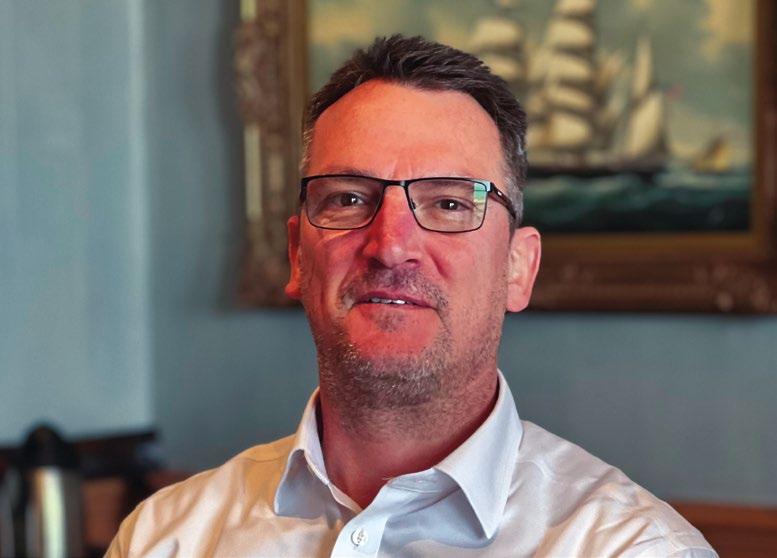
Bruce MacGregor
Rob Hockel
Maybe to add to that, I think also the whole world is commoditising left, right and centre, so even something like LNG is now being traded. It’s not the 20-year contract anymore. And we are all facing the same dilemma of the demographics, where the older people are now slowly retiring, and we don’t have the middle in between, and it’s going to take a couple of years before the young people come up. And then we are competing, as you said, with the likes of Cyprus and Singapore. Also looking at this room here, we’re all white. Yes, we have got some Germans here, which is much appreciated, but no females, nobody from the countries who are on those ships. Maybe that’s something which we also need to offer here on the island, that somebody who comes from India, from other places, says, “Yeah, this is a place where I’d like to work,” rather than it all being all white.
Lee
Clarke
Well, I think we’re in an interesting period with what we’re trying to achieve on the Isle of Man overall, in terms of the Island Plan, how do we attract business, how do we attract people onto the Isle of Man, and I think that’s a key issue in terms of what we’re trying to achieve. Digital, as David pinned nicely, is one of the things that we’re looking at, working with Digital Isle of Man, which is a government agency of enterprise, on how we come up with a digital maritime strategy, what that is going to look like. We have the infrastructure on the Isle of Man that can support a huge data source in terms of data centres. The infrastructure itself is geared up for e-gaming. It’s geared up for fun. It’s how can we look at changing that and supporting big data. How can we look at supporting digital platforms, even autonomous shipping? The Isle of Man government is looking at digital parks in Ballasalla, and they’re looking at other avenues. How can we tap into that? Yes, we have the traditional way of shipping, but how can we also support the future way of shipping, and what is that going to look like?
On the digital services and transformation side, it’s also about having the skilled people, and the in-demand IT services. Because if you’re a large maritime organisation, operating elsewhere in the world, your likely to consider a number of factors when it comes to service offerings and not just about where the data is as they are also likely to want some real people on the ground that have the expertise to look after, their services, their data and to help-out.” In fact, there are actually a lot of associated skills and services on the Island. With digital technology, it’s not just about buying a piece of kit or software. It’s about actually accessing services and the people that look after it, whether that’s hardware or software, in order to make their business operation a success. I think it’s an area where the Island has already got quite a lot to offer while also being an area where growth could be focused.
Sean Moloney
I think with your gaming element you’ve got that sort of mentality here, haven’t you?
Rob Hockel
Well, even if you look at the software that’s being developed, it’s all being gamified in terms of how people interact with it. The crewing manager can see everything on his iPhone, in terms of that vessel. The owners can look at data streaming in about the efficiency of these vessels. This is all growing and it’s all going to become important parts of the shipowners’ life, and where that data centre could be a possibility and an attractor to the Isle of Man. We have the infrastructure, as you said. How can we best look at this and go, “right, well, this is where we want to put our data. It’s secure. It has the skilled people to look after it.” I mean, we have a booming sector in terms of IT, and the quality of the Isle of Man is phenomenal. So, it’s figuring out – and I’m really excited about the Maritime Digital Strategy, which Isle of Man Maritime are looking at with digital, to see what the possibilities are.
Bruce MacGregor
When done well, Digital Transformation is a continuous business transformation journey. We’ve delivered these kinds of services since we began in business 30 years ago. If an organisation can deliver such services to maritime sector businesses globally, while in the main doing it from here on the Island, then you’ve already got them engaged with the Isle of Man, by successfully providing these services.
Luke Tippett
As everybody around the table has already mentioned, the reasons for the decline of THE Isle of Man’s maritime presence are clear. We no longer are as competitive as we were, and
other countries or other regions of the world have become more attractive, for the reasons that we’ve mentioned. But if we’re tapping into something different or, let’s say, being the market leader when it comes to the digital side of things, if that’s what it takes to put our heads above the parapet again, I think that’s something where we can really set a good example. We have the intelligence, the workforce on the ground. We can no longer, I think, rely on what we’ve been talking about for the last five or ten years, the fact we have a highly reputable flag, and we have maritime experts, and we have competent law firms. There has to be a new niche, how we can stand out once again and put us back on people’s maps, their radars.
Sven Fromm
But I think innovation cycles are so much quicker now, and also you can copy these advantages much easier because of digitalisation. How do you then keep it ring-fenced so it stays on the island? I mean, because in the end, it boils down to costs and winning business. If we would use a service that is produced on the Isle of Man in IT, for example, how long until another crewing manager would have the same software?
Luke Tippett
But it’s always going to be a struggle though if you cannot get these changes from a political point of view with bureaucracy and thins having to be passed into legislation throught Parliament. It was the same, ten or eleven years ago, with trying to make the Isle of Man the place for cryptocurrencies. That didn’t work so with trying to do the same for digital, have things really changed? Maybe, maybe not.
Sean Moloney
David, let me bring you in on this, because you know places like India that have been very much a driving force on the innovation and data side of things, and on trying to keep the costs down.
David Furnival

software development than we have in ship management, and we manage over 600 ships. So, it’s a massive change, a transformation, and the profitability we’re getting from that digital offering is more than the ship management offering. So, we’re sort of transforming our entire company in one way into a digital company. And I joked some time ago that, if you buy MariApp software, you get your ship management thrown in there for free. We’re getting pretty close to that.
Sean Moloney
If you look at clusters, each has an area of responsibility and expertise. London is financial services. Hamburg is ship owning, container lines. Mumbai is recruitment. Why can’t the Isle of Man be data handling and digitalisation, or is there too huge an amount of competition there already?
David Furnival
Well, if I look what we’ve done in digitalisation in our organisation, ten years ago we had a handful of people involved in development, and it was mostly to do with using other people’s software to manage that and manage the infrastructure, the architecture. Now, in MariApps, which is our digital company, we’ve got over 700 people in coding. I mean, it won’t be long before we have more people in
The software that we’ve developed has been designed by the people managing the ships. We produce software fit for purpose because we know what’s needed. It’s not some theoretical adaption of what somebody outside of ship owning thinks is a good idea. It’s actually hands-on, workable software, and it’s built with that user interface in mind, so it’s accepted by people. It hasn’t been easy, you know. Don’t get me wrong, we’ve gone through various iterations of the software, but now it’s got to the point where it’s very, very attractive to a lot of companies, and, you know, we have 200 shipping companies buying the software now. And we see great future potential for that when it comes to managing ships efficiently, monitoring fuel consumption, CO2 emissions. Autonomous shipping is going to come to some degree, not in the very near future, but in the medium-term future. We have to be able and ready to offer how to manage all that, and that can be done from the Isle of Man. We don’t have to go to programming in [SmartCity) Kochi. It’s just that’s where we chose to set up our base, where our chief digital officer is located, if you like. It could be directed from this country. It’s about having innovation, understanding what’s needed for the future, and then producing that template. The programming can be done anywhere.
Bruce MacGregor
What works really well is when you correctly identify and deliver what the business needs, through collaboration with the customer in a ‘technology partnership’ approach. When combined with the value add of domain expertise, this will, as a result, deliver the right outcomes. As a result this creates a much more efficient business transformation journey, while building something which can develop further over time as well, as it will much better reflect the true needs of the business and of course the people who operate it. So, it’s a question of, “not just throwing something over the fence” and saying, “IT, build this.” It’s actually working
85 Issue 101 January/February 2023 Ship Management International 84 Ship Management International Issue 101 January/February 2023
Isle of Man Debate Isle of Man Debate
Cameron Mitchell, Director of the Isle of Man Ship Registry
David Furnival, Chairman of Bernhard Schulte Shipmanagement (BSM)
collaboratively, in partnership and with flexibility to get a really great Digital and Business Transformation outcome.
Sean Moloney
When you have a cluster that’s specialising in that, you’ve then got that resource that people, companies can draw in and they can say, “Come along and work for us. I know you’ve been working for our competitor.” And you have that sort of crossover there. Sven, let me bring you in on this. What are your thoughts?
Sven Fromm
For the Isle of Man to become a data centre I think one of the problems is actually getting the workforce over here. If you listen to the radio, it seems to be a problem to get doctors over here, they prefer to go the England. I don’t know why because I would never leave here. I love this place, absolutely. But it seems to be that the attraction of being quiet, no crime, pretty much no unemployment and all that, seems not to be enough really. The metropole is missing. Also, there can be a problem obtaining work permits. I agree that we have digital expertise on the island, but as David said, by developing this software, you need a tool that’s ready to work, and for that you need in IT here a guy with a shipping background, because you need to understand the vessel to make software.
Cameron Mitchell
For the data centre side of things, if you want control centres for ships, we’re in a pretty good position here. One direction points to a fairly big open space. We’ve got Starlink on the island. So,
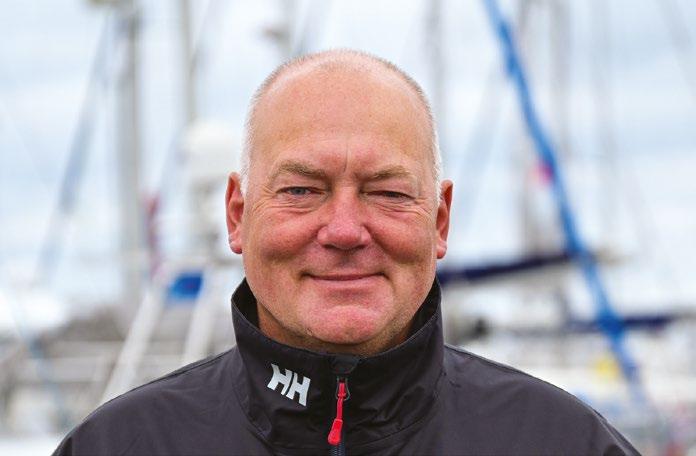
The Isle of Man is beautifully positioned and it is time we started to benefit from this. We are surrounded by many marinas and yearly there are some 18,000 boats around us but so many simply PASS BY our island! They don’t try to stop because there is nowhere to stop. Just think of the thousands of visitors we miss, including yacht-owning TT and motorbike GP fans.
I would like to see the Isle of Man
if you think about your future development and autonomous shipping specifically, it’s not a bad spot really, the Isle of Man.
Bruce MacGregor
I think with the right attractors, both existing and new, and marketed the right way then you can attract business and their people. I’m not saying it’s always been easy, but for example we’ve grown considerably, including in the last few challenging years, through a combination of recruiting people here on the island, but also in Scotland, elsewhere in the UK and further afield. So, you can grow here on the Island, but in an example of, let’s say, if a new maritime services organisation was looking at setting up here it’s not like in the past where all the people would be needed and provided from just here, it doesn’t happen that way nowadays. It would more likely be a core of people operating the business locally, which then goes on to grow by attracting more, but also with a fair number coming from elsewhere, as working remotely is, as we all know, becoming much easier and more workable all round.
Lee Clarke
We always dismiss the lifestyle, but the lifestyle on the Isle of Man can be challenging in the winter. But I am the same, I had moved off the island and I couldn’t wait to get back because of the lifestyle. We all know we have to have a day’s travel before we go somewhere, but these are the challenges, living on the Isle of Man. But there are a lot of benefits to being here, and I do think the digital section of maritime for the Isle of Man is something. However, maritime is a cluster and one of my
Dreaming of a bigger and better IoM maritime future
By Kuba Szymanski, Secretary-General of InterManager
maximise its offering for the maritime community. So, in my dreams, I envisage Ramsay Marina with 450 places! And that’s still only half of what Dun Laoghaire, 76 nm miles away, has!
I also dream of persuading our Manx Government to refurbish the 160 years old Douglas Harbour to enable our historic island to accommodate cruise ships. Currently these vessels are passing by the Isle of Man daily. Instead they voyage between Liverpool, Dublin and Belfast, carrying away millions of dollars (yes dollars because the majority of their passengers are Americans). How much better if we could welcome them to
the Isle of Man with its fascinating history and beautiful scenery. Finally, I would also like to see the EU wake up and recognise that we really need European seafarers to manage ships. The Isle of Man should step in to offer great relocation opportunities for Brits, Germans, Poles, Dutch, Danes and other seafarers who cannot afford to settle in their own countries due to vicious tax regimes and therefore would look very favourably at the IoM with its superb opportunities for families and lifestyle. Such a move would reinvigorate the Isle of Man’s ship management sector. l
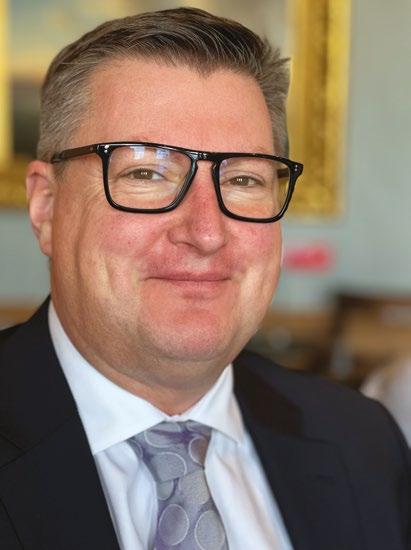
objectives, going back to Luke’s point right at the very start, is to create that maritime community talking again and coming to the events. One of my big challenges has been getting people back into the mentality of coming to our events. We struggle to get people to come.
Cameron Mitchell
For me, I think the big thing is around innovation at the moment and our next five years as a ship registry will be changing the model, or adapting our model. What we saw during the pandemic was that the amount of phone calls and communications for us increased, by probably 50 percent over the two years, and that was because companies couldn’t get to see their ships. They didn’t necessarily have the digitalisation that we’re all talking about at the moment for ships, and we got a lot more technical queries etc. So we’ve changed our model to offer consultancy services. We’ll still be a regulator, but if you want to use our technical expertise and test our regulatory framework for a particular piece of equipment or a particular type of fuel, then we’re there and we can provide that service. We’re dealing with a lot of companies daily on innovative
projects, all based elsewhere – but we haven’t attracted those green tech companies to the island, and I think that’s an area where we should be looking quite hard at. We’re also seeing a lot of development work that’s originated in yachting transferring to shipping now. Fuel technology is going to be massive. How do we get that on the island? I don’t believe there’s any blockages apart from talent and a willingness to do it. It’s actually very cheap to register IP here, and not a lot of people realise that, a lot cheaper than the UK and the US. So, I think there is scope within those sectors. I think we just need to be very clever about how we do it. Singapore’s massively into green tech at the moment. I don’t think we could ever compete globally, but I think we could attract enough to continue to diversify the maritime economy here, and that’s what it’s all about, sustainability and development for the future.
David Furnival
There’s one area that could be leveraged, I think, that’s the biosphere status. For example, on software, we’ve just developed a software version 2.0 for the [marine pollution] geotagging software Eyesea, which is a not-for-profit organisation but has massive potential and huge interest around the world. We’re looking at registering that company in the Isle of Man.
Sean Moloney
Thank you all very much indeed everyone for taking part today. l
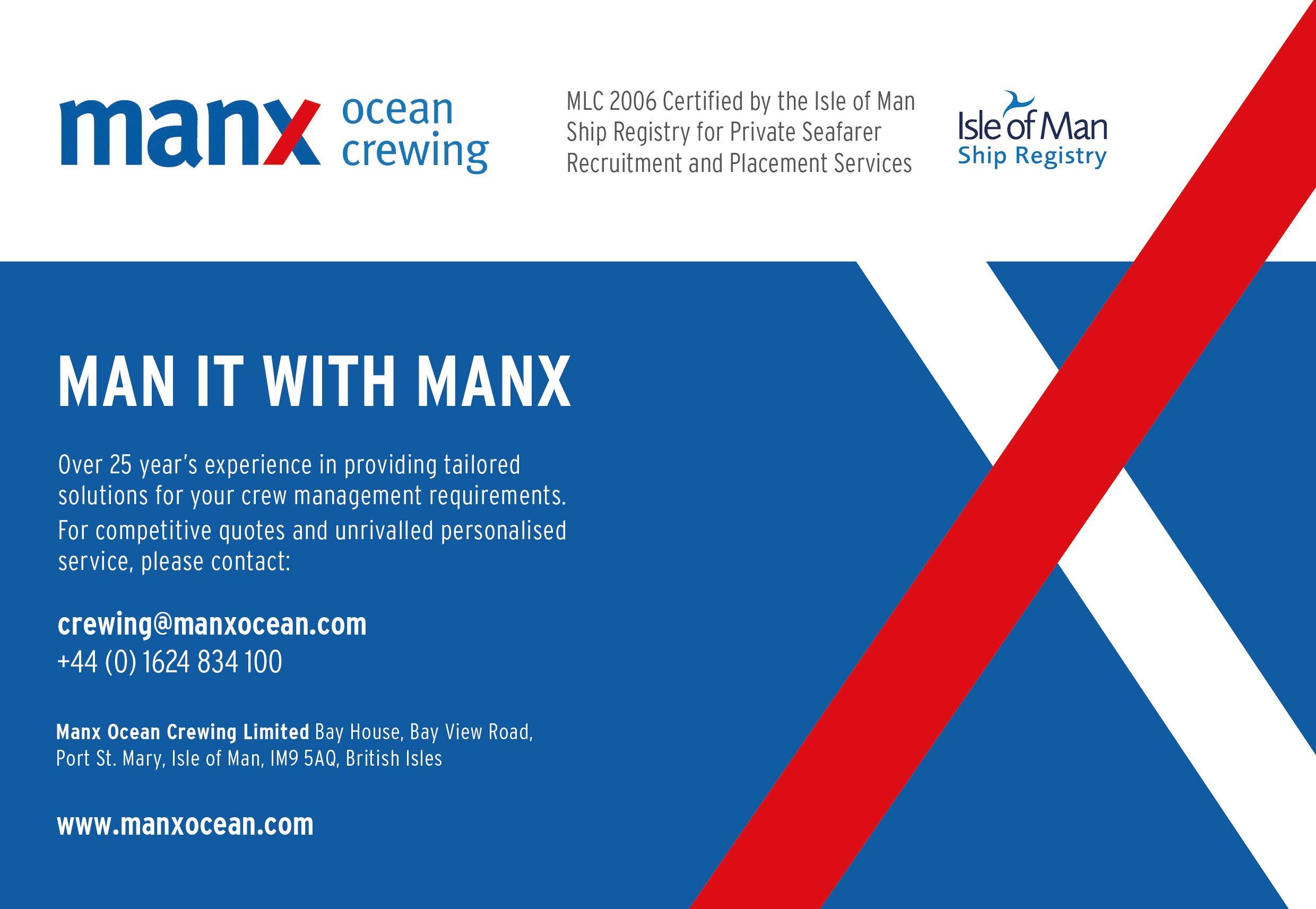
Isle of Man Debate
Isle of Man Debate
Robert Hockel, Managing Director, Shell Ship Management
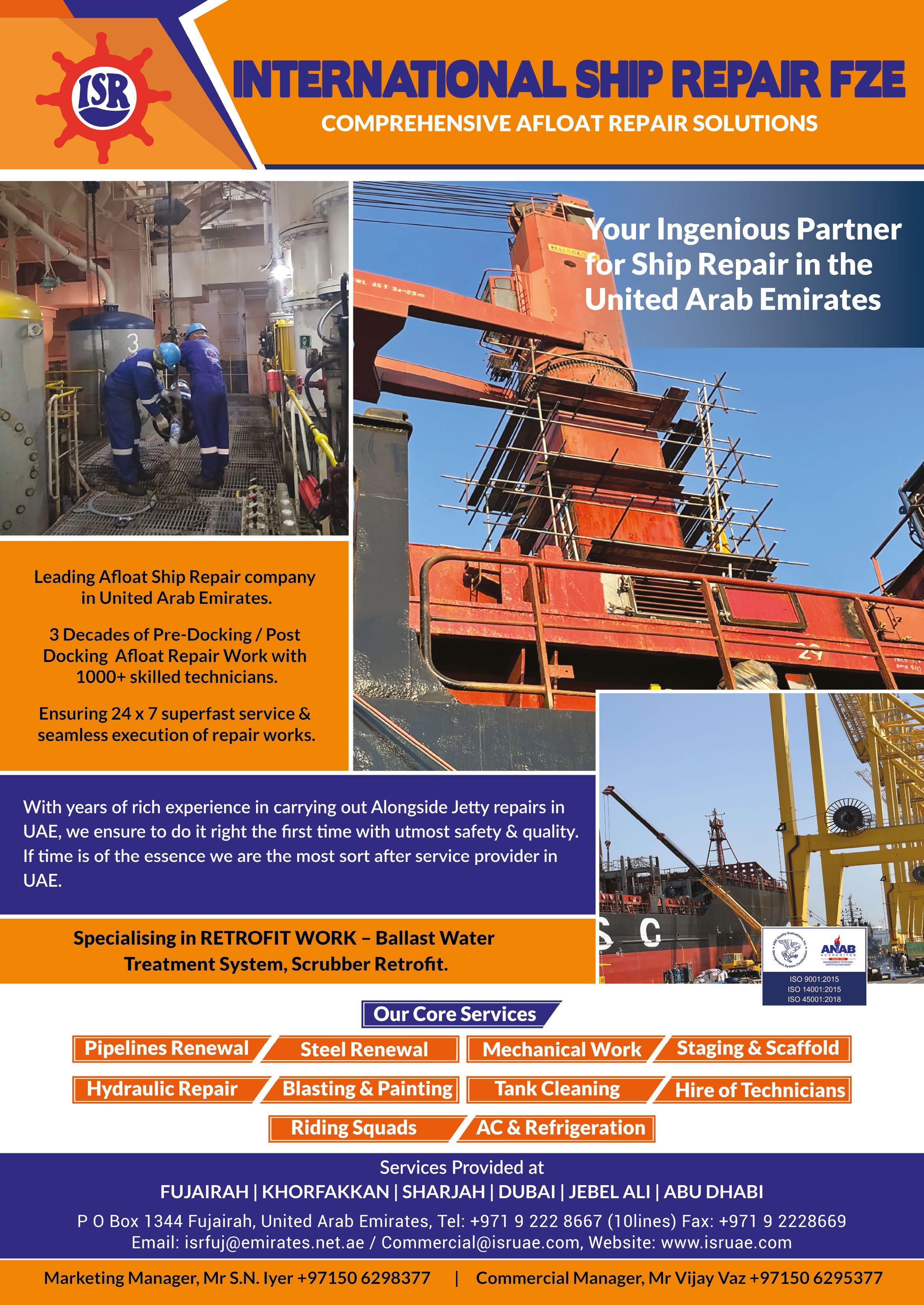
Alternative Viewpoint
Getting a grip on the ‘green energy gap’
By Dr Martin Stopford, leading maritime analyst and economist
Ever since IMO’s climacteric decision in 2018 to phase out shipping’s CO2 emissions, maritime companies have been desperately searching for a zero-emission propulsion system. The problem is that heavy fuel oil (HFO) is a wonderfully cheap and powerful source of energy, and finding a commercial replacement is almost as challenging as the transition from sail to steam in the 19th century. That revolution from sail to steam

dragged on for 50 years and caused shipping companies endless angst. At its peak in the 1880s, Henry Endicott the respected manager of John Swire’s China Navigation, warned that “an up-to-date engine is very important to a steamship because it consumes less coal and sails faster. If we only consider expenses and buy a steamship with an old engine, it will consume much coal and sail slowly, and we will certainly suffer.” That says it all.
Between 1855 and 1915 steam ship fuel consumption fell by 80%, so engines and boilers had to be changed several times during a ship’s life. It is a long time since shipping companies have had to deal with this sort of

ongoing technical obsolescence, but that is what lies ahead.
Initially there was much discussion about replacing slow steam diesel engines with fuel cells, leading to all-electric ships.
That debate has subsided, with fuel cell slipping into the background. Batteries are still on the agenda for shorter trips, but in the deep-sea trades slow speed engines burning green fuels have started to look like a relatively painless route to zero carbon.
Methanol is already in use and dual fuel engines burning ammonia will be delivered in 2024. Of course, methanol and ammonia are a poor substitute for heavy fuel oil, but they win hands down on emissions because shipboard carbon capture remains eyewateringly expensive. The green fuels will also be expensive, but at least they offer an easy way forward – or do they?
The problem is that green fuelshydrogen, methanol and ammonia - are all produced with green electricity and the world faces a massive ‘green energy gap’ between the demand for these fuels and the available green electricity supply.
The attached graph illustrates the problem. The blue line shows the world’s supply of fossil fuel energy between 1965 and 2020, with a projection to 2050. The supply of green energy is shown by the bars over the same timescale, and this projection suggests that the ‘green energy gap’ will still be there in the mid-2030s, and maybe the 2040s too.
Projections of this sort are notoriously unreliable, but in this scenario global energy consumption only grows by 13% between 2021 and 2050, so the demand bar is not set very high.
On this analysis, shipping companies which rely on a ready supply of green fuel risk disappointment. The limited supply of green fuels is a well-known problem. They are manufactured with green electricity, and as the chart shows, wind and solar production have a very steep hill to climb. Geothermal and nuclear might save the day, but they are only just on the horizon. But in the short term there is an even bigger problem on the demand side for businesses hoping to secure green fuel. They will be in a queue behind the automobile industry which is already lining up to charge its batteries with ‘green gas’and they have a massive appetite.
In 2021 the world consumed about 14,000 TW hours of energy from gasoline, mostly used in motor vehicles. In terms of energy that is half world’s electricity production of 28,300 TW hours. So as the auto industry accelerates along the curve to electric cars, a vast amount of green electricity will be needed. But in 2021 solar and wind together only produced 3,000 TW hours of electricity and according to the same graph it will be 2030 before they can fill the auto industry’s tank – with not much left for anyone else!
It makes you think. Maybe shipping companies’ strategic plans should not rely too much on green fuels even if it does sound like an easy fix. If the green electricity they need does not arrive in time they risk ending up like General Custer at Little Bighorn - wiped out! Unfortunately, the other options are all much harder work, calling for skilled staff, better systems and luck. So it might be a long voyage. l
89 Issue 101 January/February 2023 Ship Management International
Analysis Car carrier market at full throttle
In this exclusive analysis article for SMI, Ian Cochran takes a look at the deepsea car trades, arguably the most susceptible to consumer demand
Following several years of slow growth and a slump during the pandemic, the car carrier sector revved up again last year.
Most of the new and secondhand vehicles are transported in pure car carriers (PCCs) and pure car truck carriers (PCTCs) - the difference being that PCTS are fitted with strengthened decks that are able to be raised to enable the vessels to transport heavy rolling cargoes, such as construction equipment, which gives operators another market to tap into.
According to Clarkson Research’s report ‘Car Carrier Trade & Transport 2022’ published late last year, resurgent market conditions reflected a range of factors, most notably robust vessel demand.
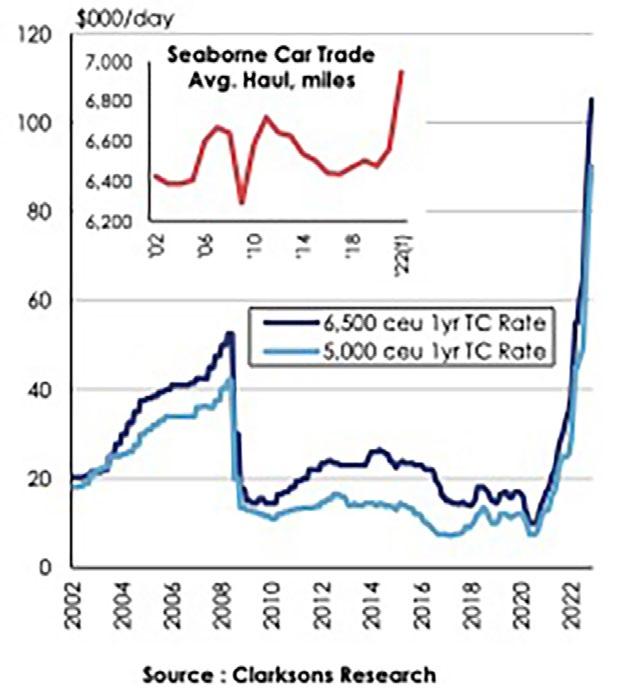
Although last year’s seaborne car trade volumes started well below ‘pre-Covid’ levels amid disruption to car production from supply chain problems resulting in component shortages, volumes rose last year, as these issues started to ease.
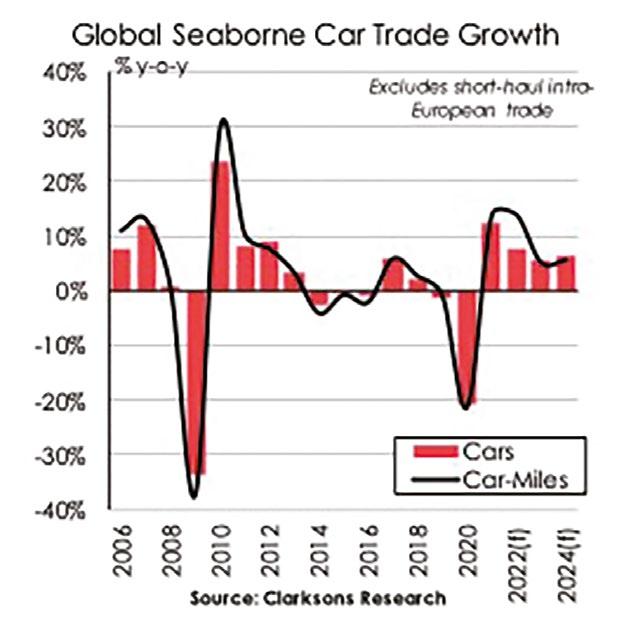
Global deepsea car trade was set to grow by 8% to 20.3 mill cars last year (-5% versus 2019’s overall figure). Importantly, changing trade patterns increased demand. For example, the sector was on track to grow by 14% in car/miles terms last year, rising 2% above pre-Covid levels - around 6% higher at around 6,900 miles.
This was largely driven by burgeoning long-haul Chinese exports (particularly to Europe),
which were said to account for over 50% of global car/mile trade growth last year.
Increased heavy rolling cargoes and rising uptake of generally larger and heavier electric vehicles (EVs) and hybrids (amounting to some 25% of car trades), added further support to the sector, Clarkson said.
In addition, markets also tightened, due to operating inefficiencies. For example, the Clarksons Car Carrier Port Congestion Index showed an average of 26.5% of fleet capacity ‘at port’ globally last year to November (2021 = 25.2%), versus 23% on average ‘pre-Covid’ (between 2016/19).
There were some signs of this situation easing during the fourth quarter of last year, but the index still remained above ‘pre-Covid’ levels.
Extremely limited fleet growth was also a factor, as at the start of November 2022 the fleet was only 0.4% above the beginning of 2018’s level, totalling 757 vessels.
Newbuilding activity picked up last year from the previous subdued levels, with around 86 vessels of just under 0.7 mill ceu (car equivalent
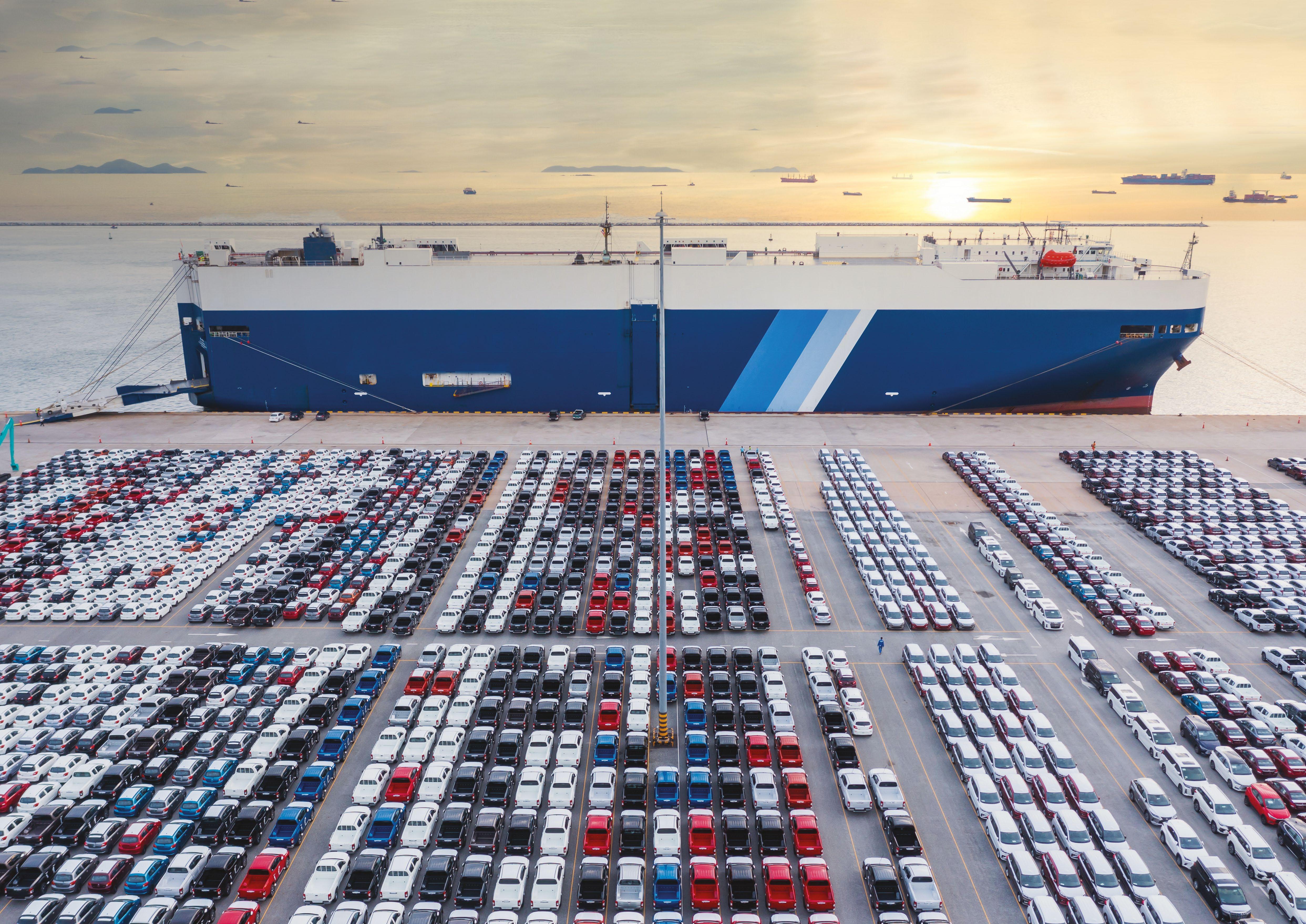
units) on order as at November (16% of the total fleet versus 2% at the start of 2021), most of which are scheduled for delivery from 2024 onwards. The price for a 7,000 ceu LNG dual-fuelled PCTC was around $91 mill, Clarksons said.
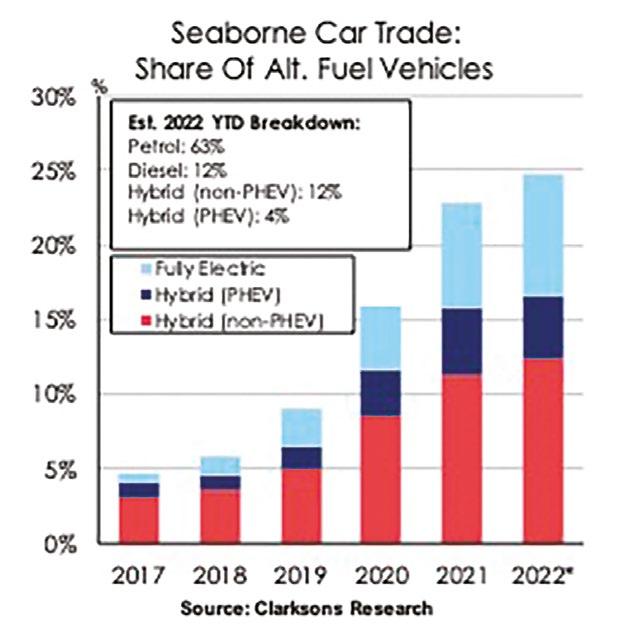
Most of the newbuildings were designed in line with car manufacturers stated aim to be ‘green through the supply chain’, as all but five ships ordered were LNG capable, while about 25% were also designed to be ammonia/methanol fuel ready.
As for charter rates, a standard 6,500 ceu PCTC’s 12-month timecharter level had hit $105,000 per day last November, which was double the previous record set during the second quarter of 2008. Charters were typically concluded on a period basis and much of the charter fleet is now operating on long term business.
Looking at the ownership profile, the top 10 owning groups were responsible for 67% of fleet
capacity. Major operator Wallenius Wilhelmsen was the largest group (0.53m ceu capacity), followed by Ray Car Carriers (0.36m ceu), with Japanese operators, NYK (0.34m ceu), MOL (0.31m ceu) and ‘K’ Line (0.28m ceu capacity), making up the top five.
The majority of PCCs/PCTCs operate on liner-type services and are controlled by the major operators, many of whom have contracts of affreightment (COAs) with vehicle manufacturers.
Looking ahead, a range of factors influenced Clarksons’ outlook, from pent-up demand, shifting trade patterns and EV uptake, to macroeconomic headwinds and fleet inefficiencies.
Overall, supply/demand fundamentals supported growth.
However, Clarksons warned of a scenario of a more severe global economic downturn, but pent-up demand and the steady resolution of supply chain disruptions were likely to provide some protection against this.
The research team’s base case for seaborne car trade going
forward assumed that the recent gains will be maintained, but further growth would be more limited, resulting in about a 5% increase in trade to around 21.4 mill cars this year, which will be around ‘preCovid’ levels.
Turning to 2024, the possible easing of global macroeconomic headwinds could see some gains, with around a 6% growth to 22.7 mill cars shipped initially forecast. Another factor, which could affect car carriers, is the recent and forthcoming environmental regulations. These could promote slower vessel speeds, EST retrofitting and an increase in recycling of older less efficient tonnage.
For example, Clarksons estimated that around 45% of the car carrier fleet trading in 2023 would only be rated at D or E under the IMO’s recently introduced Carbon Intensity Indicator (CII) without speed reductions, or machinery retrofits. If they were still trading in 2026, this figure would hit around 80%, the broker claimed. l

Ship Management International Issue 101 January/February 2023
Analysis 91 Issue 101 January/February 2023 Ship Management International

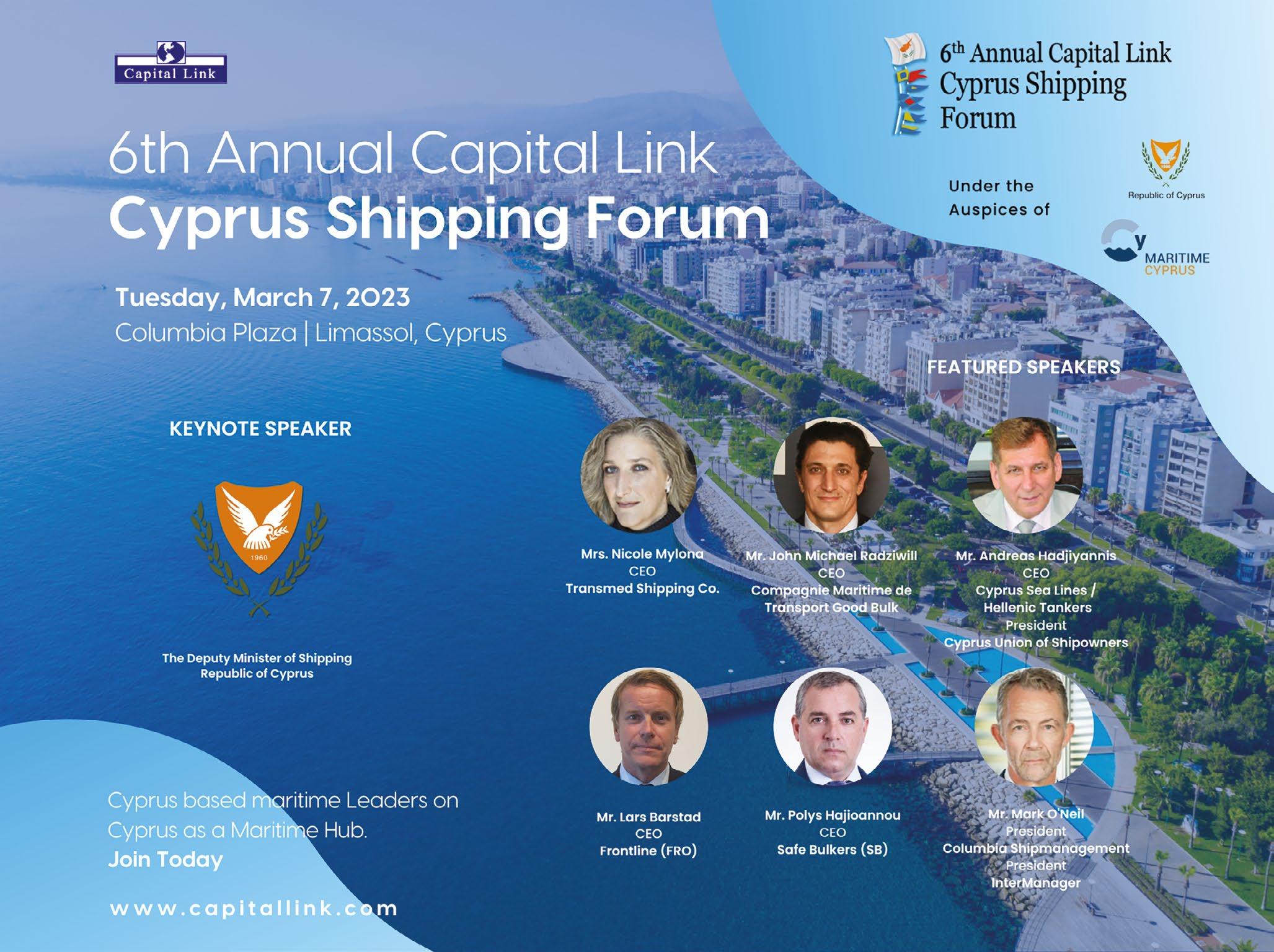
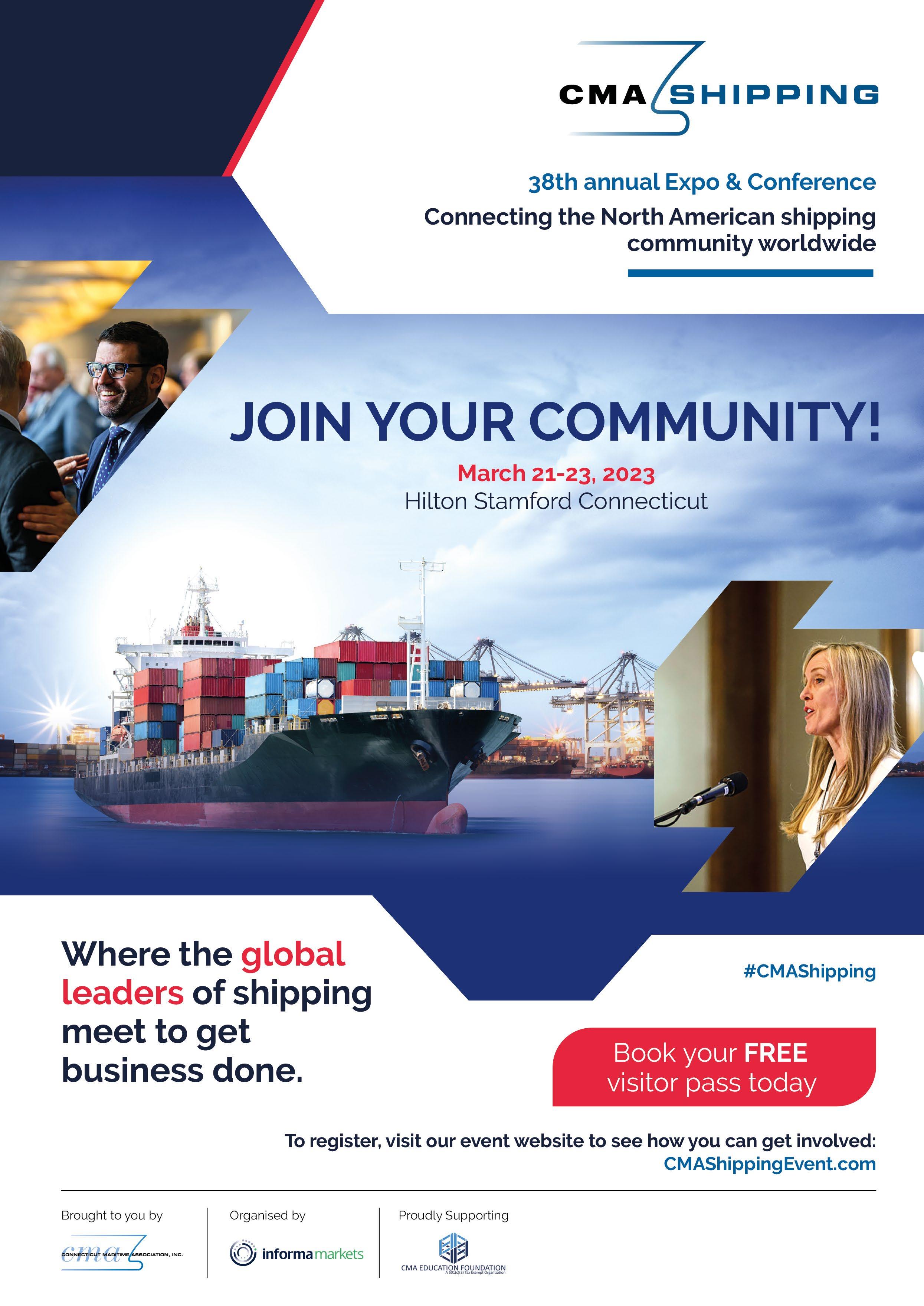
Technical
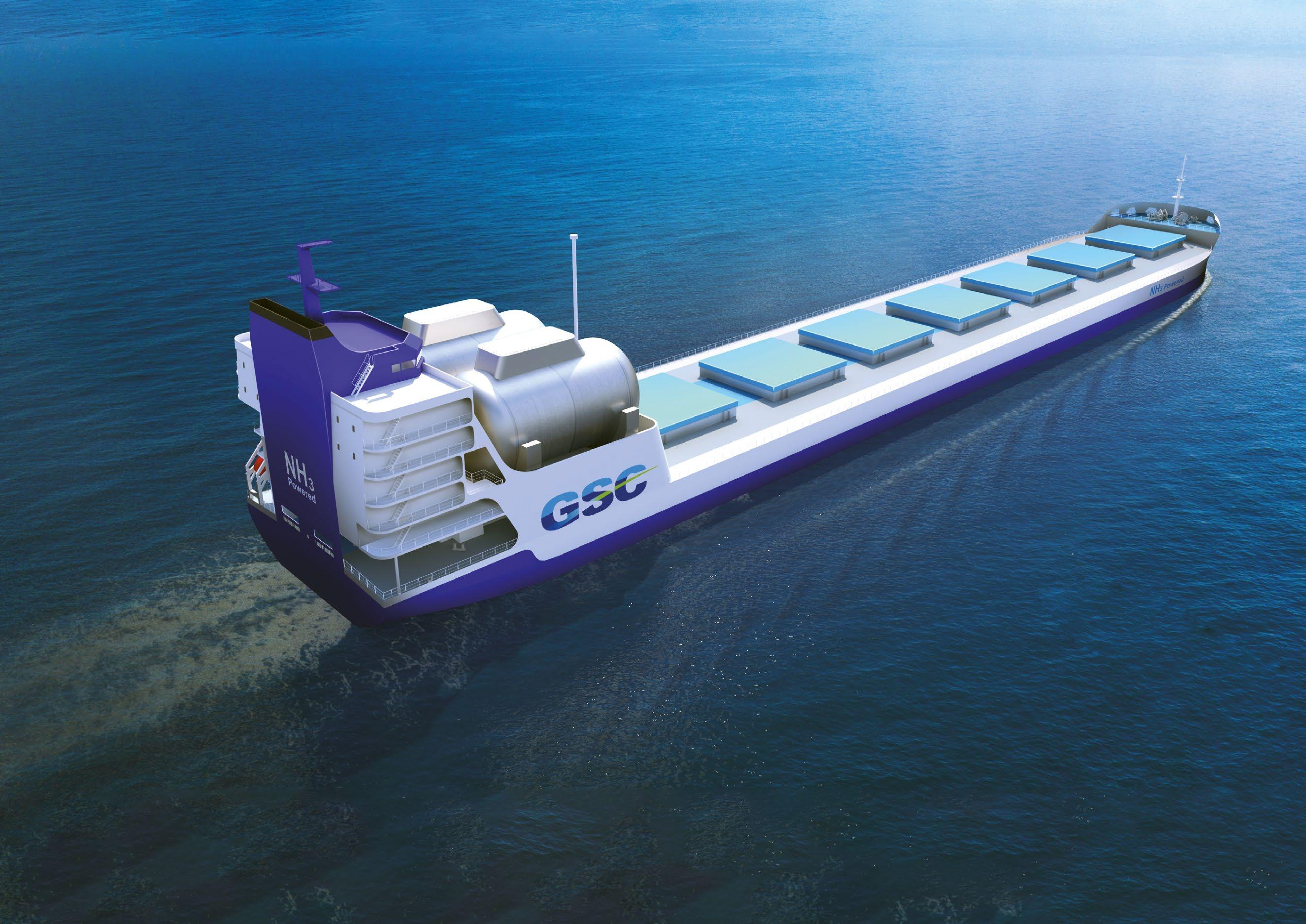
‘Greener’ designers for bulkers, the commodity carriers
By David Tinsley
While displaying ever-greater application to measures and technologies that accord with the energy transition, the bulk shipping sector has been forthright in raising concerns over the new Carbon Intensity Indicator (CII) regime.
Although increasing investment and intensified R&D in the sphere of ‘greener’ solutions testify to bulker owners’ belief in, and support of, the IMO’s bid for a zero-carbon future, at issue is the formula used to determine CII rating. Shipowners and their representative bodies infer that the calculation fails to address practical and commercial realities faced by vessels in operation and could be counter-productive by leading to increased emissions. The desired decarbonisation goals, it is contended, can only be realised by focusing on actual emissions reduction and ultimately by providing the shipping industry with alternative, viable zero-carbon fuels.
In terms of actions initiated by the sector, the realisation of LNG dual-fuel propulsion in the Newcastlemax bulk carrier segment denoted an important juncture in tackling greenhouse gas (GHG) emissions intensity within the large dry cargo vessel category. With the capability to use LNG as the main fuel, the 180,000dwt HL Eco and HL Green entered
service transporting raw materials for South Korea’s steel industry at the start of 2021, less than three years after the dual-fuel mode had made its debut among bulkers by way of the South Korean-owned, 50,000dwt Ilshin Green Iris and the Finnish-owned, 25,600dwt Viikki.
The uptake of such powering solutions quickly gained momentum, and reached a new stage during early 2022 with the entry into service of the first of five Chinese-built, LNG dual-fuel, 209,000dwt Newcastlemax bulkers ordered by Eastern Pacific Shipping (EPS) on the back of BHP charters to transport Australian iron ore to China. The Singaporeanbased owner subsequently booked a further and more extensive series of 210,000dwt LNG-capable newbuilds from New Times Shipbuilding on the strength of charter commitments from Rio Tinto.
The accelerated nomination of LNG for large vessel powering reflects the pragmatism that is a core characteristic of the shipping community. Although there is now a general acknowledgement that LNG usage has its limitations as an environmentally virtuous alternative to conventional marine fuels, due to its hydrocarbon composition, it stands out as a practical, interim solution on the road to decarbonisation.
Ammonia-fuelled 80,000dwt bulker, as proposed by the Japanese shipbuilding industry
As a consequence of this more circumspect view of LNG, other options are coming into play, reflected in a host of new bulker design proposals and technical collaborative ventures promising to confer ‘greener’ credentials on the workhorses of world trade.
An innovative recent step was the signing of a joint project by bulk shipping specialist Maran Dry Management with RINA and the Shanghai Merchant Ship Design & Research Institute (SDARI) to develop an LNG/hydrogen-fuelled, 210,000dwt Newcastlemax type. The concept is one of applying gas reformation technology to the ship’s LNG fuel to produce hydrogen and CO2 before combustion, with the potential to meet IMO 2050 criteria. The solution’s merits lie in the precombustion carbon capture principle and in the onboard, ondemand supply of hydrogen, allowing the running of the vessel on increasing percentages of hydrogen, lowering emissions over time to meet increasingly stringent rating thresholds.
China’s move to inject longer-term commercial resilience into its shipbuilding offering is exemplified by new bulker design proposals wherein primary power is delivered by machinery using emergent marine fuels. An addition to the expanding portfolio is a 210,000dwt methanol dual-fuel Newcastlemax type for which American Bureau of Shipping (ABS) has granted an Approval in Principle (AiP) to China Ship Design & Research Center (CSDC) and CSSC Qingdao Beihai Shipbuilding. ABS earlier collaborated with SDARI and the Singapore-based company SDTR Marine in the development of an 85,000dwt methanol-fuelled bulker. SDTR, which deploys modern Kamsarmax tonnage, provided the main operational data.
According to market sources, Brazilian mining giant Vale has approached Chinese yards with regard to its plans for a major new stage of fleet investment in very large ore carriers (VLOCs) and is currently assessing possible LNG dual-fuel or methanol dual-fuel powering options.
An unerring drive for productivity gains, coupled with a focus on continual refinement of designs crafted for series production has seen Japan’s shipbuilding industry retain a high profile in bulker construction, notwithstanding the strength of the competition from China. Applied across the bulkship spectrum, including Capesize, Newcastlemax, Panamax, Kamsarmax, handymax and handysize types, this approach translates into incremental improvements in ship efficiency and performance at minimal price premium.
Rather than relinquish what some might view as a less sophisticated sphere of the market to China and potentially other low wage-cost shipbuilding countries, Japan has shown its mettle in developing new designs conducive to standardisation while encompassing systems and features that play to heightened environmental standards and efficiency expectations.
This has taken initial form in LNG-fuelled designs proposed and in some cases implemented in newbuild projects across different bulker categories, and is now being augmented by draft designs embracing alternative fuel solutions that better meet zero-emission goals or timelines.
ClassNK recently issued an AiP for an ammonia-fuelled 200,000dwt bulker type developed in concert by Itochu Corporation, Nihon Shipyard, Mitsui E&S Machinery, K Line and NS United. Ammonia has the merit of emitting no CO2 when combusted but does require adequate safety measures due to its toxicity and corrosive properties, addressed in the design review by risk assessment through a hazard identification (HAZID) study. Fulfilment of a newbuild scheme is envisaged for 2026.
Complementing corporate and joint industry strategies, government-backed endeavours to foster shipbuilding revitalisation through an emphasis on ‘greener’ ships give due prominence to accomplishing such technological advances in the bulker sector, as to other fields such as container ships.
Allied with the long-term, national goal of becoming a carbon-neutral society by 2050, Japan’s maritime cluster in association with the Ministry of Land, Infrastructure, Transport and Tourism (MLIT) has drawn up a road map that sets an immediate objective of commissioning a first-generation, zeroemission ship into international trade as soon as 2028.
Four concept designs have been identified, dubbed the C-ZERO series, and these include a 102,000dwt, 229-metre bulker using LNG and synthetic methane in conjunction with a range of energy-saving technologies, and an 81,000dwt, 233-metre bulker design powered by ammonia-capable propulsion machinery. Cross-industry consortia are being sponsored to develop the various design projects, supported by the Green Innovation Fund initiative.
The country’s nine leading shipbuilders together with other industry stakeholders are working together under an initiative entitled the Planning and Design Centre for Greener Ships (GSC), to develop vessels offering advanced environmental performance. An early outcome of the GSC endeavour is an ammonia-fuelled, Panamax bulker design for which ClassNK has granted an AiP. The classification body reviewed the ammonia treatment measures, fuel piping system, hazard prevention as concerns flammability and toxicity, and emergency evacuation.
As a further option, ClassNK has similarly endorsed a subsequent, ammonia-ready, LNG-fuelled version of the Panamax type. GSC’s concept is that, for the short-term, the vessel could achieve lower CO2 emissions (than a conventionally powered ship) by operating on LNG, while providing in the longterm for a move to net zero CO2 either by facilitating conversion to ammonia-fuelled propulsion or by switching fuel from LNG to carbon-neutral, liquefied methane. l
95 Issue 101 January/February 2023 Ship Management International 94 Ship Management International Issue 101 January/February 2023
Technical

A Q&A with the IMMERSEAV VR team on their new Virtual Reality Maritime solution for the Experiential Competency and Cognitive profiling of seafarers
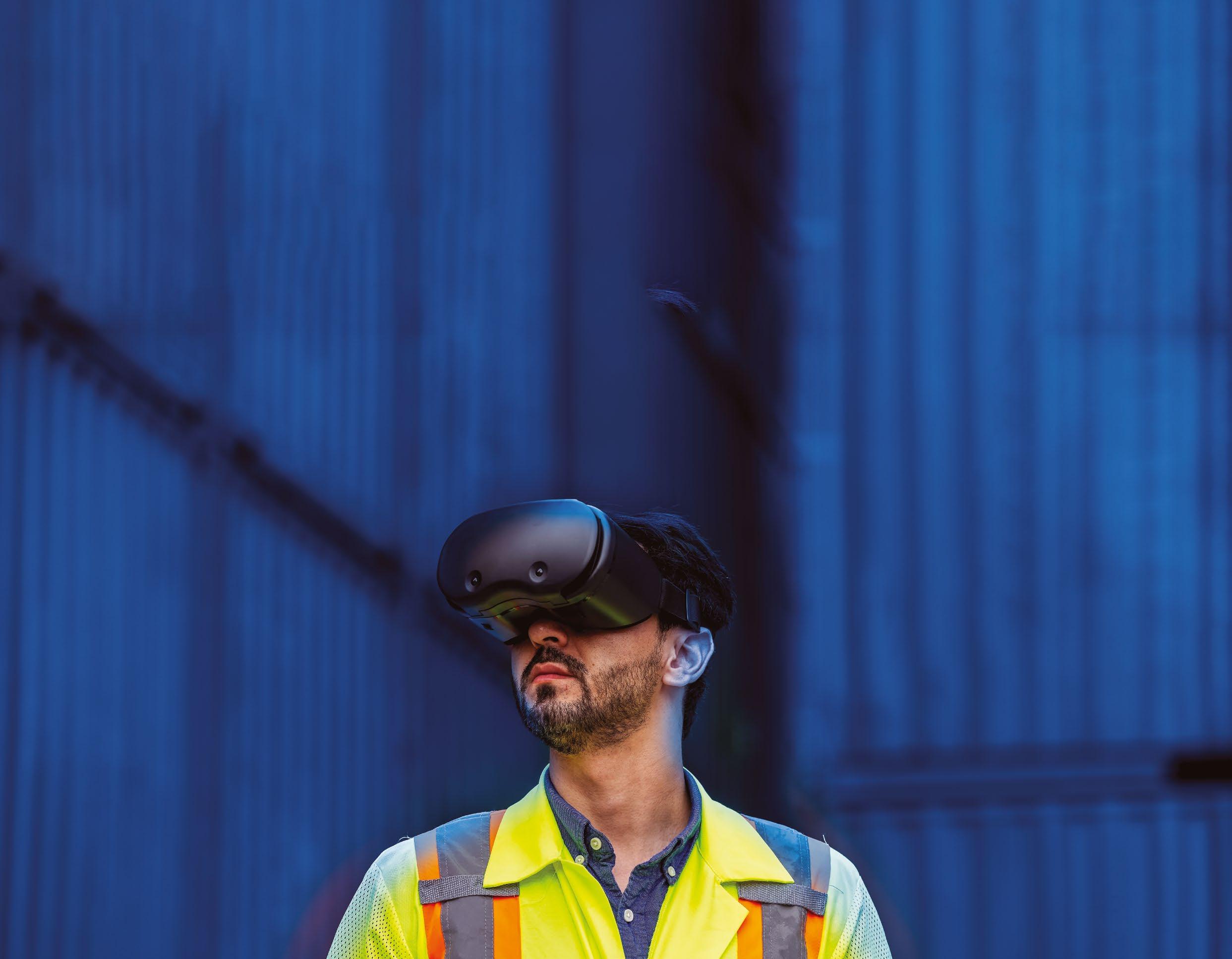
Cypriot company IMMERSEAV Virtual Environments, established in 2018 and operating under the Prevention at Sea Group, launched its innovative Virtual Reality Maritime solution to help minimise maritime accidents in November 2022. The launch followed four years of research and development, in close collaboration with reputable shipping stakeholders.
The IMMERSEAV solution capitalizes on the ‘prevention’ approach of ‘Prevention at Sea’ and blends under the same roof maritime expertise, Virtual Reality technology and scientific knowledge from Psychology and Neuroscience.
Q: What is the problem that IMMERSEAV helps the maritime industry solve?
Petros Achtypis, CEO Prevention at Sea: ‘From EMSA (European Maritime Safety Agency) reports we know that commercial ships were involved in over 19,000 accidents in the last five years. Most of these maritime accidents refer to collisions, fires, explosions, ships being lost, injuries and other safety-related incidents that are caused by human error and unsafe behaviour.
“The International Safety Management (ISM) code and STCW provided hope that continuous training and certifications
would make seafarers act and behave safely during their service on board. Yet, the persistence of the human failure and unsafe behaviour over the years, suggests that more needs to be done.
“The conclusions from scientific research on mental health are communicated to the maritime industry by the recently released INTERTANKO/OCIMF Behavioural Assessment guides, clearly stating that new assessment and training tools are needed to enable shipping companies staff their ships with skillful, well-trained beyond typical STCW courses, and psychologically resilient personnel.
of Selective Attention, which allows people to select for further processing information that is relevant to the task in hand and ignore the rest. In turn, Selective Attention prioritizes information for gaining access to Working Memory, a capacity-limited store that is used to control behaviour, such as preparing and executing motor responses, producing verbal responses etc.).“
“Cognitive mechanisms, such as Selective Attention and Working Memory are largely overlooked during the hiring process. For example, hiring personnel usually involves in-person or remote interviews via video calls, and typically relies on administering basic tests to evaluate skills and technical knowledge. Staff is also trained before embarkation or while on board by various means such as video-based e-courses.
time, seafarers are expected to remain up to date with regulations and take the correct and appropriate decisions in a very short timeframe, building a potential volcanic mixture of risks that could easily escalate.
“The expectations and demands are thus very high, making work in the maritime industry from any position a very challenging task. In most cases, the task involves decision making under stressful situations or limited time, critical thinking, correct judgement, and implementation of the regulations etc. “
Q: How does IMMERSEAV work?
Q: What can the industry expect from IMMERSEAV in the future?
Petros Achtypis: “The Library of Maritime VR tasks is constantly updated. The aim of our solution is not to ban seafarers from entering the maritime industry or discourage crew managers to hire candidates of low indicators. On the contrary, these experiential VR tasks provide a way to test and train personnel in interactive and highly realistic conditions that mimic those that are, or may be, encountered on board.
Q: How can science help the maritime industry and seafarers to improve safety behaviour?
Professor Marios Avraamides, an expert Cognitive Scientist at the University of Cyprus: “Being a seafarer is one of the most difficult professions associated with acute stress, anxiety, and fatigue, which often lead to more chronic conditions such as depression. Such mental health conditions, either acute or chronic, have detrimental effects on the daily cognitive functioning of seafarers.
“For example, we know that stress and anxiety affect negatively the mechanism
“This model of evaluation and training, is used in the shipping industry over the last 20 years, and has been helpful for various aspects of the job, e.g., highlighting bad practices, showcasing errors from the past or communicating existing or forthcoming regulations and so on. However, we identified some notable disadvantages such as for example, it does not provide full immersion and interaction with the working environment, it does not evaluate or train personnel in actual and realistic conditions and there are clear limitations in assessing safety or cognitive behavior under stressful conditions.”
Q: What problems have you identified in the professional cycle of seafarers?
Dr Kleanthis Neokleous, Group leader at CYENS Research Centre and head of IMMERSEAV product development: “Seafarers spend long periods of time on board, away from their families and friends; they must socialize with colleagues from diverse cultural backgrounds, and cope with challenging conditions in rough seas, strong winds, high or low temperatures. At the same
Petros Achtypis: “IMMERSEAV solution is not just another VR training system; it is built using a wireless VR Headset operating both online and offline and consists of a library of various Maritime VR scenarios. Seafarers are immersed individually or as a team on a virtual ship and they are invited to carry out tasks for training purposes or tasks that assess their competency skills and cognitive performance. Furthermore, these tasks can be carried out either under normal or stressful conditions, allowing IMMERSEAV to determine resilience to external stressors. Results are securely kept under the candidate’s account on the cloud, in line with the GDPR rules.”
Q: How can a shipping company, manning agents and seafarers benefit from IMMERSEAV?
Dr Kleanthis Neokleous: “IMMERSEAV identifies key metrics of seafarers’ cognitive behaviour and competency skills that lead to their overall safety behaviour and helps shipping companies benchmark new seafarers joining the company against the existing pool of seafarers, identify training needs and set up a personalized training scheme per seafarer executed on a Maritime Virtual Environment. IMMERSEAV also offers the ability for a Trainer and a team of seafarers to join the VR task remotely for different places at the same time.”
“Notably, quantitative data about performance are recorded during usage, allowing the seafarer or their managers to assess their performance and progress on certain critical items that have been identified from our long maritime experience but also regularly reported by International Maritime Bodies and Classification Societies.
“Thus, a personalized training can be formed dedicated to the individual’s identified needs whilst the shipping company is aware of the level of individual’s skills, the overall skills level of their pool of seafarers divided in rank, age, nationality, gender etc. and based on that, they are in a better position to know what to expect, create optimum crew synthesis, monitor improvement over years and enhance technical skills on certain ship’s operations, spaces and machinery.
“We are confident that we have built a solution aligned to TMSA (Tanker Management and Self-Assessment), DryBMS (Dry Bulk Management Standard) requirements that fits to all needs and is in the correct direction of minimizing accidents in our industry.” l
For more information about IMMERSEAV, please visit www.immerseav.com or talk to Prevention at Sea team at sales@preventionasea.com
96 Ship Management International Issue 101 January/February 2023
Maritime Safety 97 Issue 101 January/February 2023 Ship Management International
Objects of Desire
» US vintage pop
Impress your guests with this immensely popular and increasingly rare, Dr Pepper Vendo 81; the ultimate in American vintage style. Fully reconditioned and restored, inside and out, with a modern refrigeration unit, the subtle green livery is an iconic reminder of yester years. Pop a dime in the slot, throw the lever and grab your bottle, whether that be a chilled beer, a fizzy drink or a quarter bottle of champagne. Not quite so rare as the Dr Peppers, is the Coca-Cola version, available in iconic red.
Dr Pepper Vendo 81
£15,000
gamesroomcompany.com
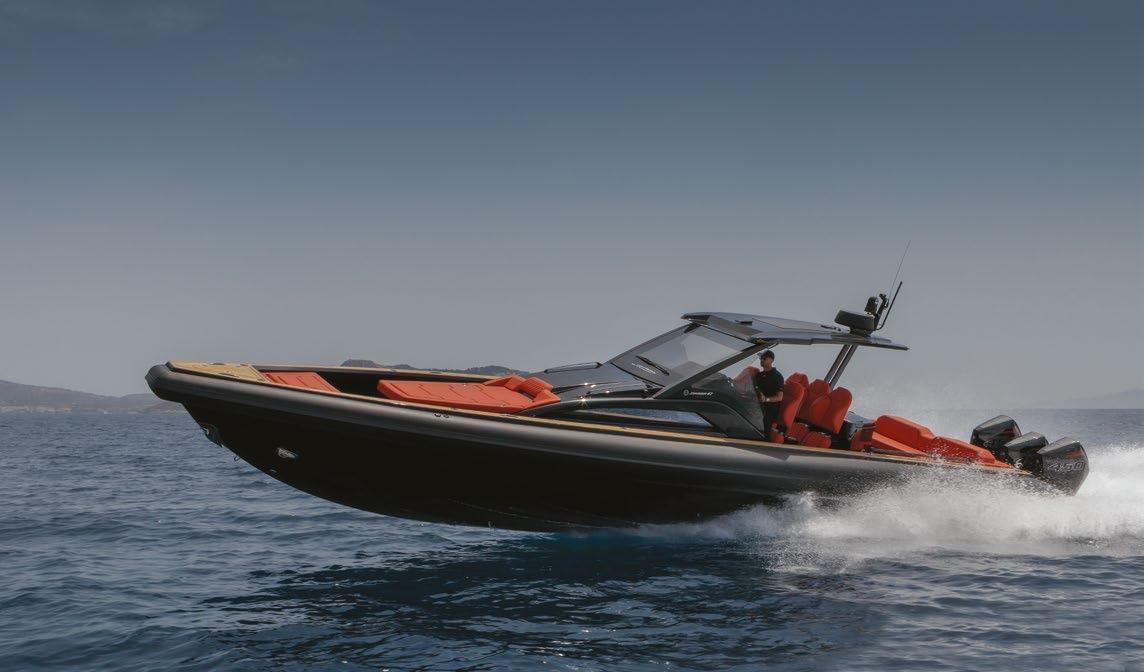

» Omega on water
Technohull Omega 47 is a breathtaking luxury boat, that combines top notch performance with superyacht comfort and finish. Versatility and ease of use, ample space and high quality finishes blend uniquely with the sophistication and dynamism of the brand’s design roots and high-class pedigree, while a top-class cabin offers the best you can get from a high performing 47-footer.
Technohull Omega 47 Price on application technohull.com

» E-bike-in it!
» A 1955 mini
Treat someone special with this classic Horsebit Leather Shoulder Bag by Gucci. Relatively plain by comparison to many, this timeless accessory will be appreciated by anyone who is chic enough. Versatile and understated and stylish enough for any occasion, use this day or night for a practical and all so classy bag.
Horsebit Leather Shoulder Bag
£110.00
Gucci.com
» Bespoke, luxury, fun
Lungolinea table tennis demonstrates the sophistication and ingenuity of Italian design and craftsmanship in the game of table tennis in classic, gold, wood or leather. If an all-glass game table isn’t luxurious enough, Impatia is delighted to have launched the Lungolinea Leather ping pong table designed by Adriano Design. Made exclusively in Italy, this sophisticated design piece boasts a refined glass playing surface complemented by exquisitely handcrafted leather legs, available in a range of ten finishes. Modern in design and rich in detail, the Lungolinea Leather embodies effortless elegance that ultimately sheds light on a beautiful way to have fun!
Lungolinea game tables
£25,000 impatia.com
Continuing with our slightly vintage theme, this Rayvolt e-bike certainly had us fooled. Replicating bikes from the early 1900’s, this modernday version looks the part yet runs on electric. In a range of styles and colours, including classic green and brown, it also comes more vibrantly in pastel shades of pink, green and blue, like the Beachin model pictured. Cool and sexy, its large enough for the beach and outdoor adventure lovers. Its tyres are perfect for cruising on the sand or riding dirt roads, yet it’s stable enough to manoeuvre quite easily.
See the full range online.
Beachin Electric Bike
£2,950 rayvoltbike.co.uk


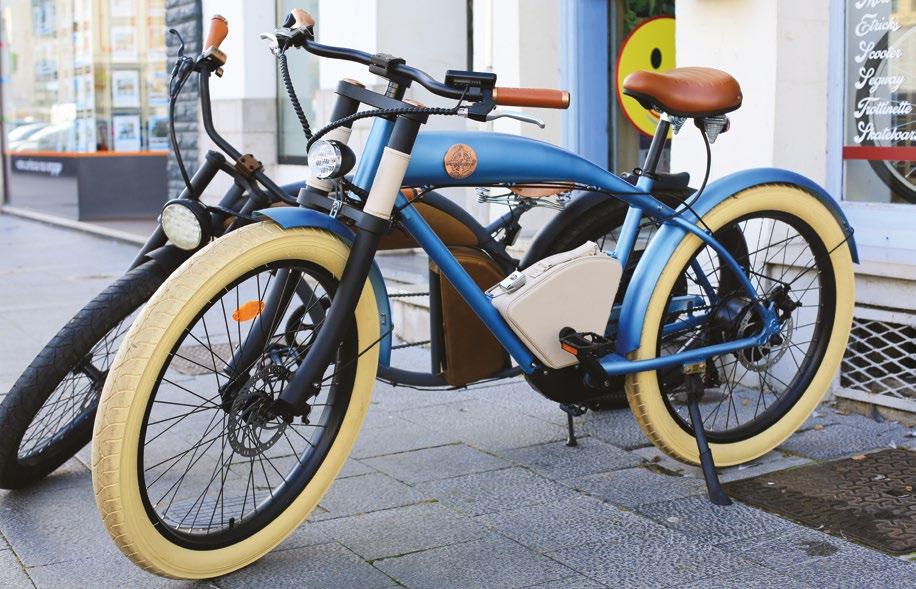
St Moritz is more than just for skiing which has visitors flocking including the rich and famous, year after year. In a stunning location which adds to the beauty and atmosphere, St Moritz is situated on the banks of a picturesque lake that shares its name. Après ski is a casual affair with a few spots attracting the afterski crowd. With little choice, options are pricey even by Swiss standards. Laying claim as being a foodie destination, comprising of high-end eateries in dramatic locations and Michelin starred restaurants, in January it hosts a gourmet food festival drawing some of the best chefs in the world keen to show their talent. It’s also synonymous for tobogganing; more specifically the notorious Cresta Run, a 1.2km natural ice run dating back to 1884.
stmoritz.com
99 Issue 101 January/February 2023 Ship Management International 98 Ship Management International Issue 101 January/February 2023
Objects of Desire
» Snow affair
Editorial credit: andersphoto / Shutterstock.com
Shutterstock.com
Editorial
credit: Traveller70 /
Montreal International Poetry Prize shortlists for Shipping nominee
Salim Bhimji is a shipping researcher, who has worked across the shipping industry for over 25 years providing commercial research to shipowners, ship operators and brokers. Not only this he is a poet and was nominated as a finalist for the Montreal International Poetry Prize. With a prize of $20,000 in the offing, it’s thought to be one of the world’s largest monetary prize for a single poem. Believing that “poetry has the power to make people stop and think in a way that few examples of the written word can,” his poem ‘Dereliction: And the ocean too weeps’ offers a unique perspective on the challenges ahead for the shipping industry as it struggles with ocean conservancy and climate change. It will be published in an anthology of sixty 2022 shortlisted entries, set to be taught in the English Literature curriculum at universities across North America.

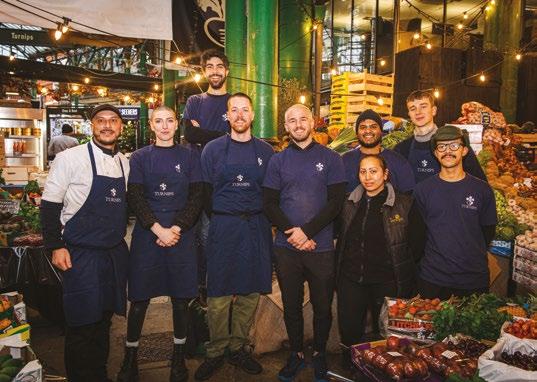
Fight THE SYSTEM
Turnips with Tomas Lidakevicius Borough Market, London
In response to the current negative rhetoric consuming our news and communities, from 15th – 25th February, Tomas Lidakevicius will lead his team in setting aside conformist consistency and by-passing the demand for perfect produce. Presenting a dish exactly the same each and every day, instead of the norm, dishes and menus will be flexible in order to reflect available ‘surplus’ produce. The primary intent will be creative improvisation, where chefs take advantage of the ingredients that are available, however imperfect and combine them in a harmony with taste and flavour. Over nine days, the team will offer their tasting menus for almost half the usual price, making their dining experience more accessible to more people. Concentrating on the surplus from their own kitchen and their trusted suppliers’ networks, the hope is to bring some joy while highlighting how perfectly good ingredients remain side-lined and classified as ‘leftover’ or ‘surplus.’

The Meaning of Geese
A Thousand Miles in Search of Home
Nick Acheson, Chelsea Green Publishing
Conservation expert and presenter, Nick Acheson spent the winter of lockdown in pursuit of the geese that fill his beloved Norfolk skies on their seasonal visits from Iceland and Siberia. Over seven months he cycles 1,200 miles –the exact length of the pinkfeet’s migration to Iceland. Over the course of seven months Nick keeps a diary of his sightings as well as the stories he discovered through the community of people, past and present, who loved them too. Yet, with the impacts of climate change the geese’s future migrations are no longer a given, and as spring arrives and Nick says goodbye to the last of the geese, the question of whether they will return the following seasons hangs in the air.
Johannes Vermeer
The Rijksmuseum, Amsterdam
10 February – 4 June 2023

In a once-in-a-lifetime exhibition this Spring, the Rijksmuseum in Amsterdam will bring together most of Johannes Vermeer’s paintings from around the globe. The artist only left behind around 35 works, making his paintings extremely precious and therefore rarely lent out by museums. Don’t miss this chance to experience the Dutch master of light’s spectacular œuvre first-hand, in one of the most-anticipated art events of 2023.
Editorial credit: Martin Bergsma / Shutterstock.com
Seamill Hydro Hotel & Resort

For anyone visiting the Glasgow region with its proud history of shipbuilding on the River Clyde, an ideal weekend break could be to stay at the Seamill Hdyro Hotel & Resort less than an hour’s drive outside the city centre in rural Ayrshire. Located on the waterside facing the majestic mountains of the Isle of Arran, the complex is set in a grand old Victorian hotel that first opened offering seawater cures back in the late 19th century. Fully modernised and extended a few years ago, it still features sumptuous spa facilities based around where the old saltwater bathing pool was, as well as gourmet dining and conference/ wedding facilities. Choice rooms are those offering views of the ‘mist rolling in from the sea’, as Paul McCartney evocatively sang in his famous 70’s hit about nearby Mull of Kintyre.
101 Issue 101 January/February 2023 Ship Management International 100 Ship Management International Issue 101 January/February 2023
Review
books, theatre, dining, events, culture, films, festival, music, art, dvd, wine
Ayreshire, KA23 9ND seamillhydro.co.uk
Open our selves that we may see, feel, hear and taste
wonderful things Lifestyle
An intergovernmental organization whose lofty purposes are “to maintain international peace and security, develop friendly relations among nations, achieve cooperation and be a center for harmonizing the actions of nations”, was founded on 24 October 1945, since when the not-so-united United Nations has witnessed the wreckage, death and devastation wrought by wars and conflicts between member states.
On 24 February 2022, Russia launched a war to wipe out the identity of an independent Ukraine.
“When all this is over, we will have to hold a grown-up and perhaps very difficult conversation about the UN. No institution is perfect or has supernatural powers to stop war or despotism, and perhaps nothing could have dissuaded Vladimir Putin from invading Ukraine.
But the UN’s failure to prevent one-fifth of its permanent Security Council from overrunning another member state should give us pause,” wrote Stephen Daisley in The Spectator.
As the war reaches its first anniversary with no sign of off-ramps, diplomatic manoeuvres or shuttles between Moscow and Kyiv, “the war,”

says the Brookings Institution, “has once again shown the veto power of UN’s Security Council’s five permanent members to be a major stumbling block to peace.” If not the well-padded home for a huge constellation of egos, or a veritable word-inflation factory of platitudes and panegyrics coddling 193 member states and employing almost 200,000 people, what then is the point of the United Nations? And what do baguettes, camelwhisperers, truffle-hunting and pizza-making have to do with it?
wand, baton), France’s most quintessential culinary symbol, was added to the heritage list. French bakers call the confection of flour, water, salt and yeast as “le pain qui chante” (the bread that sings). President Macron, who has fought long and hard for the baguette to be recognised, said: “The baguette is envied around the world; it is 250 grams of magic and perfection in our daily lives.” Fier d’être Français!
by Margie Collins
The UN works with several autonomous specialised agencies including the World Health Organisation, the International Labor Organisation, the International Monetary Fund, the World Bank and a body that has come to be seen as stewards and guardians of the earth’s treasures – the United Nations Educational, Scientific and Cultural Organization (UNESCO). It has no power to make warring combatants down arms, but it contributes to world security by engaging states parties to collaborate through education, science and culture, while protecting civilisational values and safeguarding the intangible heritage of, and for, humanity.
UNESCO, founded in the aftermath of WW2, protects monuments and communities from falling into neglect and wanton destruction, and allowing native peoples to leave their narratives, folk memory and marks upon the world for generations hereafter. Thanks to UNESCO, the remains of the Bamiyan Valley in Afghanistan, the Great Barrier Reef, the Old Bridge area of the old city of Mostar in Bosnia and Herzegovina, Tuscany’s Medici villas and gardens, Jordan’s Petra and many other sites have been marked for protection and preservation.
“The whole world is a series of miracles,” wrote Hans Christian Andersen, “but we’re so used to them we call them ordinary things.” Before UNESCO established its Representative List of the Intangible Cultural Heritage of Humanity, a universe of cultural traditions, skills and rituals was somewhat overlooked in the margins, degraded or died. UNESCO has given what appear at first glance as the mundane and trivial their rightful due, preserving them from extinction, celebrating ordinary people doing extraordinary things, and adding to the great conversations of mankind.
The 17th session of UNESCO’s committee for the safeguarding of intangible heritage was hosted by Morocco in December 2022 when the baguette (Eng:
France produces some 16m baguettes a day even while artisanal boulangeries struggle against the creeping popularity of sourdough, and superettes (small convenience stores) selling industrialised baguettes, contributing to the closure of traditional bakeries. “The baguette’s inclusion celebrates the French way of life,” said Audrey Azoulay, UNESCO’s director-general. “It’s a daily ritual, synonymous with sharing and conviviality.”
The art of Naples’ pizzaiolo (pizza maker who twirls the dough and bakes it in a wood-fired brick oven) has been handed down through generations and received heritage status in 2017. The genuine Neapolitan pizza has only two classic versions: the margherita (tomato, mozzarella, oil and basil), and the marinara (tomato, garlic, oregano and oil). Baffled pizzaioli mock the use of pizza toppings including Nutella and pineapple, describing these as “crimes against humanity.”
The world won’t starve from a lack of wonders, but from a lack of wonder. Nominations for inclusion in the list – a repository of some 600 culturally diverse elements - are submitted by states parties for evaluating by a UNESCO session. The register includes carnivals, woodcarving, pottery, folk songs, carpet-making, puppetry, truffle-hunting in Italy, the Mediterranean diet, etc. The summer solstice festivals in the Pyrenees, Indonesian batik-fabric making, Portuguese cowbells, khanjar (dagger) which forms part of the traditional dress worn by Omani men, Cremona’s violin craftsmanship and many others have all been recognised by UNESCO, as was the traditional Ukrainian dish of borscht which was inscribed in 2022.
From a young age, herders in Gulf countries learn alheda’a, the oral tradition of calling their flocks of camel; it joined the list in 2022. With rhythmically polyphonic chants accompanied by specific gestures and musical instruments, herders direct camels through deserts towards sites for drinking, feeding, milking, and warning camels of impending danger, such as sandstorms.
103 Issue 101 January/February 2023 Ship Management International 102 Ship Management International Issue 101 January/February 2023
Lifestyle
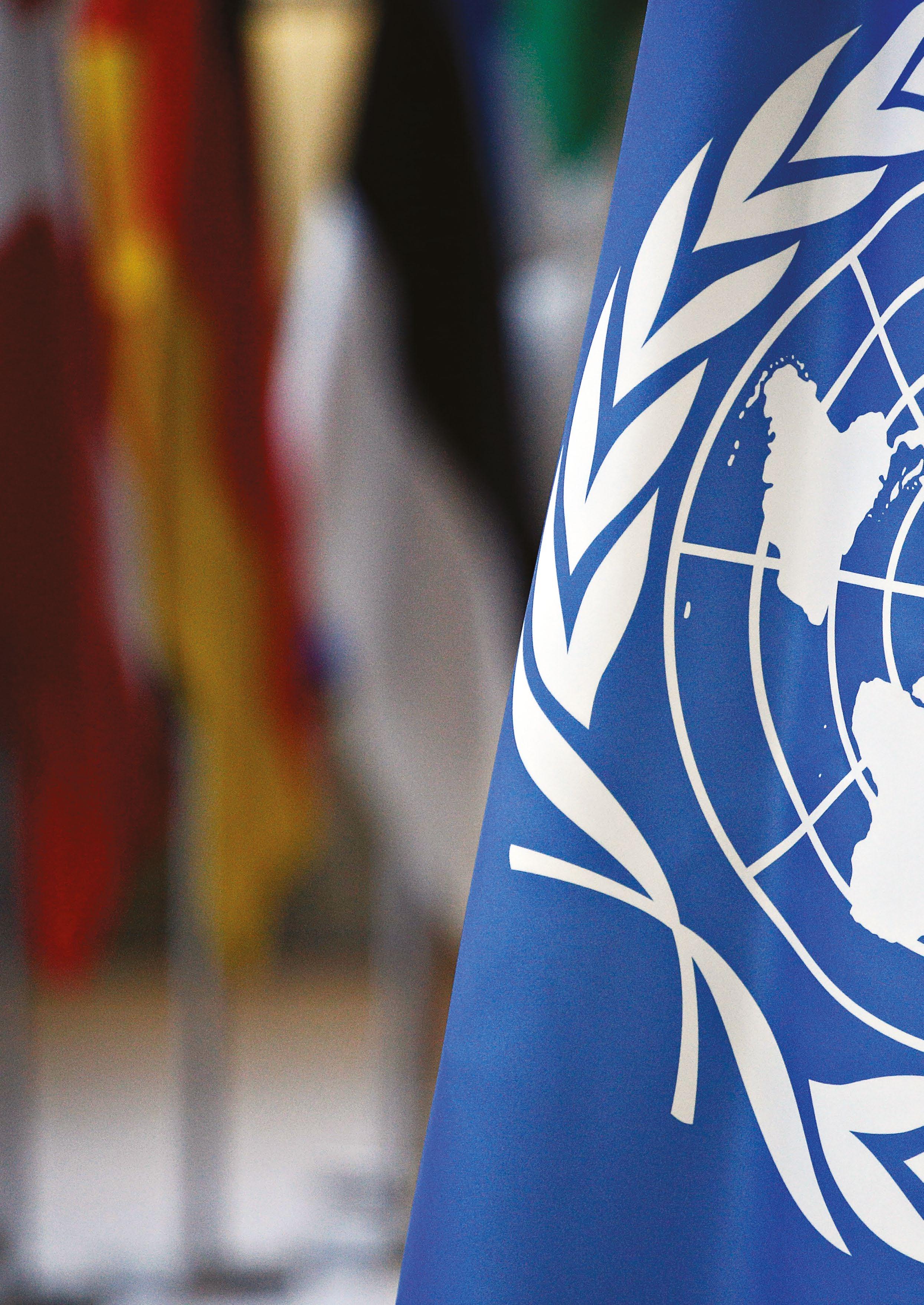
Saudade – a reference to tear-stained songs and poems expressing passion, deep longing, despair, nostalgia and melancholia – is the embodiment of the fado, the musical symbol of Portuguese culture and tradition. Inscribed in the 2022 list, fado (Eng: destiny) is typically performed in small fado houses by a soloist accompanied by an acoustic guitar and the guitarra, a pear-shaped 12-string lute.
Harissa - the main condiment of the Maghreb - is a fiery, garlicky North African red-pepper paste used in stews, couscous and savoury meats; it made it to the 2022 list. A ubiquitous and integral part of every Tunisian household larder and restaurant kitchen, harissa is made by drying chilli peppers, which are then washed, ground and seasoned with other spices.
Andalucia, Murcia and the Extremadura are the beating heartlands of flamenco. Inscribed in 2010, it is the most renowned and possibly most sensual form of Spanish artistic expression. Beloved of the gitano (gypsy) community, this dance was once considered vulgar, derided by the largely Catholic church, artists and intellectuals. “It often features the call and response known as “jaleo”,” wrote Sandie Holguin in ‘Flamenco Nation’. “It is a form of hell-raising involving hand-clapping, foot-stomping and audiences shouting.” Later it became the fashionable rage in Paris, with fans including Diaghilev and Debussy. “Flamenco today has undergone extreme commercialisation and renewed academic and artistic respect, once again demonstrating its complex relationship to Spanish national identity,” added Sandie Holguin.
In the wrong hands, coffee can sometimes taste like liquefied tarmac. In Arab society, qahwah is a symbol of hospitality and generosity, the serving of which is guided by elaborate etiquette and the use of the best Arabica beans. Poured from a dallah into tiny cups, Arabic coffee (inscribed in the 2015 list) is handed first to the most important person in the room, or the oldest guest.
“When Kaldi, a goatherd in Ethiopia, took his goats out to graze, he noticed that a couple of them eating berries from a bush were becoming frisky and energetic,” narrated writer Rohini Ramakrishnan. “They wouldn’t sleep at night. Kaldi reported this to the abbot of the local monastery. The curious abbot collected the berries and made a brew, which he consumed. It gave him more energy and kept him awake during the long hours of prayer. Soon news of these berries began to spread and by the 15th century, Arabic coffee reached the Arabian Peninsula; the popularity of the “wine of Araby”, as it was called, spread through pilgrims visiting Mecca. Ozdemir Pasha, the Ottoman governor of Yemen, introduced it in 1540 to Sultan Suleiman the Magnificent of Turkey.” And the rest, as they say, is roastery.
Turkish coffee culture, recognised in 2013, celebrates coffee houses which serve as centres of social and
community activities, livened by music, dances, chess and poetry readings. Regarded as “schools of the wise”, they host interminable and spirited discussions on the news and current affairs. Using Arabica beans, Turkish coffee - usually taken with a glass of water - is sometimes flavoured with cardamom and other spices, or served with Turkish Delight.
Did Britain not pass UNESCO’s sniff test? Where are the stout yeomen of good olde merrie England; oak-beamed centuries-old English pubs, the gentle thwack of leather on willow; rare Scottish whiskies of old bottlings and single malts, Morris dancing, the darling buds of May, Glastonbury, happy village fetes?
UNESCO has met with turbulence occasioned by countries joining, then withdrawing, then rejoining or suspending contributions. In 2017 the US decided to cut more than $80m of funding (22% of its budget) amid the controversy over Palestinian membership and perceived antiIsrael bias.
In the House of Lords in 2020 Lord Patten asked Her Majesty’s Government “whether they intend to sign the UNESCO Convention for the Safeguarding of the Intangible Cultural Heritage 2003, and if not, why not?” Baroness Barran, on behalf of HMG, replied: “The government recognises the contribution that the UK’s crafts, oral traditions and wider cultural heritage make to the country’s cultural life and encourages communities to celebrate and continue these practices for future generations. However, we have not seen any compelling business case for ratifying the Convention nor is it clear that the benefits of doing so would outweigh the costs.” Of the world’s 198 countries, 180 have ratified the Convention; the few recalcitrants include the US and Israel. As with its august parent, UNESCO is not immune to politicisation.
At a febrile time of fret and anxiety when museums, statues, libraries and universities are being “decolonised of the catastrophic errors and imperialist oppression of their past”, when culture is being “cancelled” and cultural icons thrashed, we long for moral limpidity and to surrender to the simple charms and delights of life’s daily miracles and people’s unheralded achievements, the merriment of the heart and of a soul in respair, the capacity for astonishment which is a requirement of the cultivated mind. A baguette with lashings of butter. A fado with your Turkish coffee. Shavings of truffle with your omelette. Mirabile visu!
“There are remarkable things all the time,” wrote Jon McGregor. “Right in front of us, but our eyes like the clouds cover the sun, and our lives are paler and poorer if we do not see them for what they are.” They are for us the implacable grandeur, the wonder of life, the diversity and creativity of the treasures of humanity. l
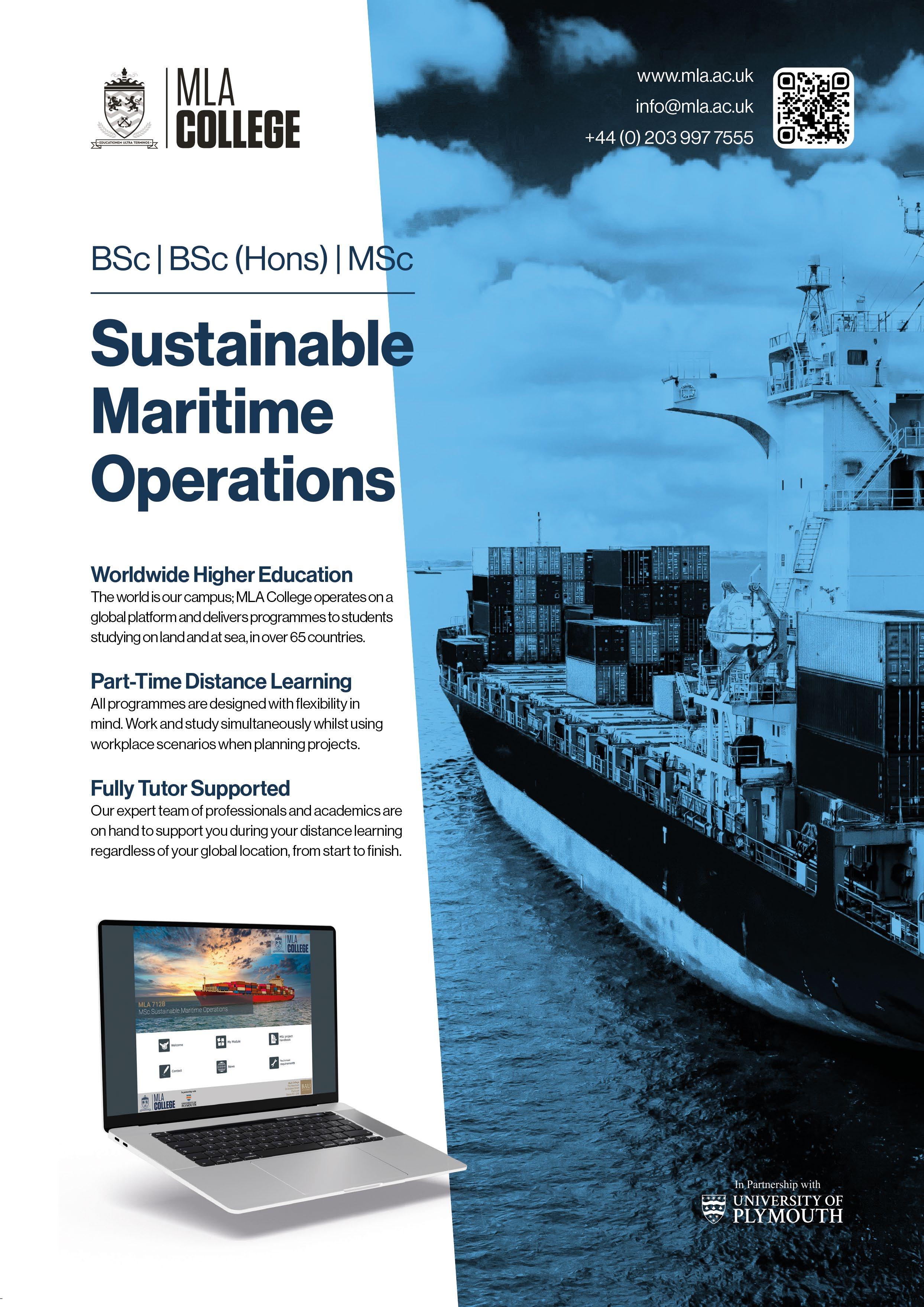
Lifestyle
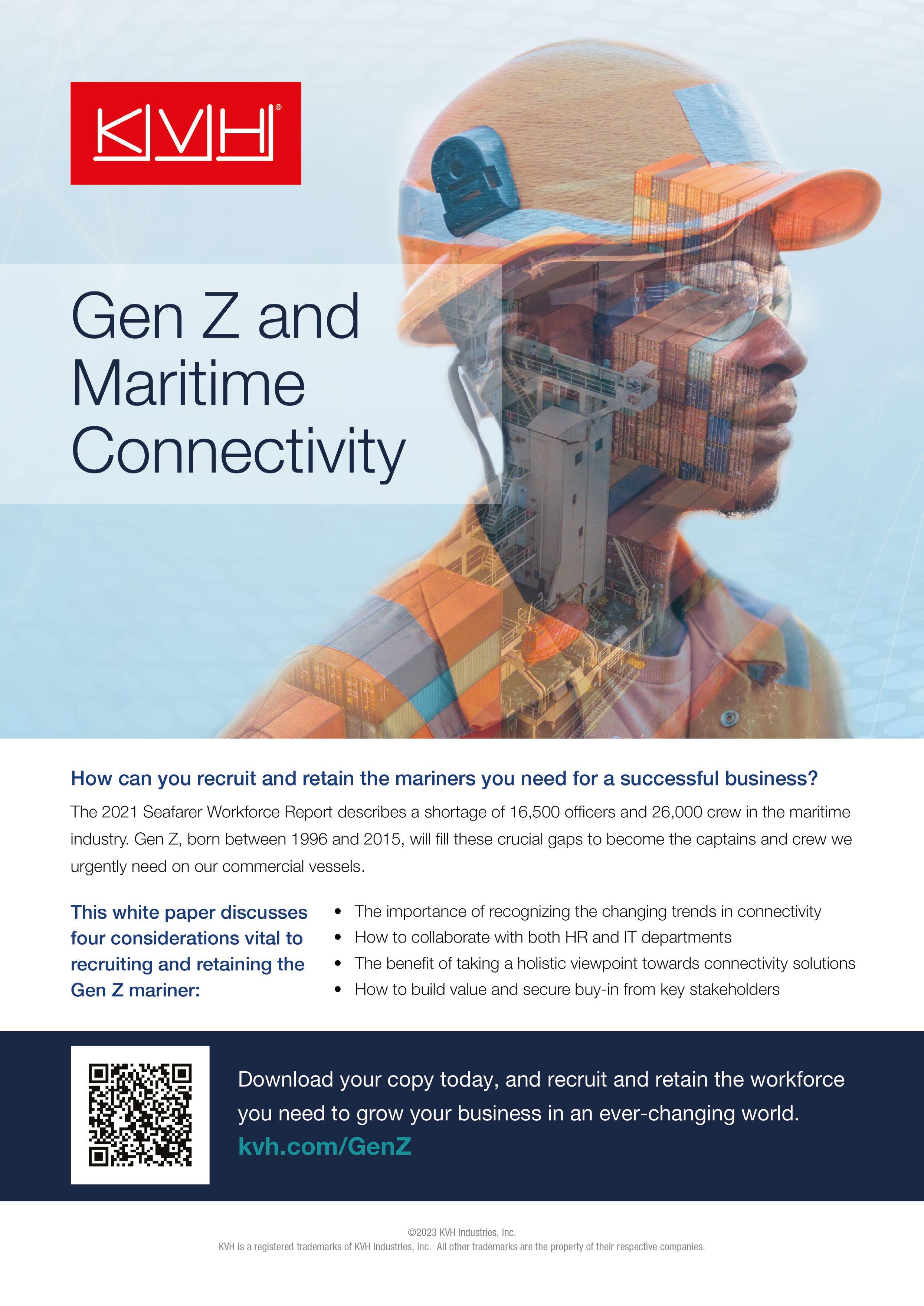

































 By Geraldine Koon, Legal Advisor, ITIC
By Geraldine Koon, Legal Advisor, ITIC




























 Catherine Logie
Catherine Logie

 By Heidi Heseltine, Founder of the Diversity Study Group, and CEO of Halcyon Recruitment
By Heidi Heseltine, Founder of the Diversity Study Group, and CEO of Halcyon Recruitment





































































 Tippett, Managing Director and CEO of the Dohle Isle of Man Group of Companies
Tippett, Managing Director and CEO of the Dohle Isle of Man Group of Companies
 Clarke, General Manager of Isle of Man Maritime
Clarke, General Manager of Isle of Man Maritime





































